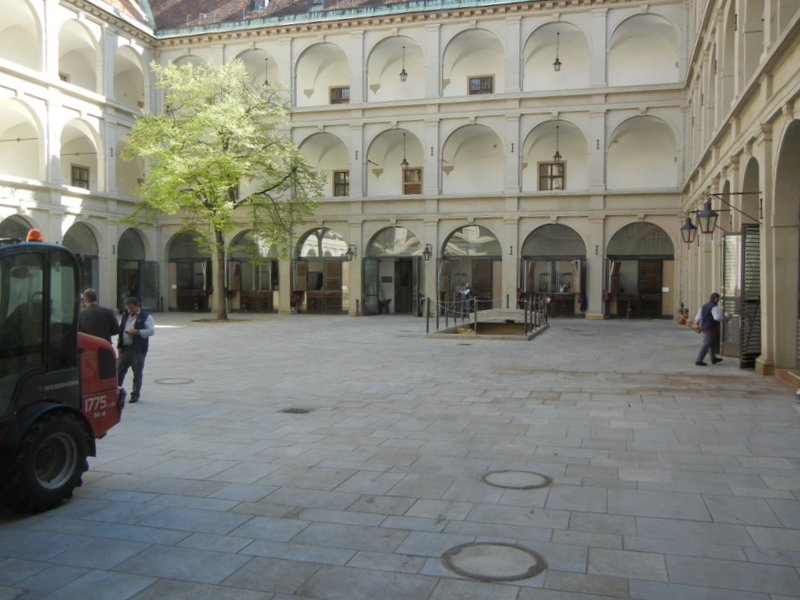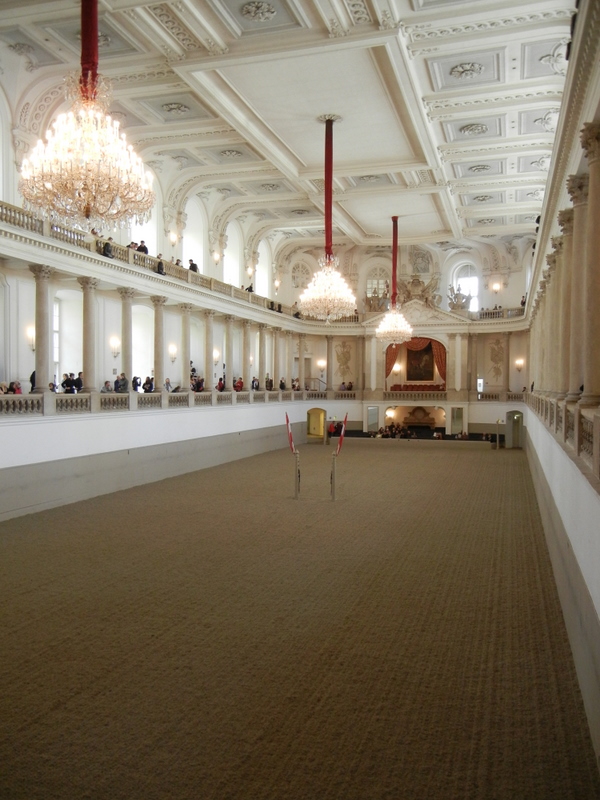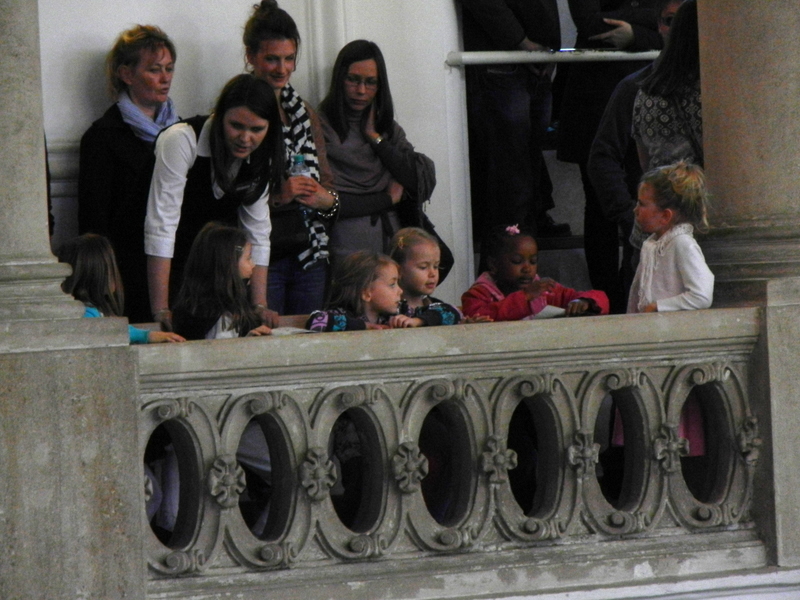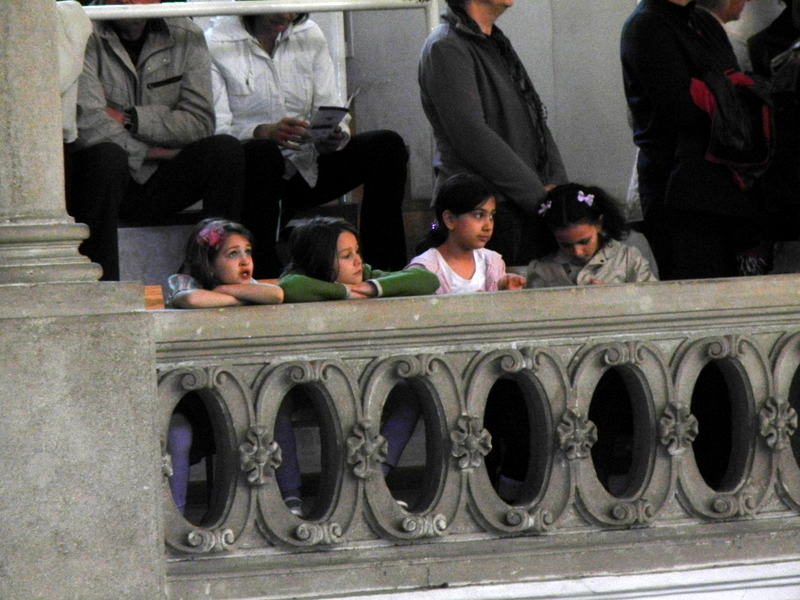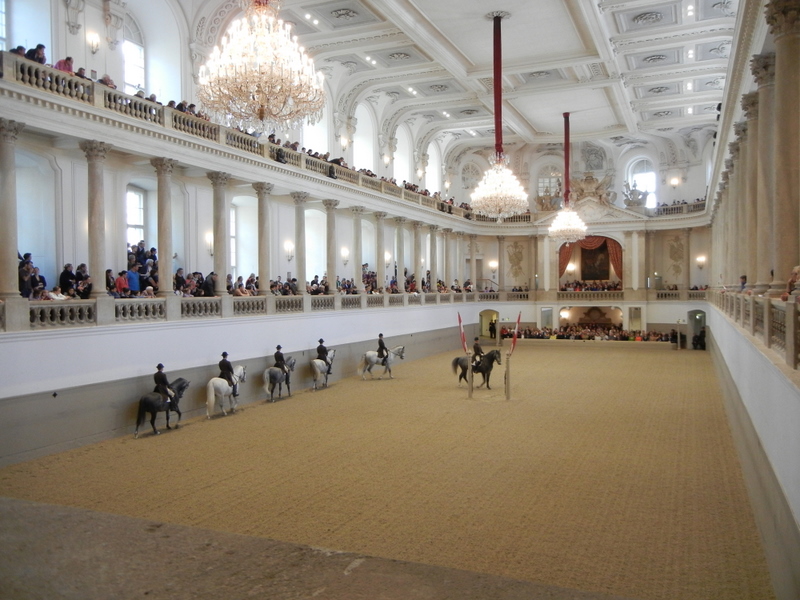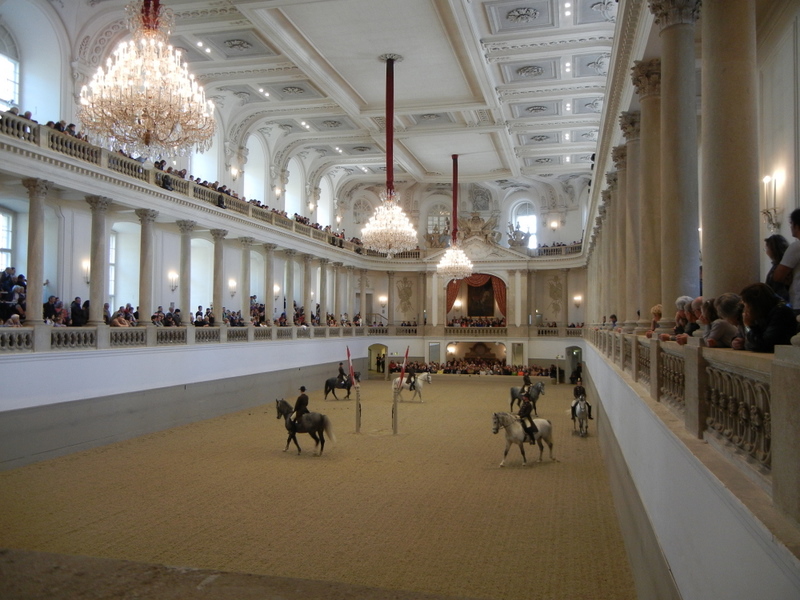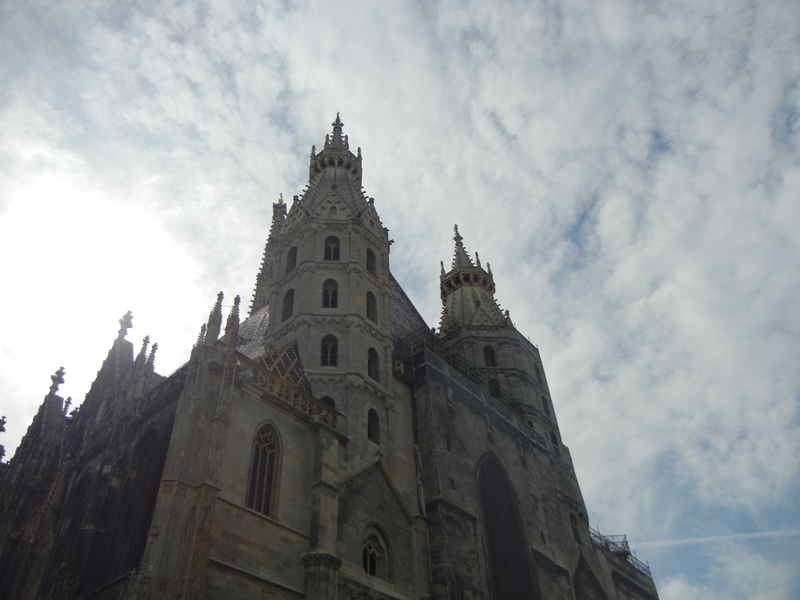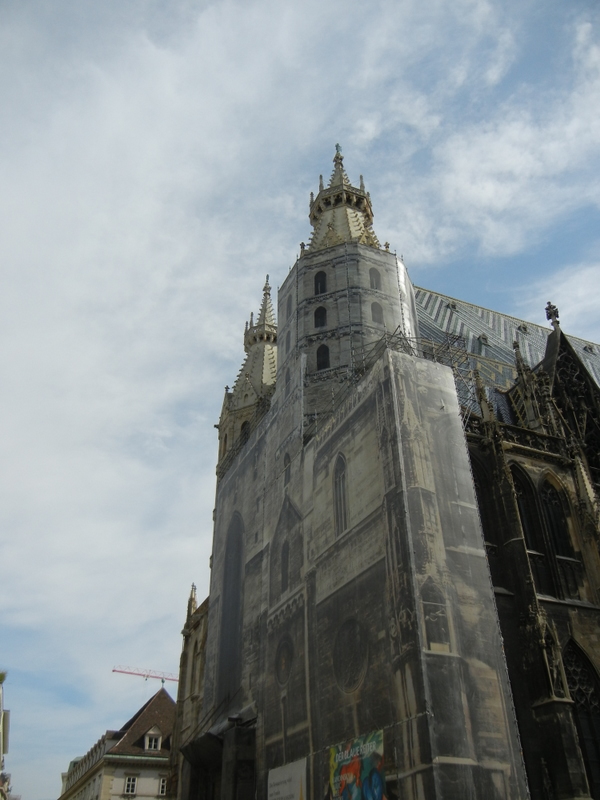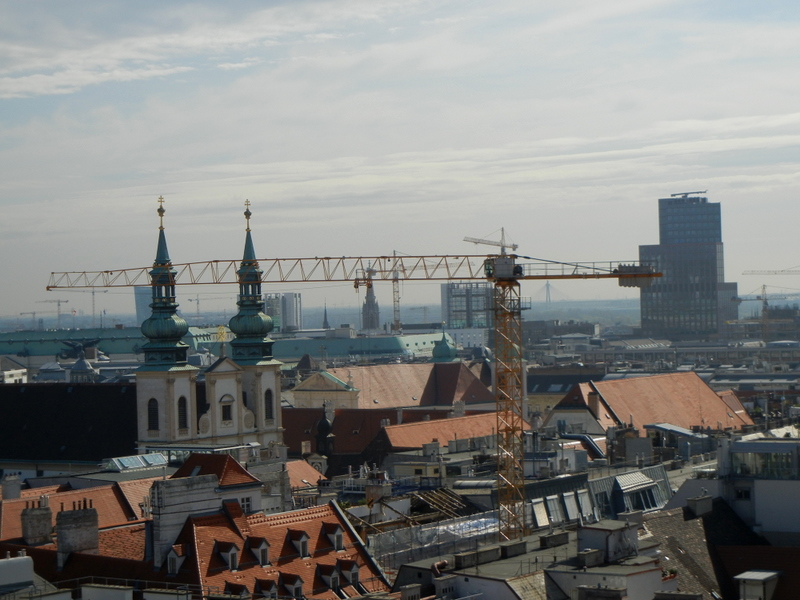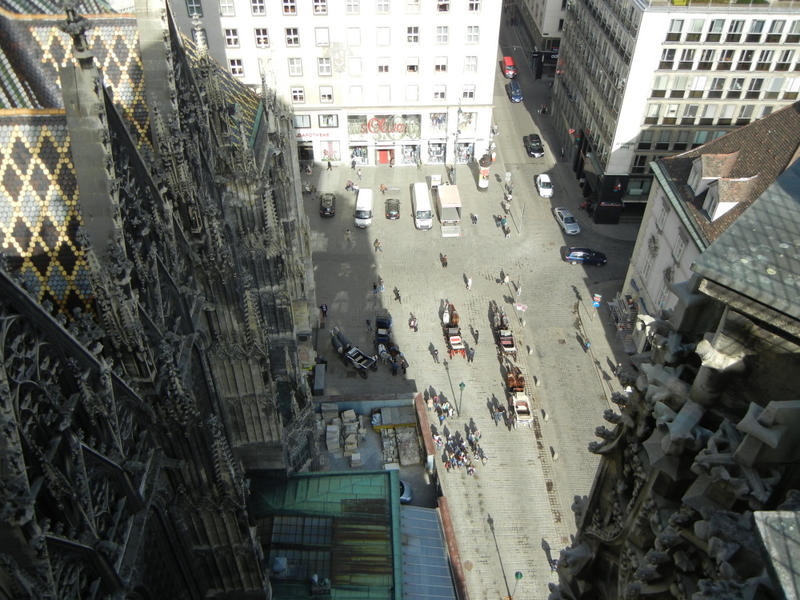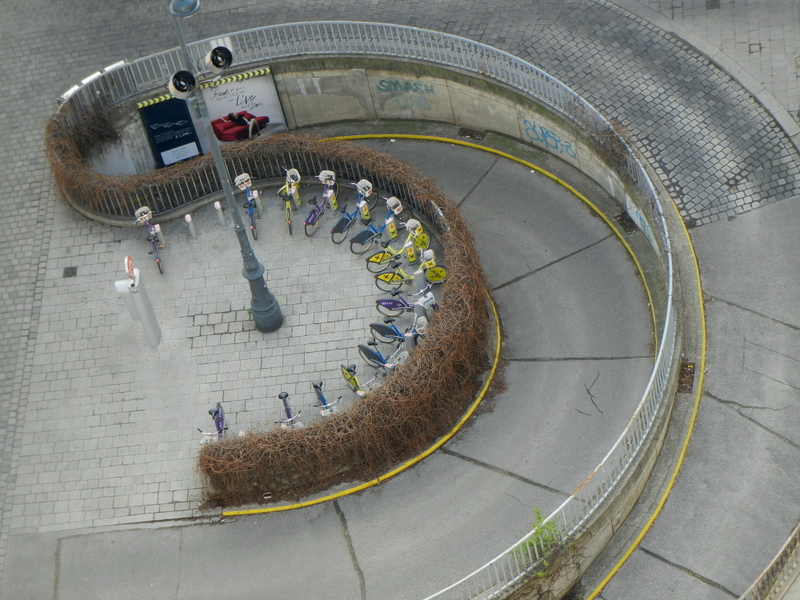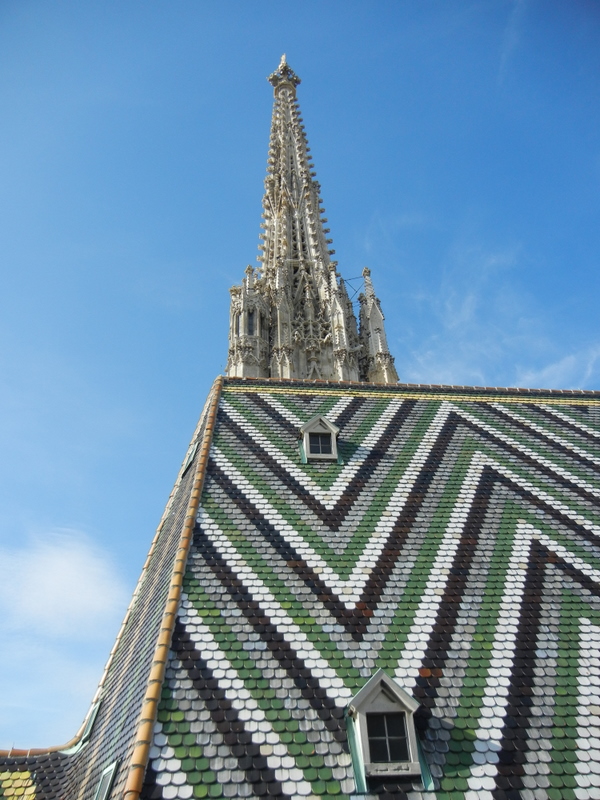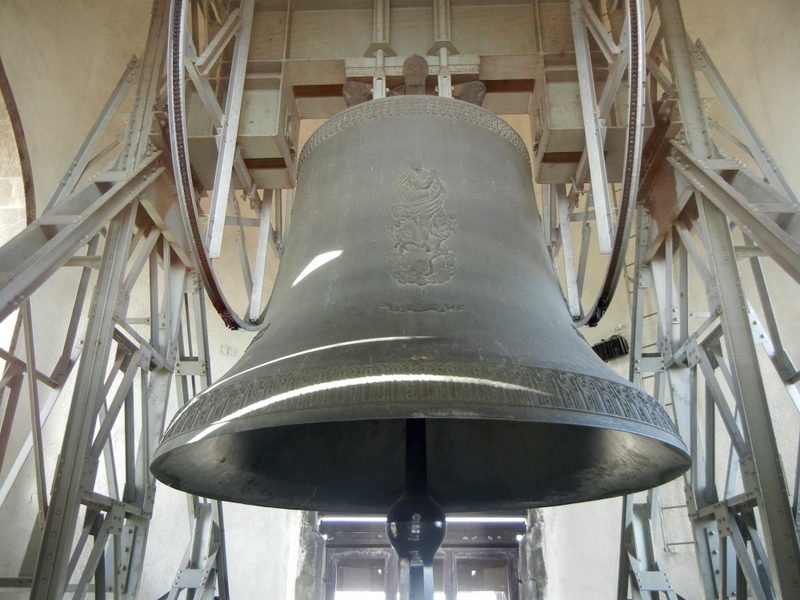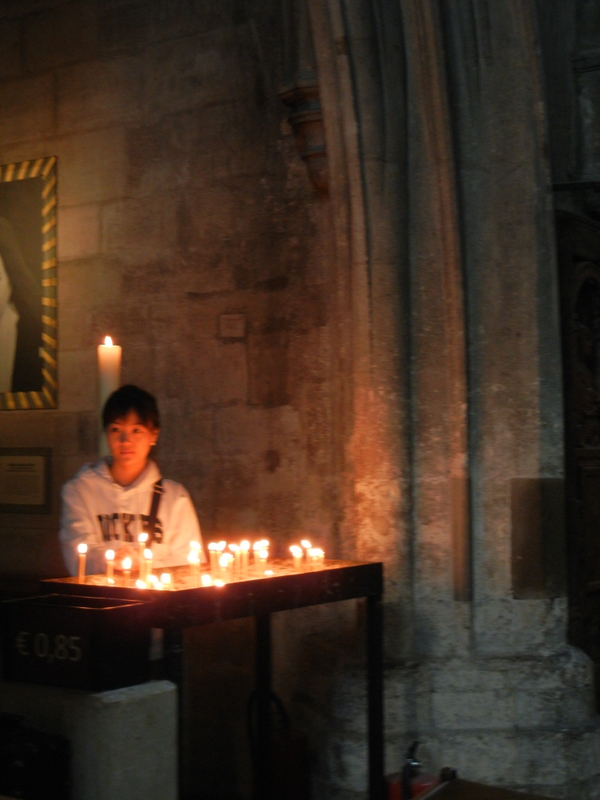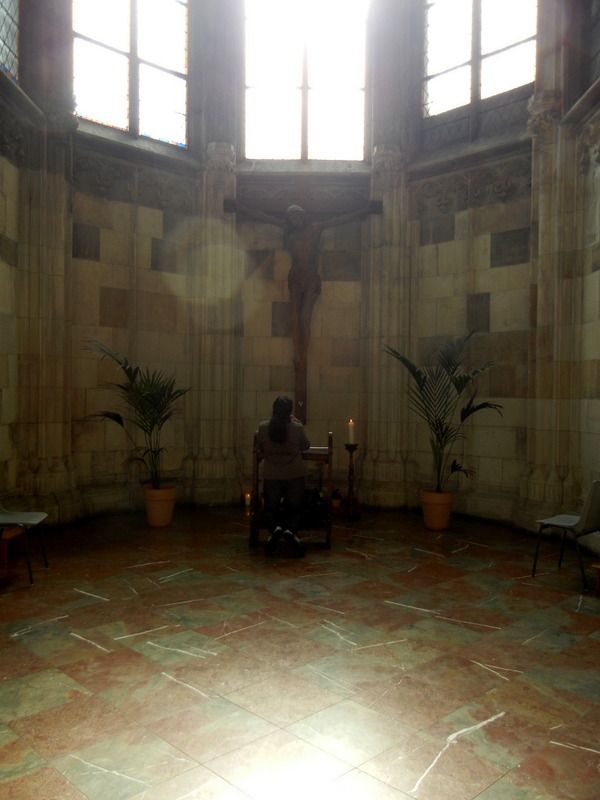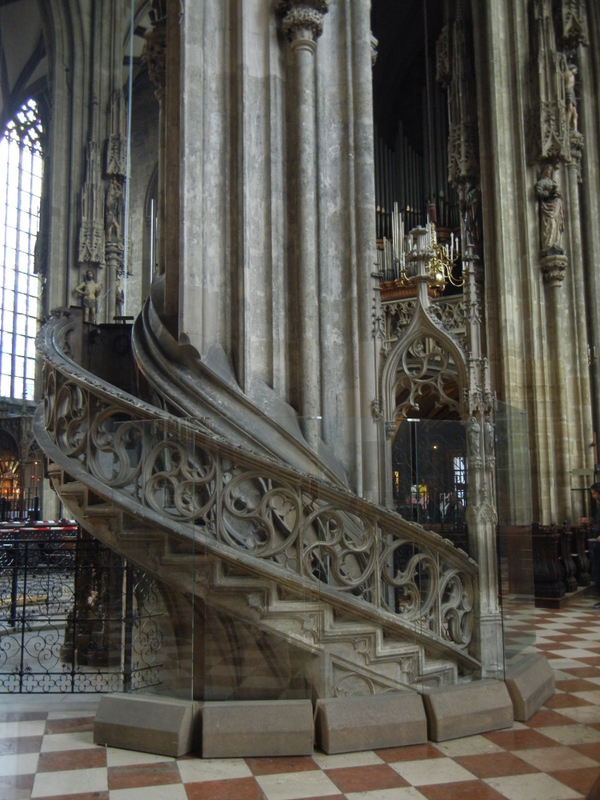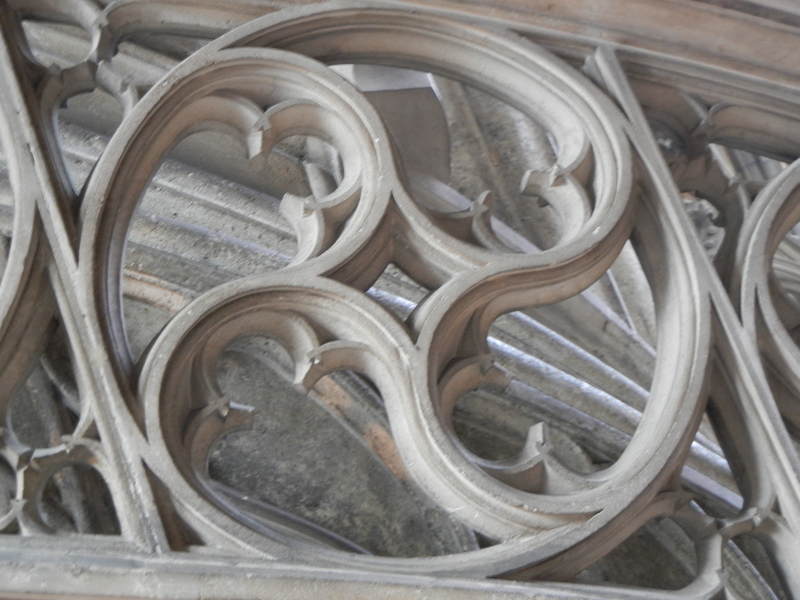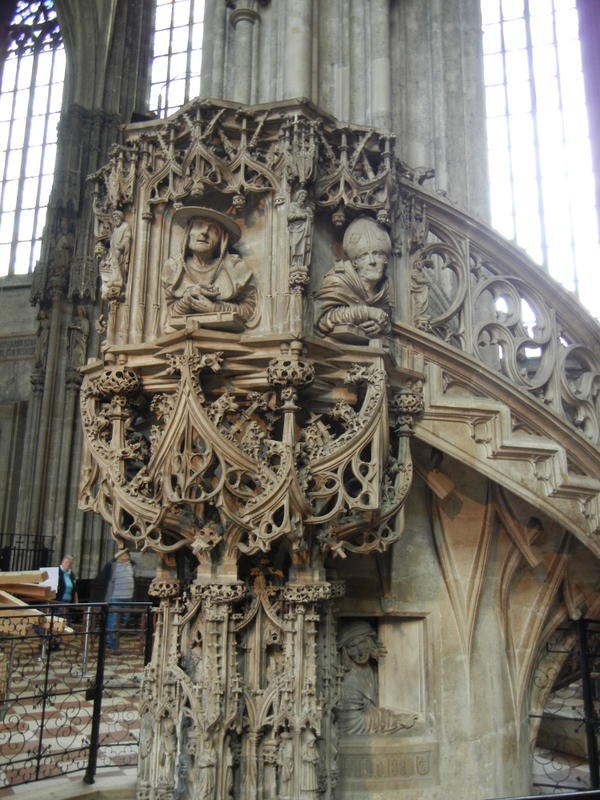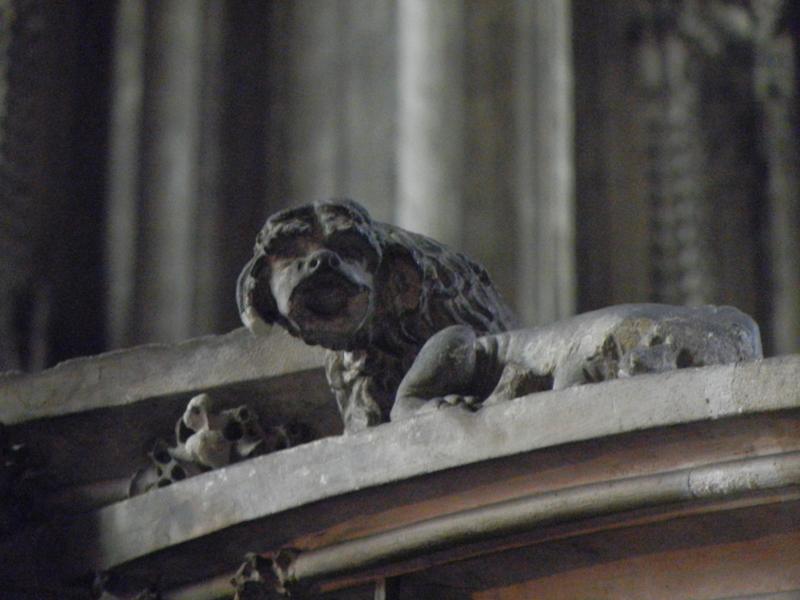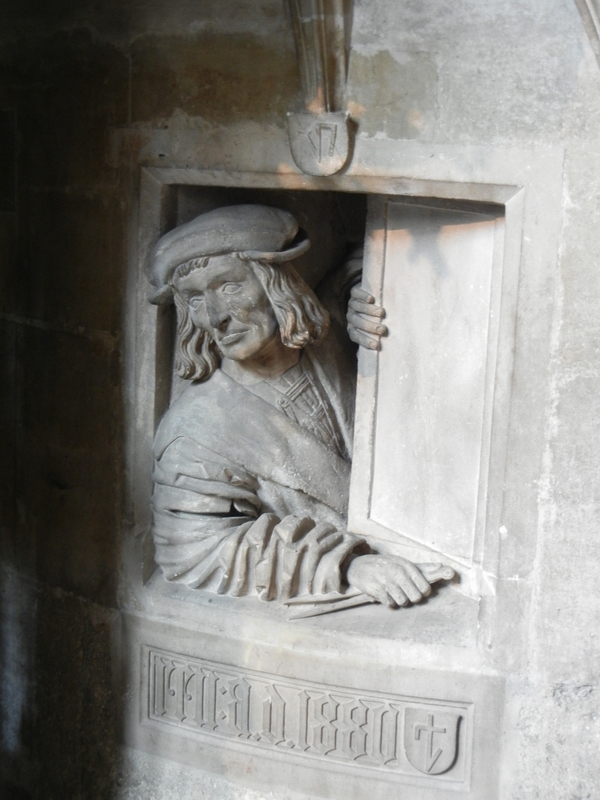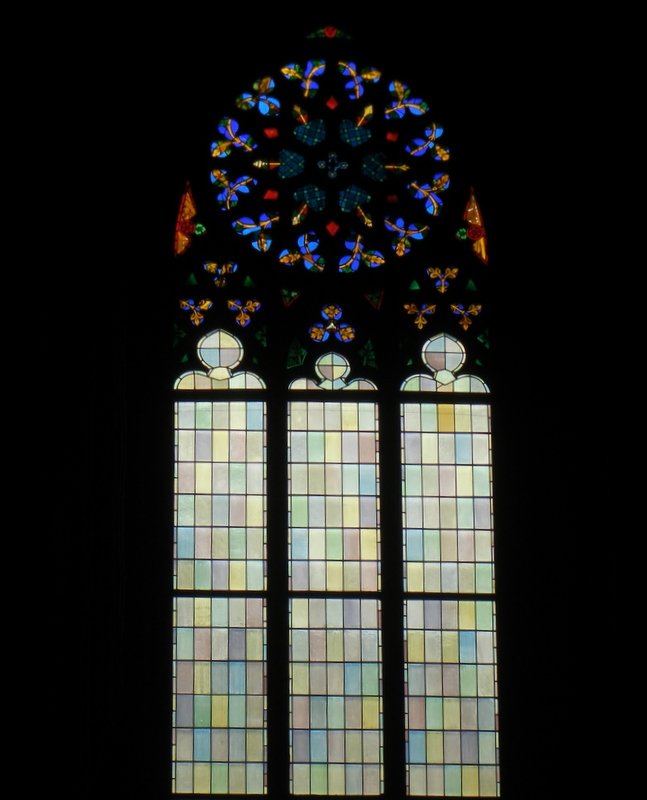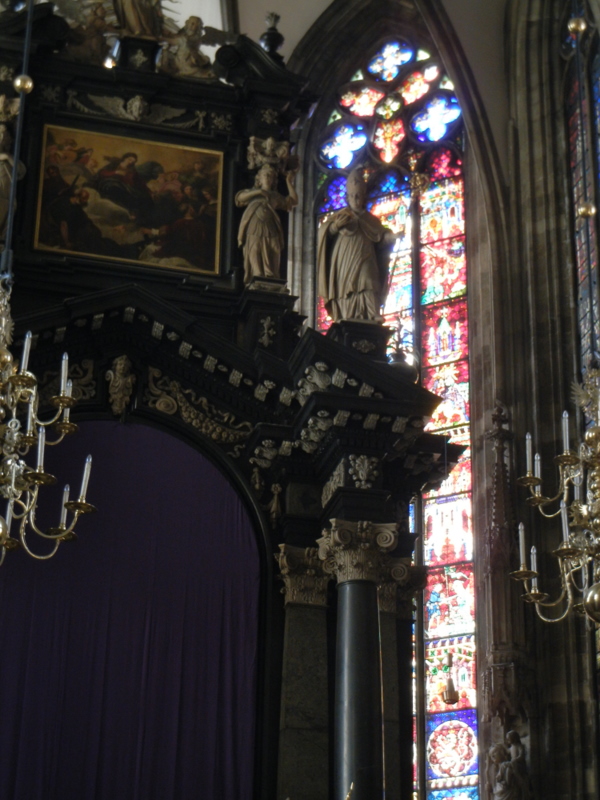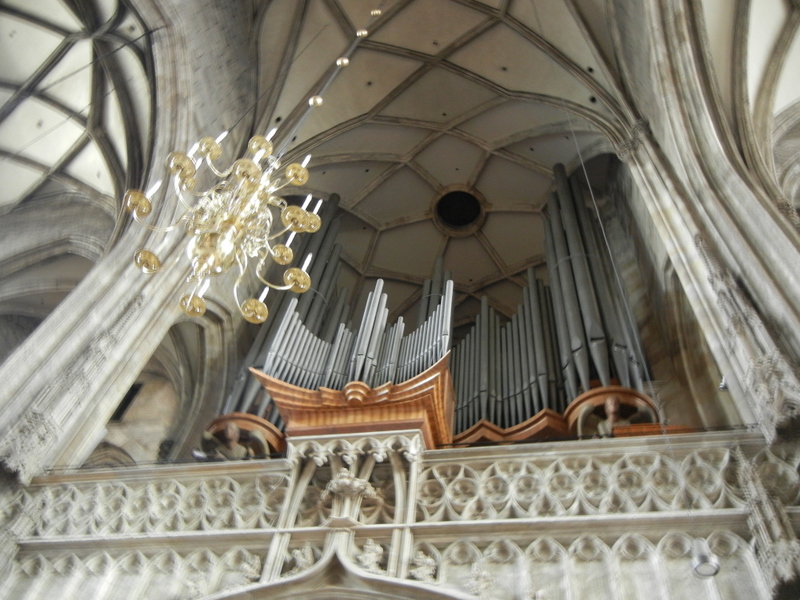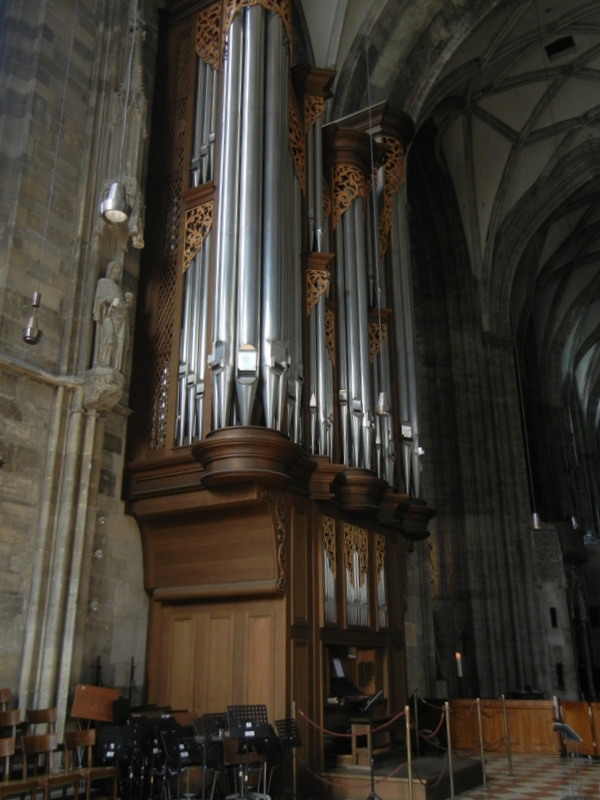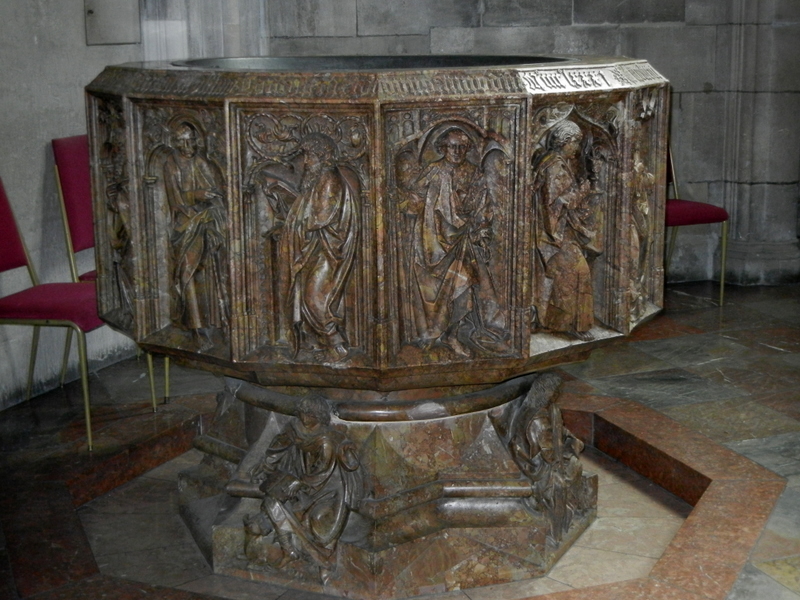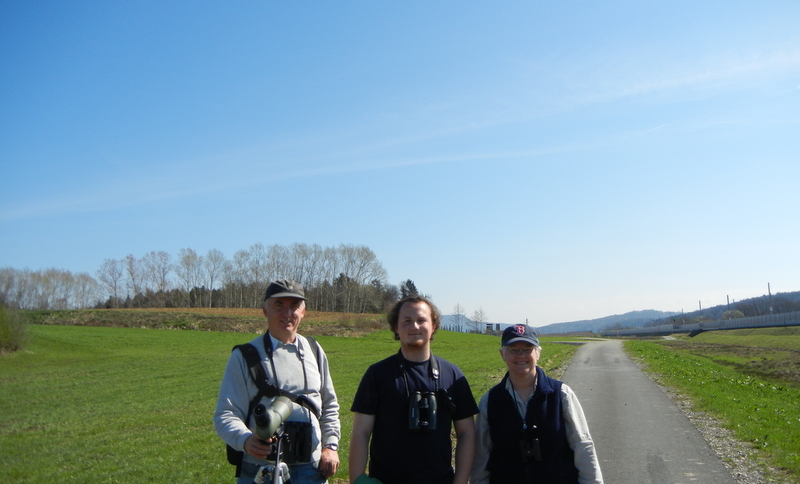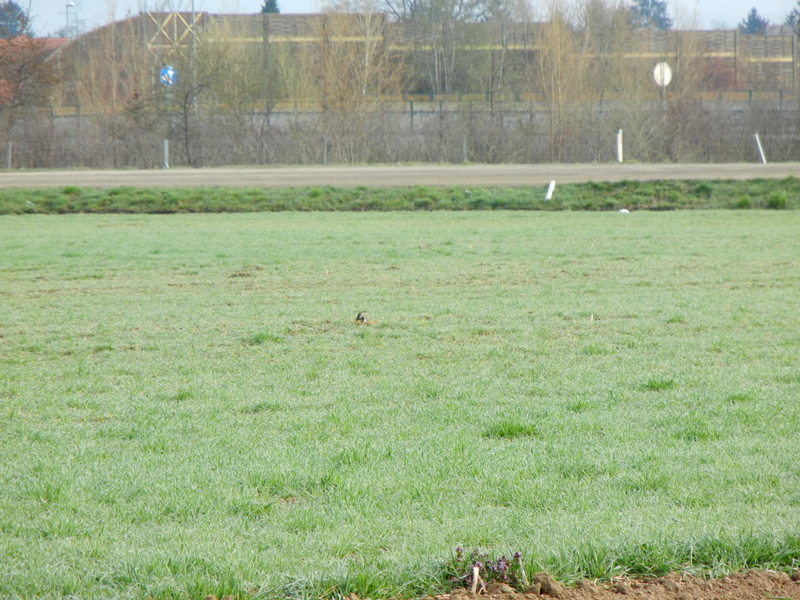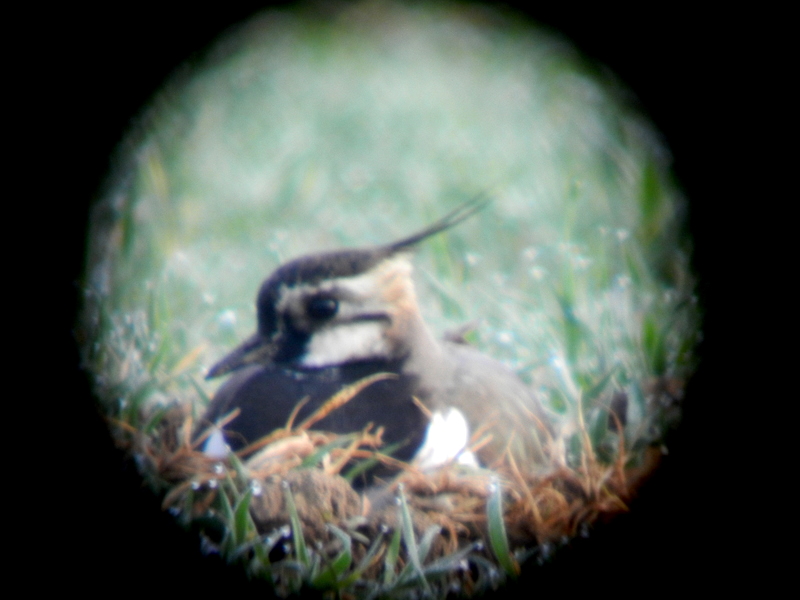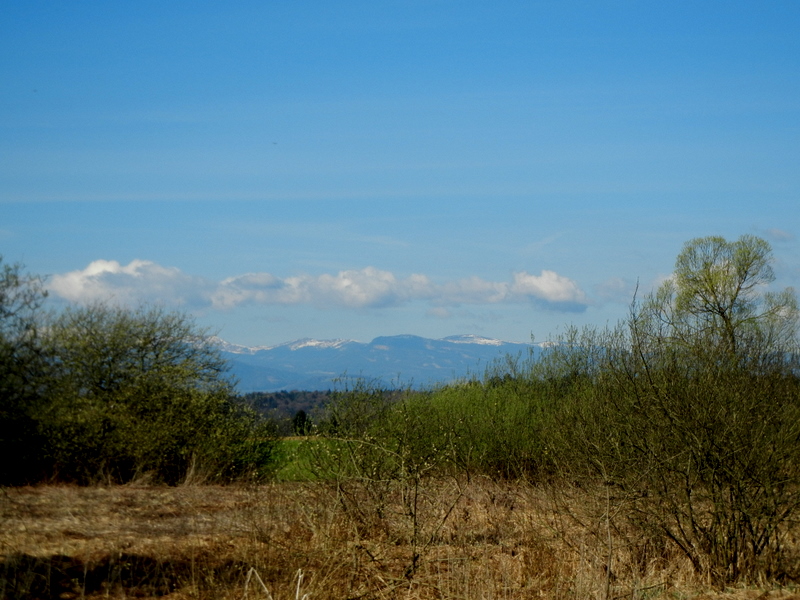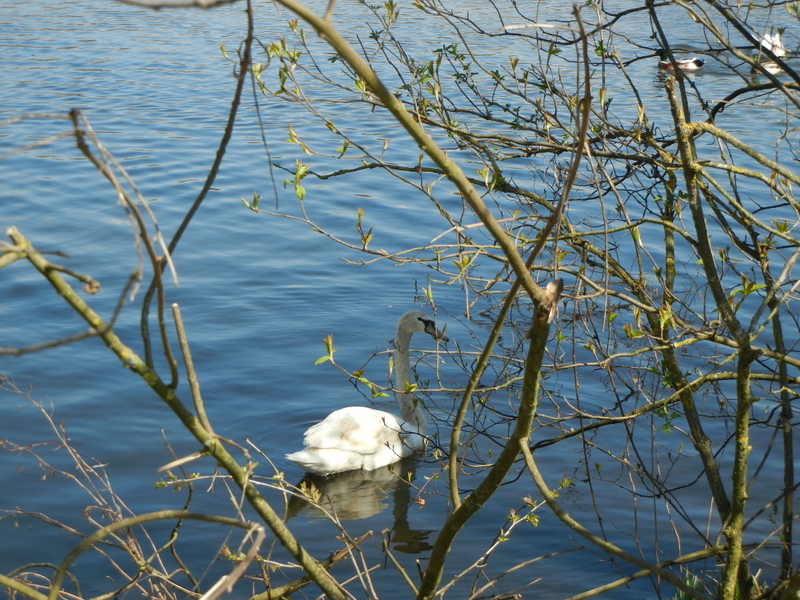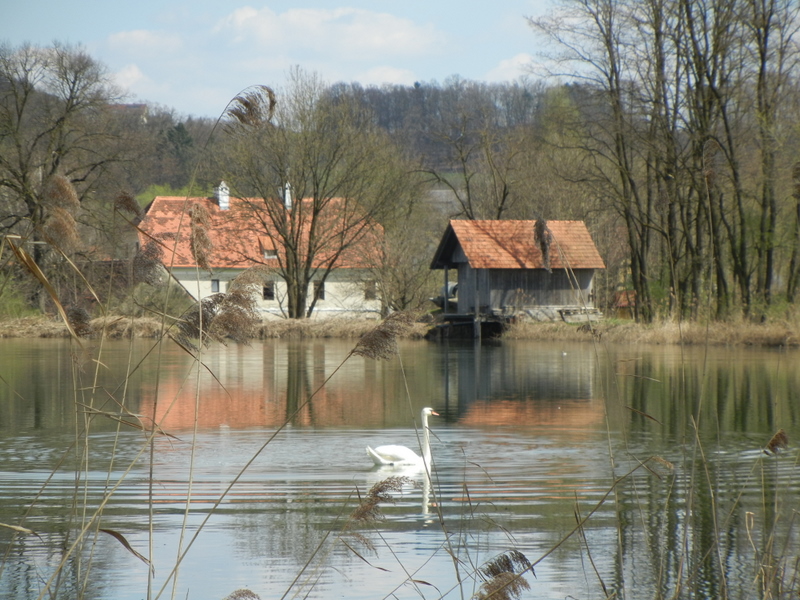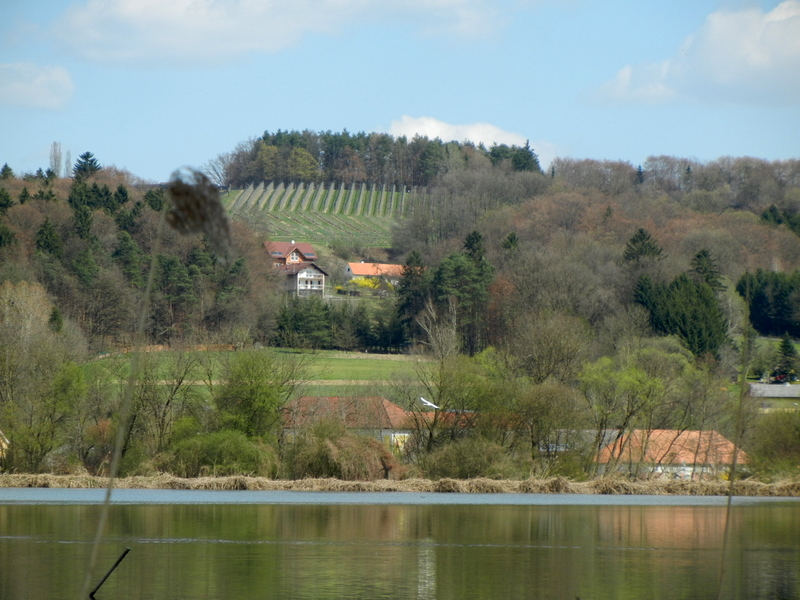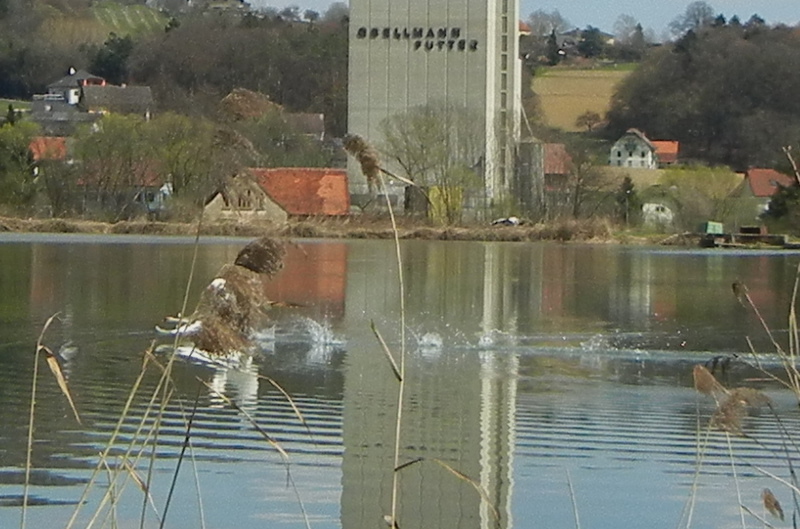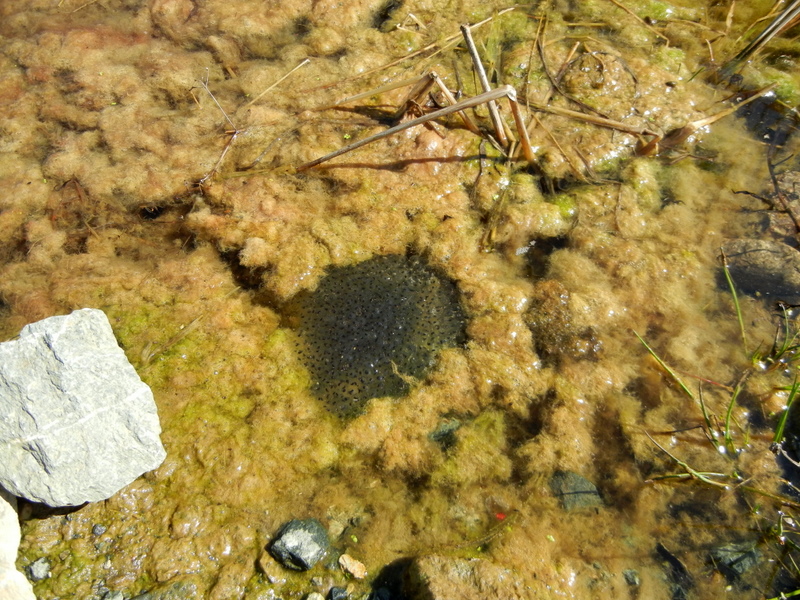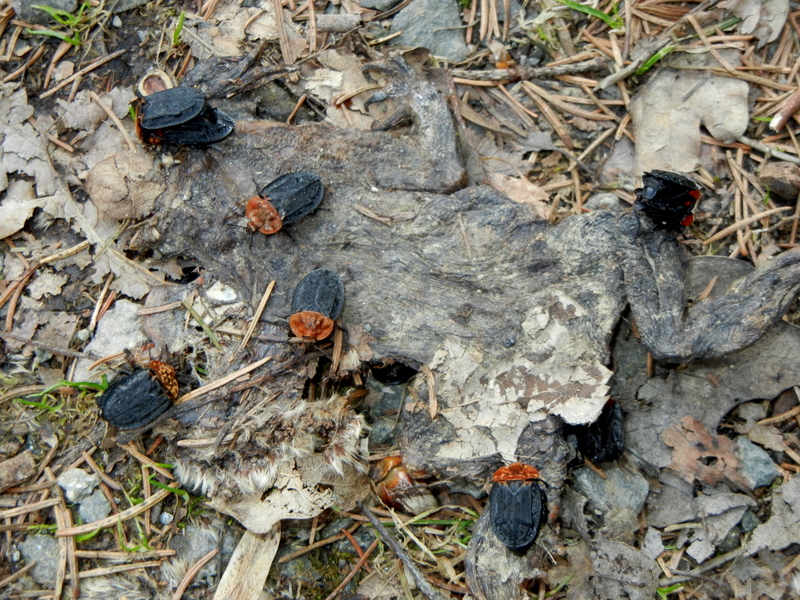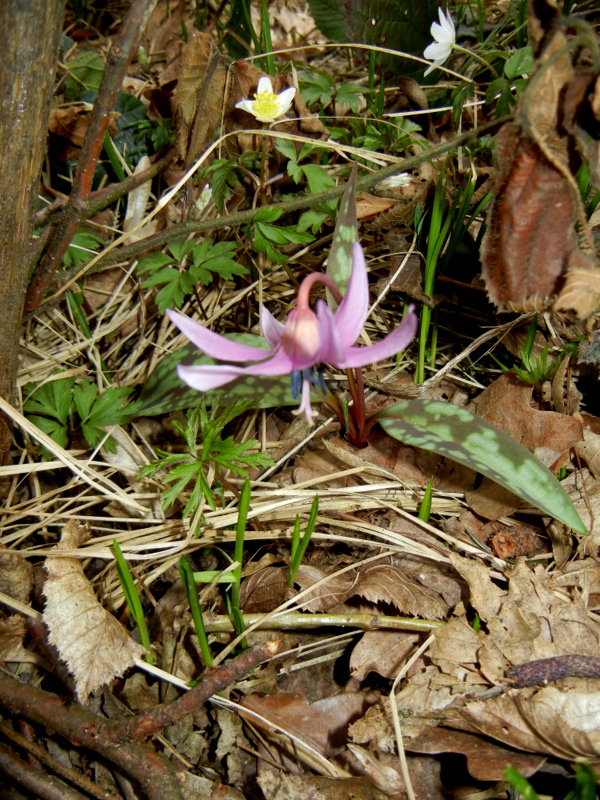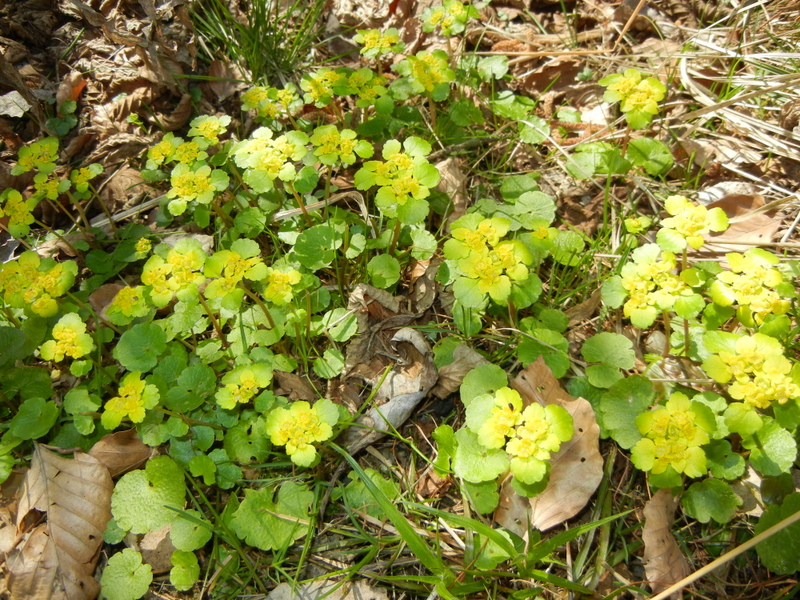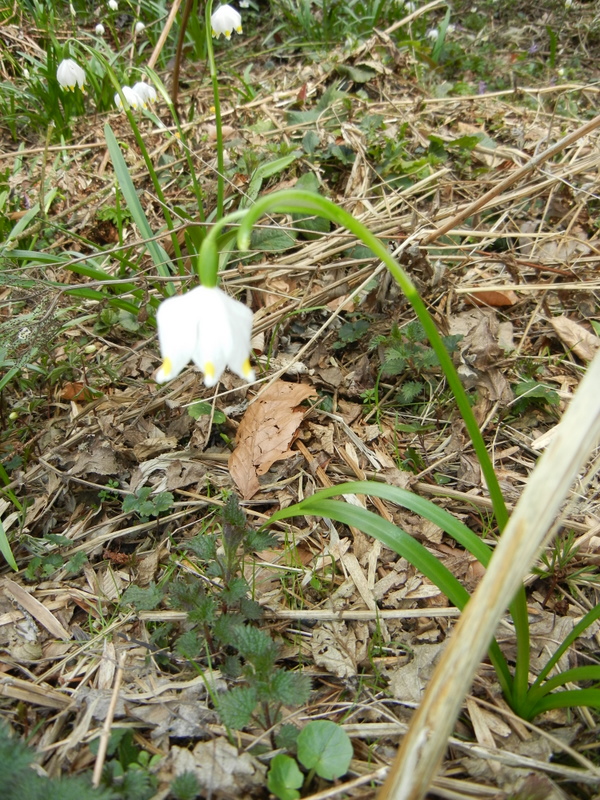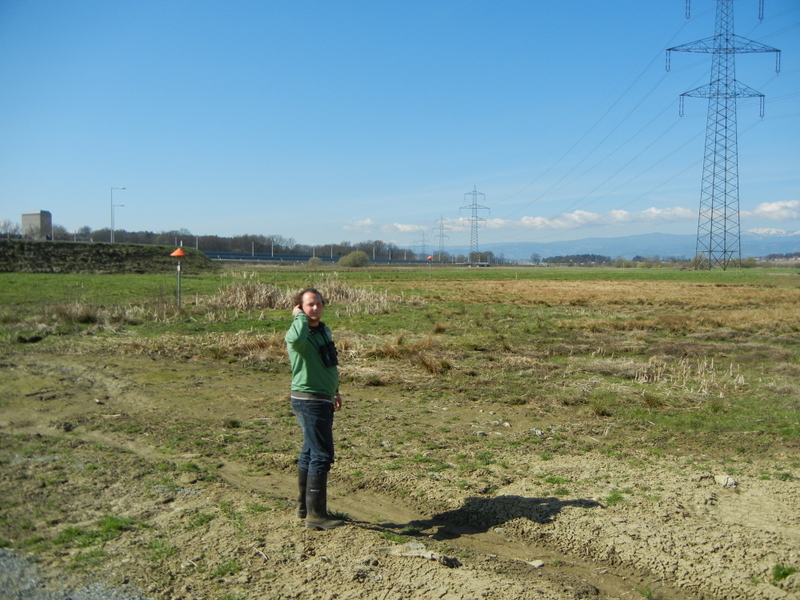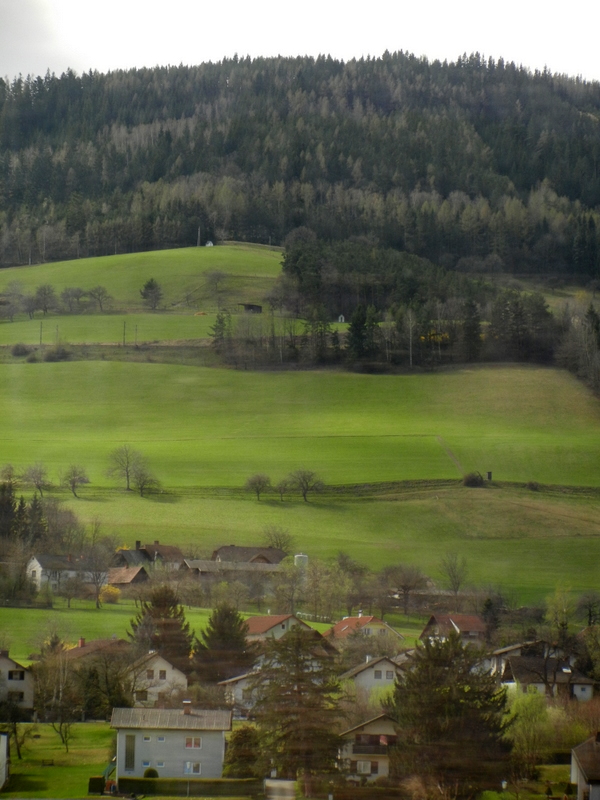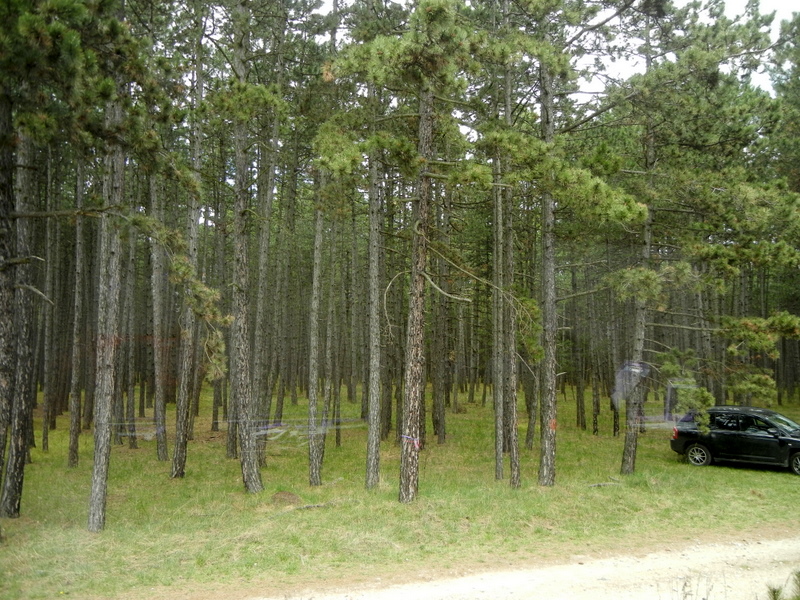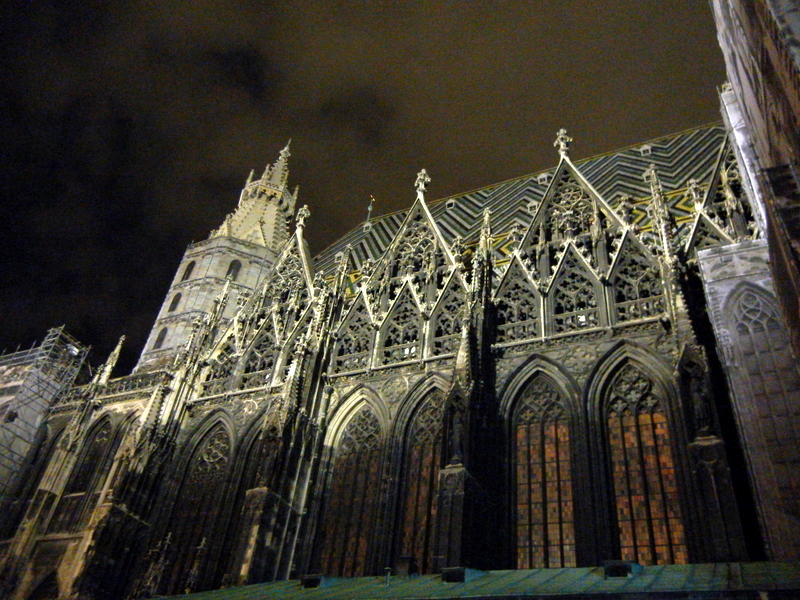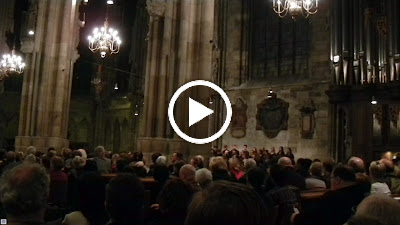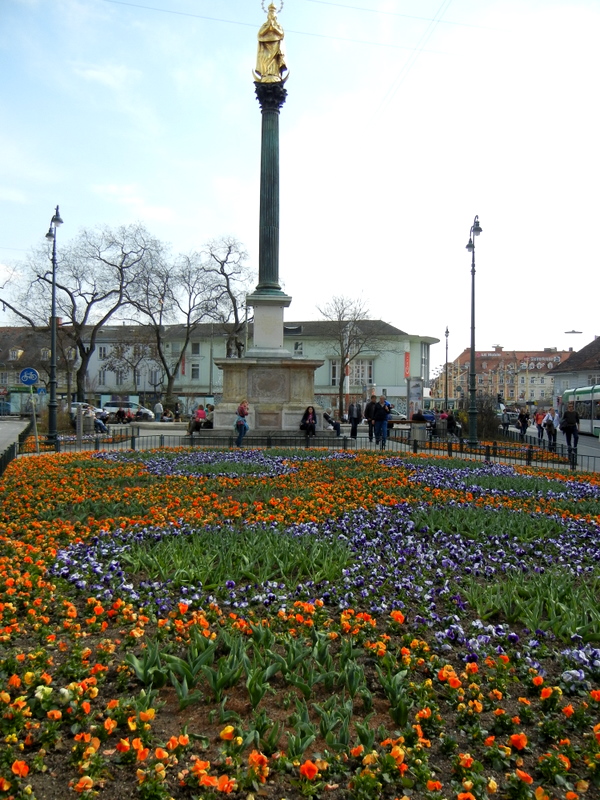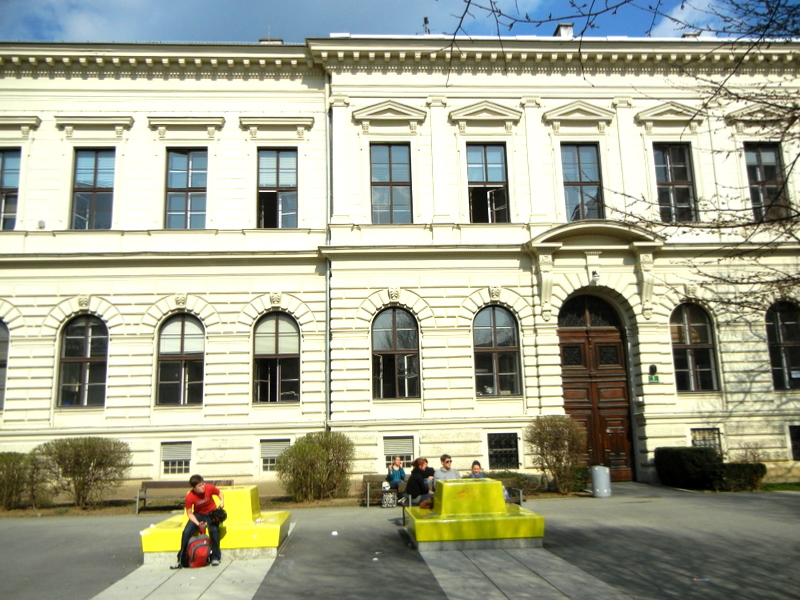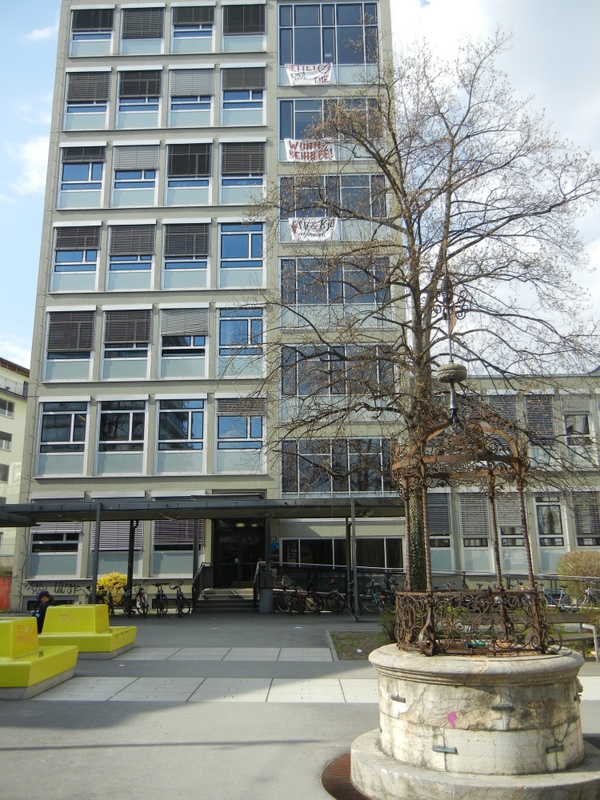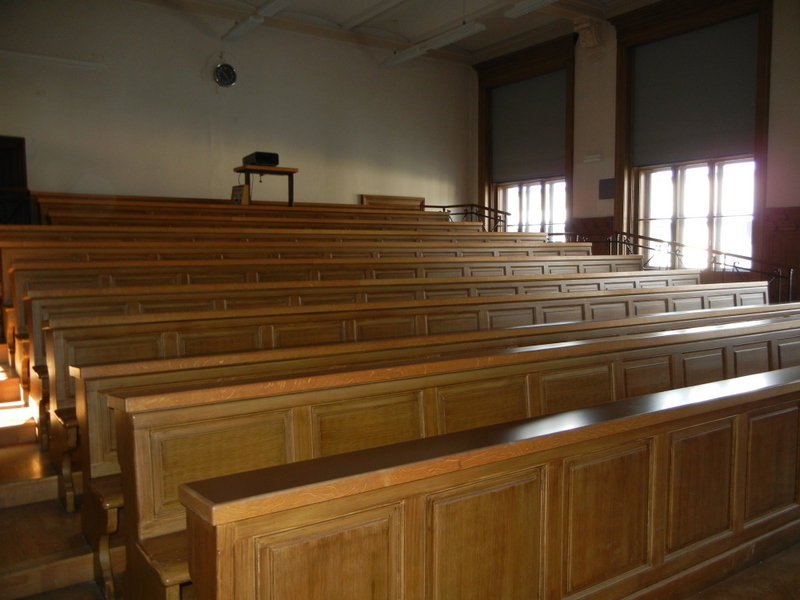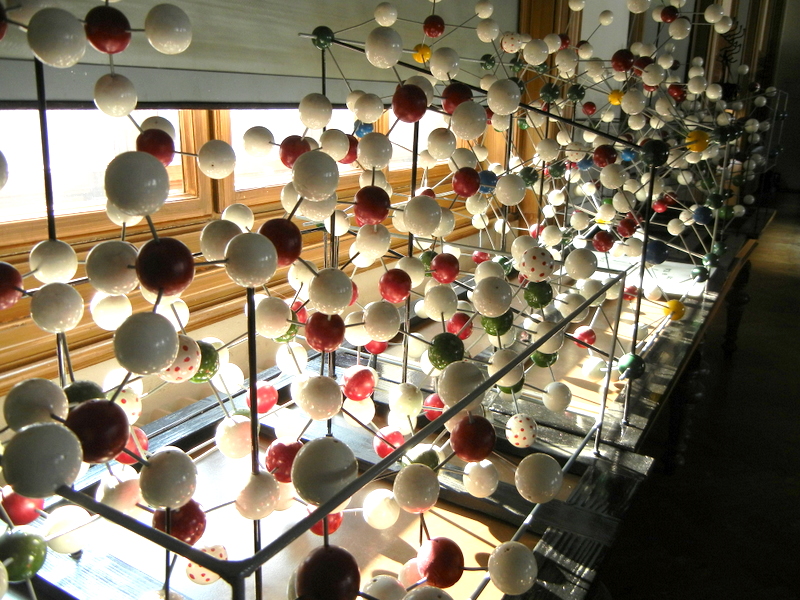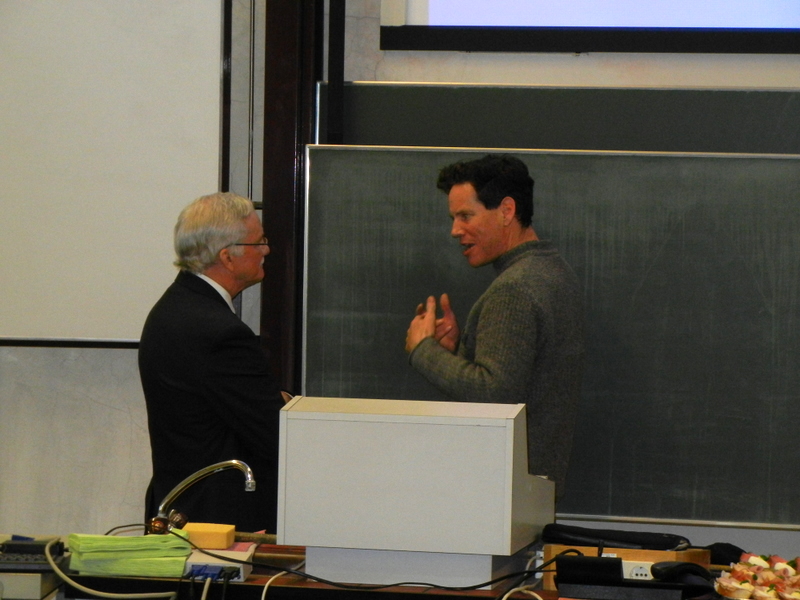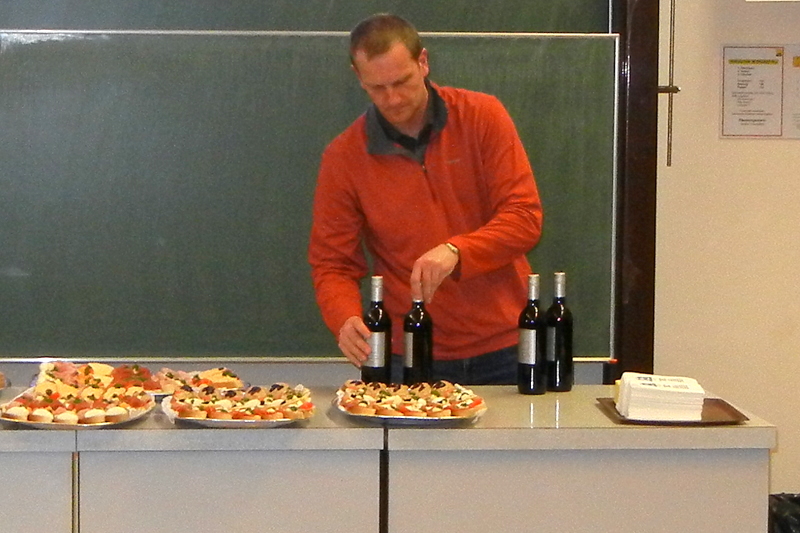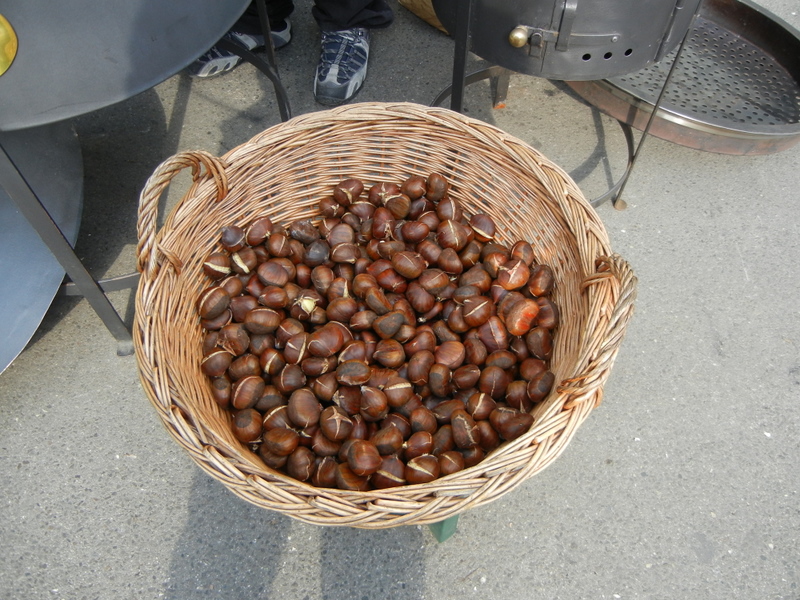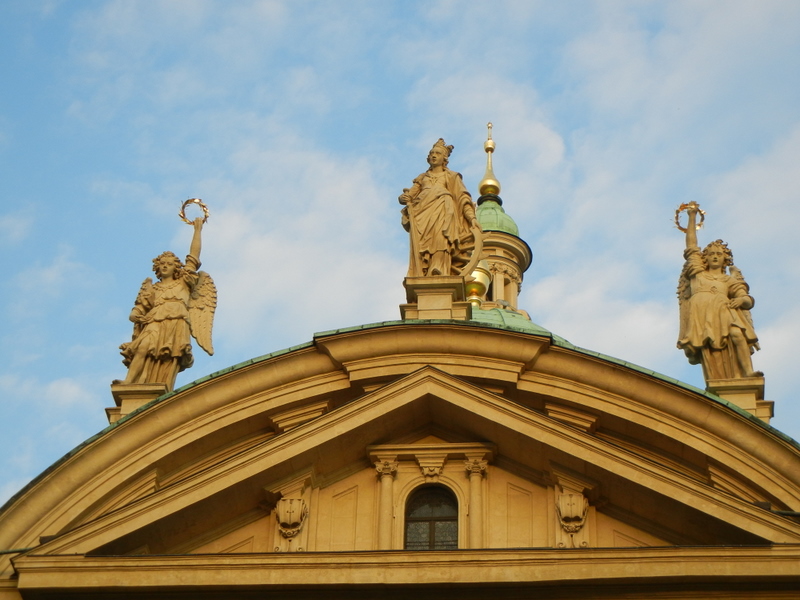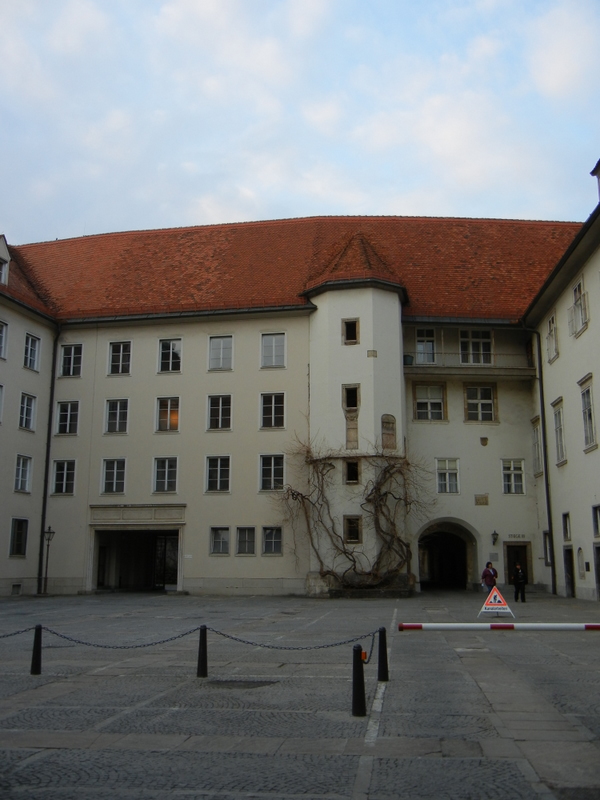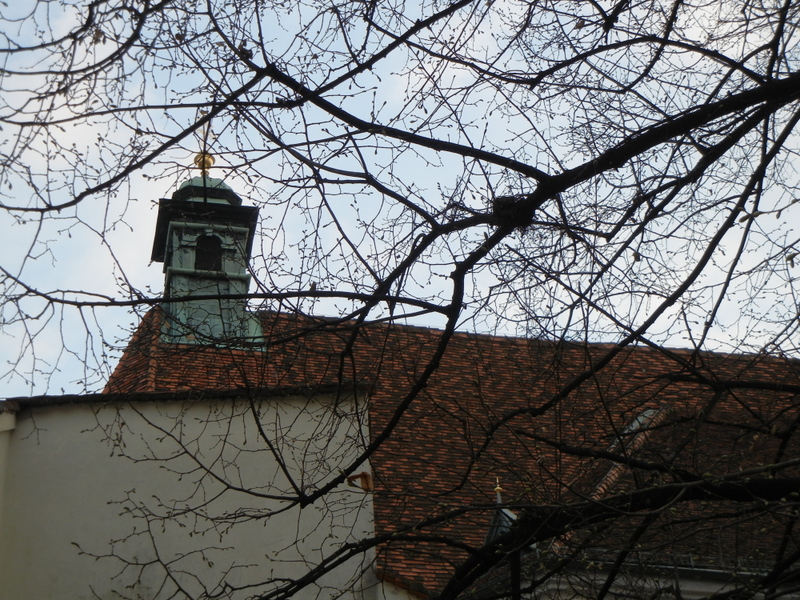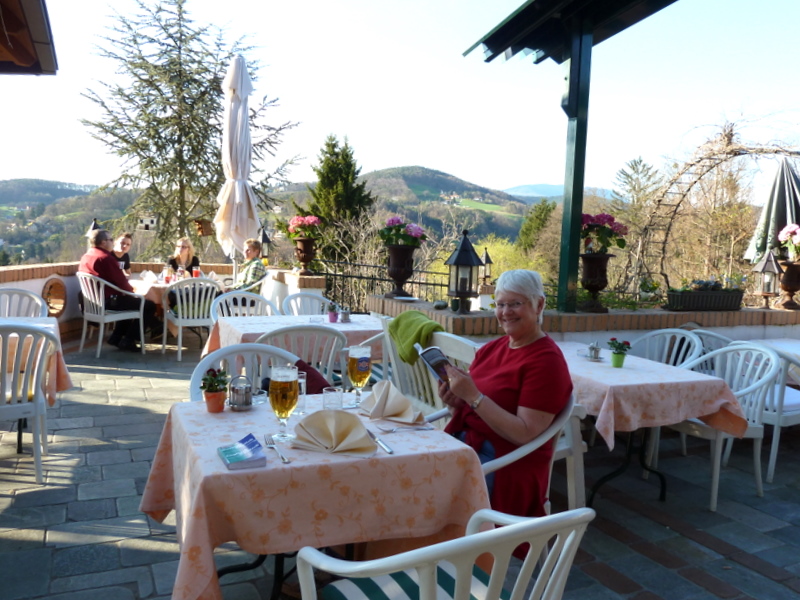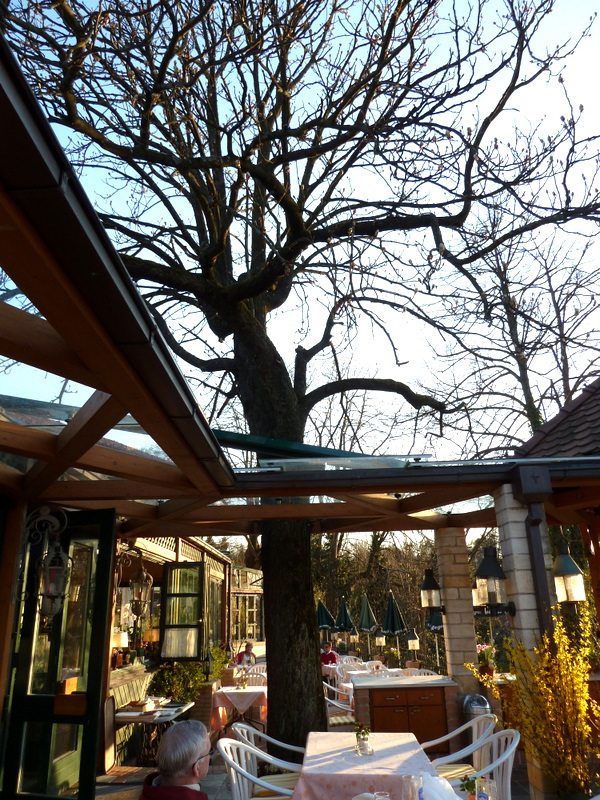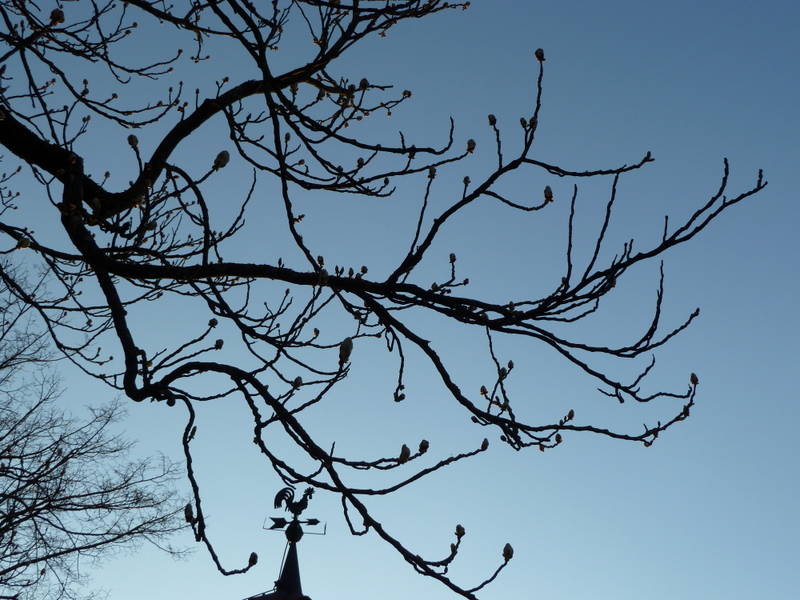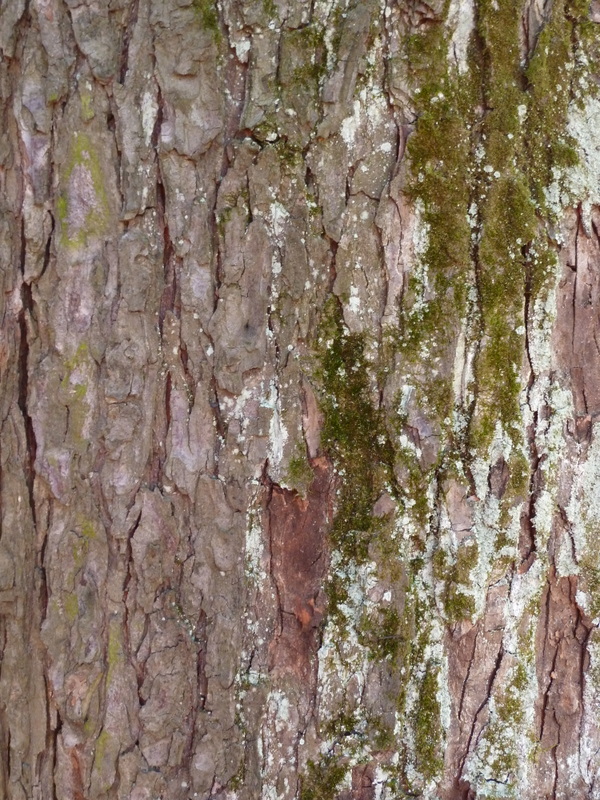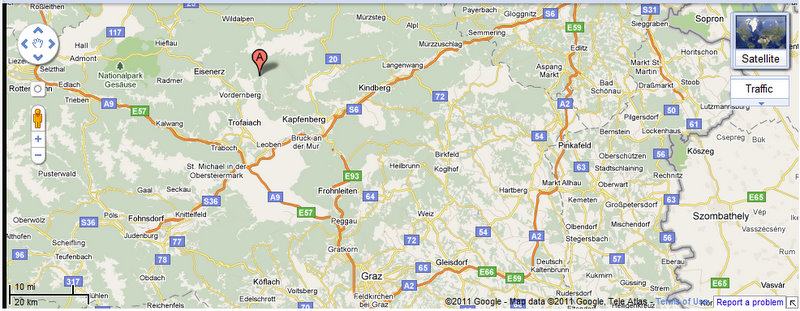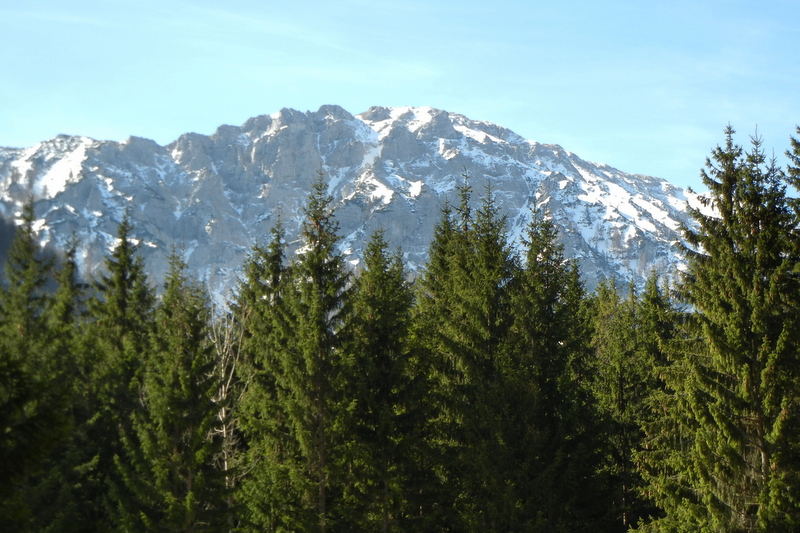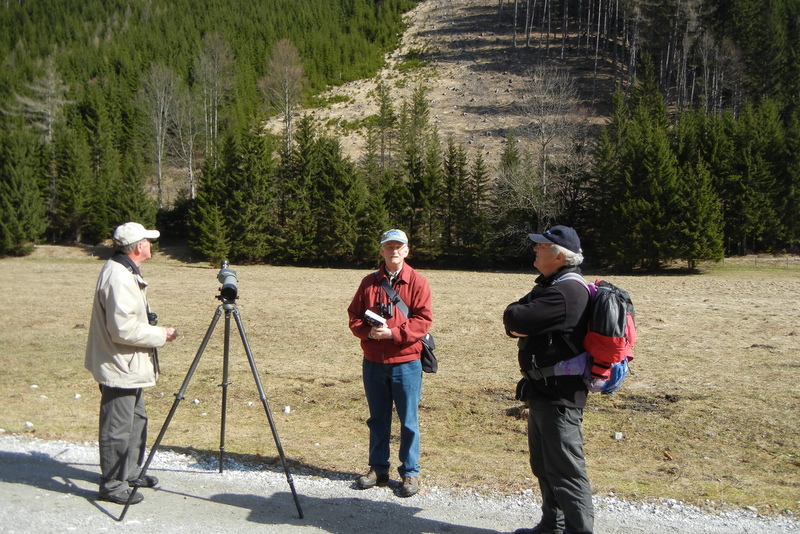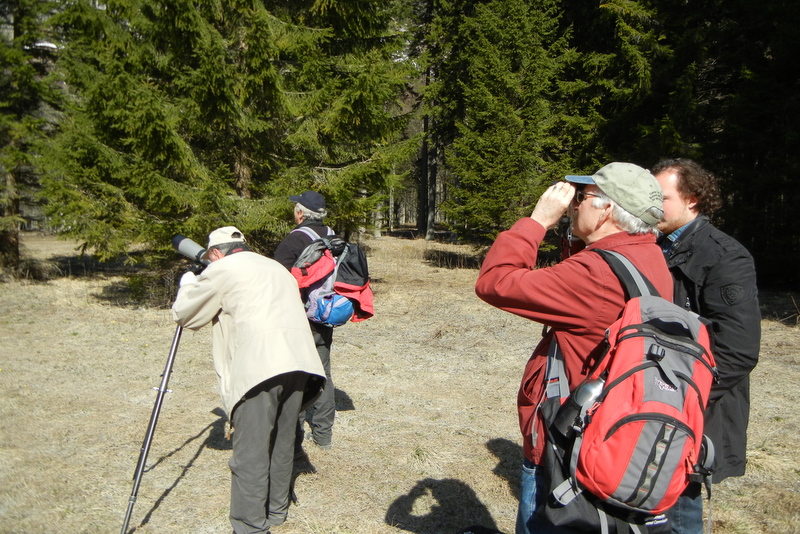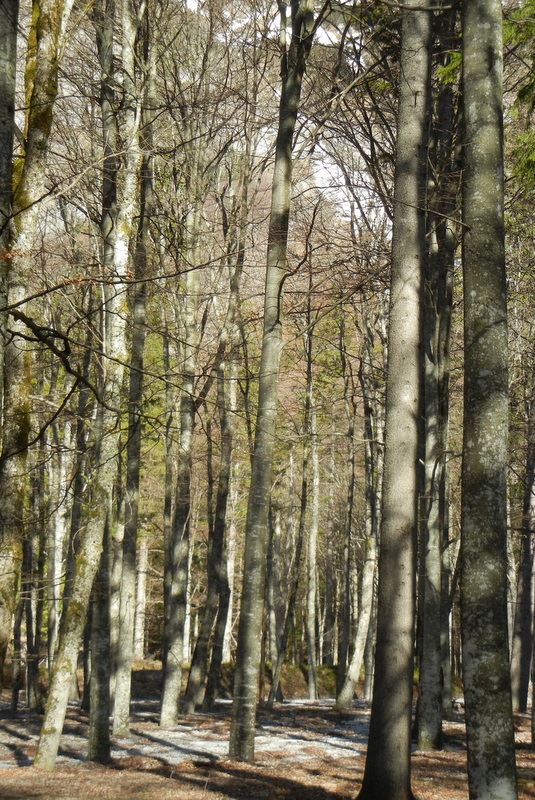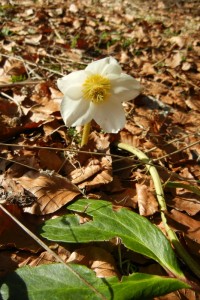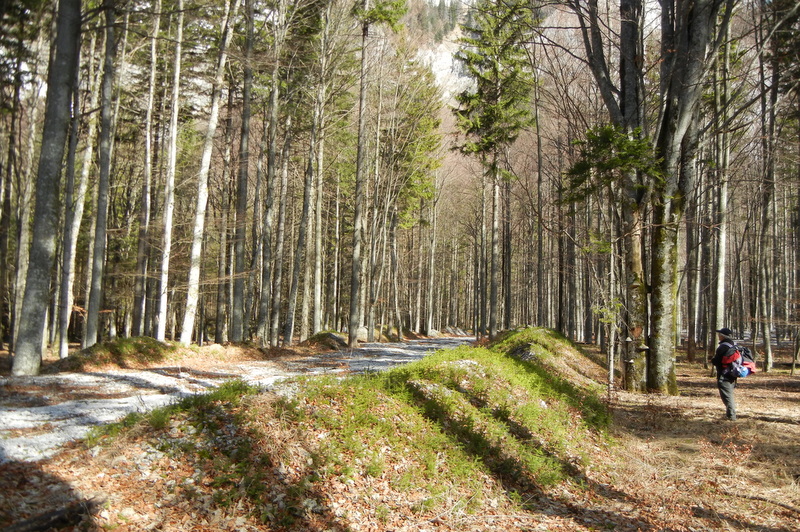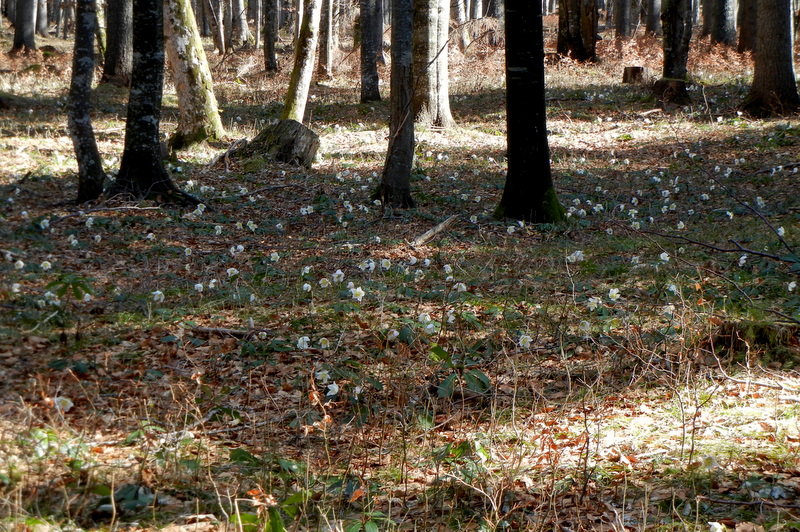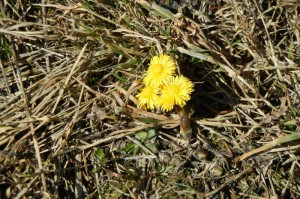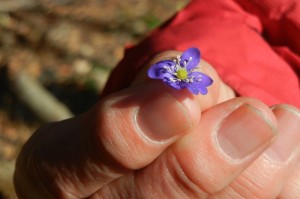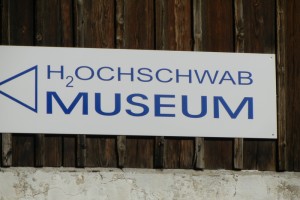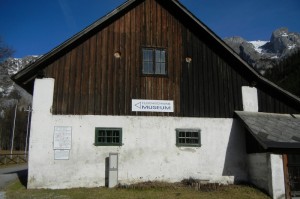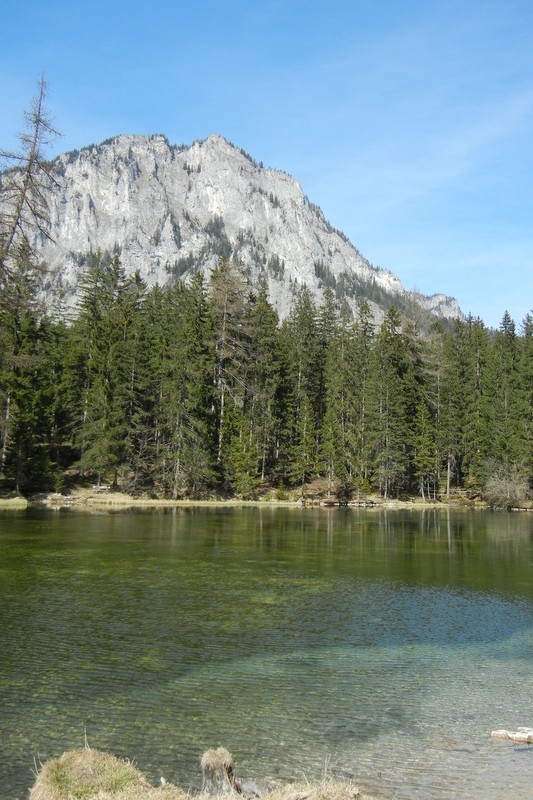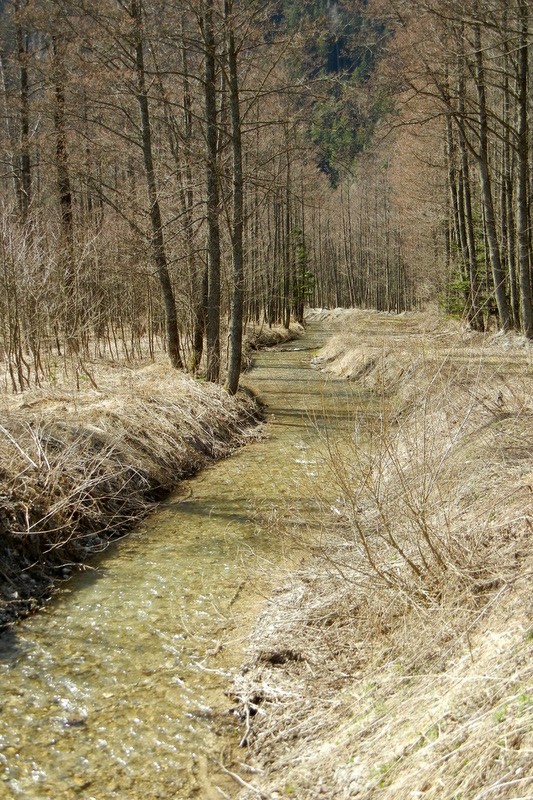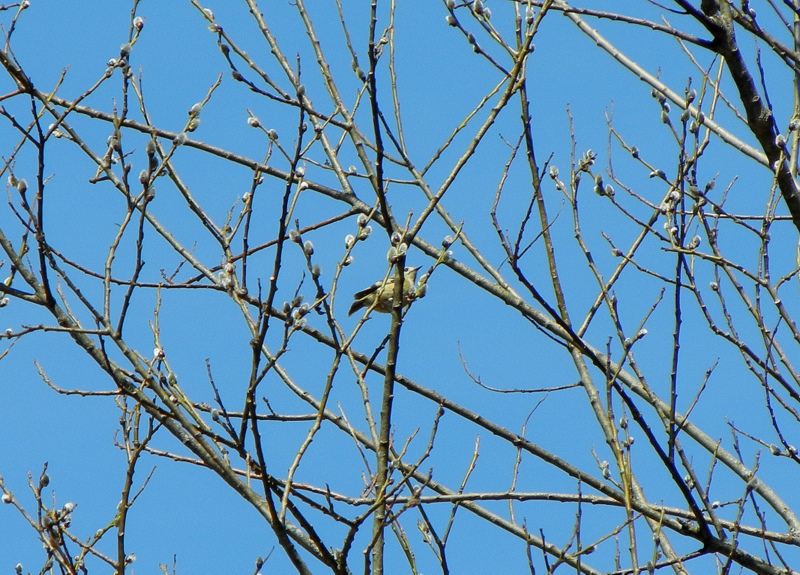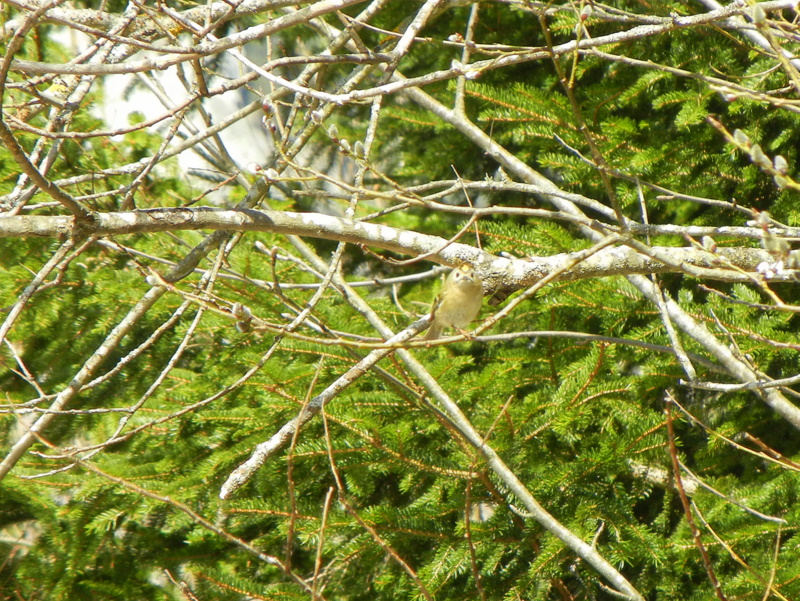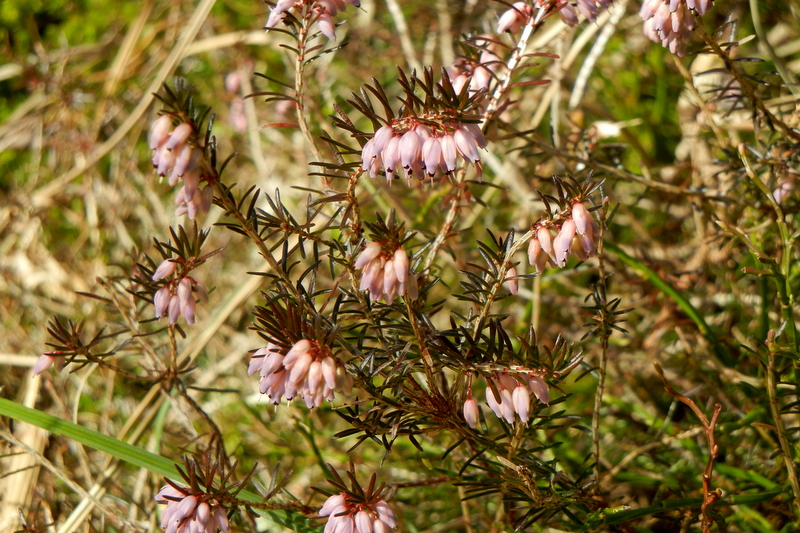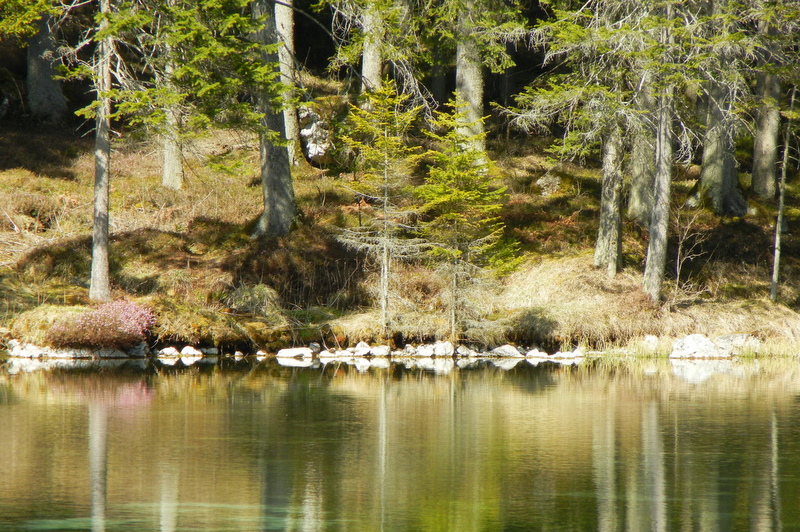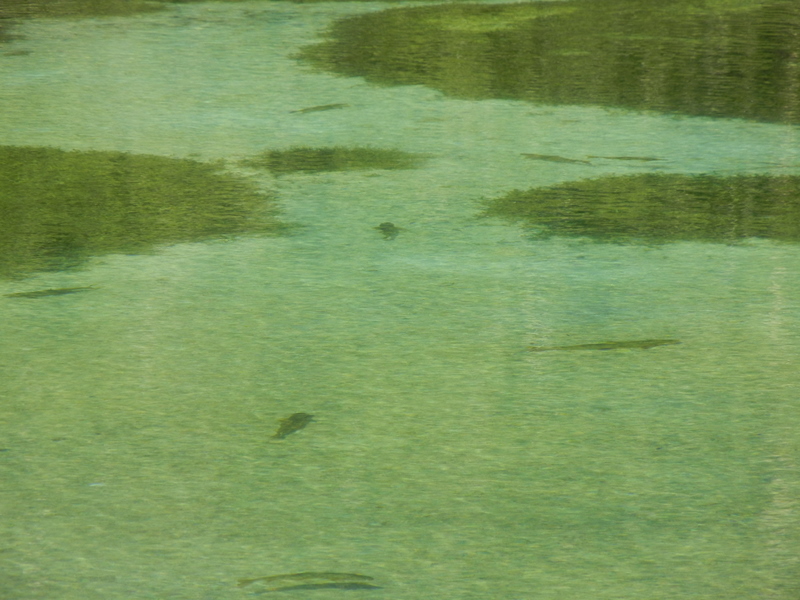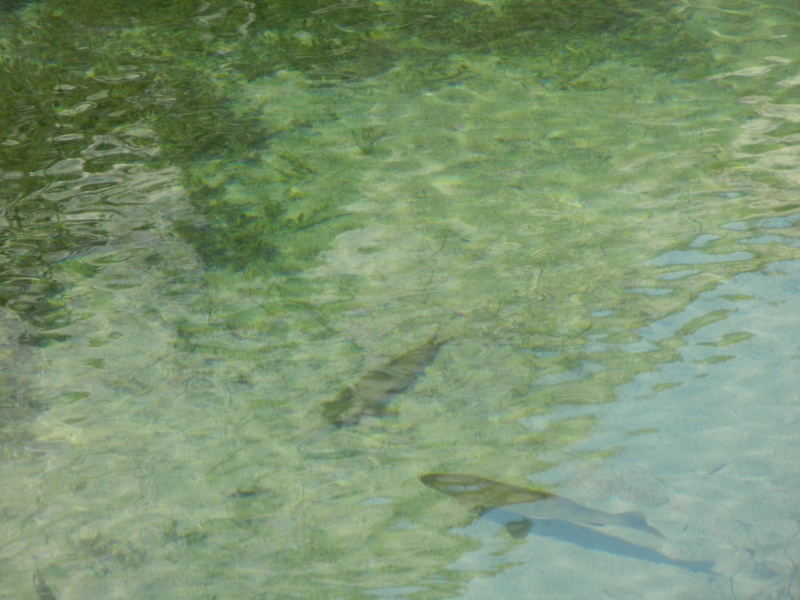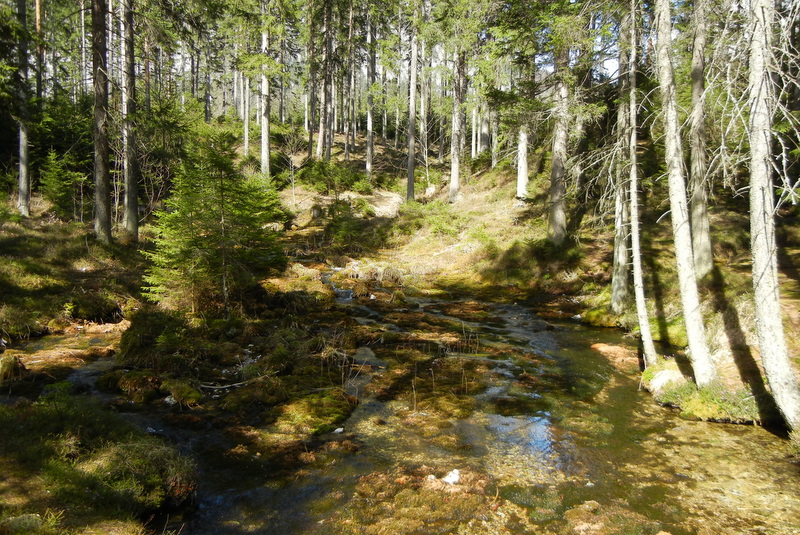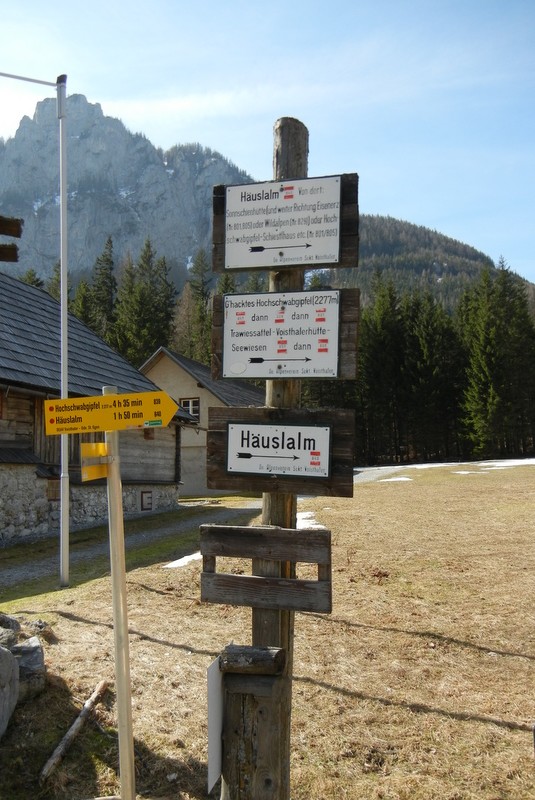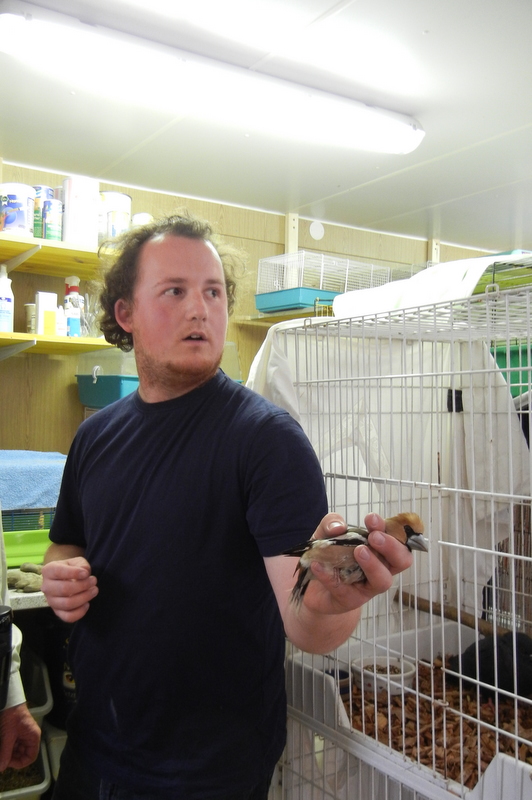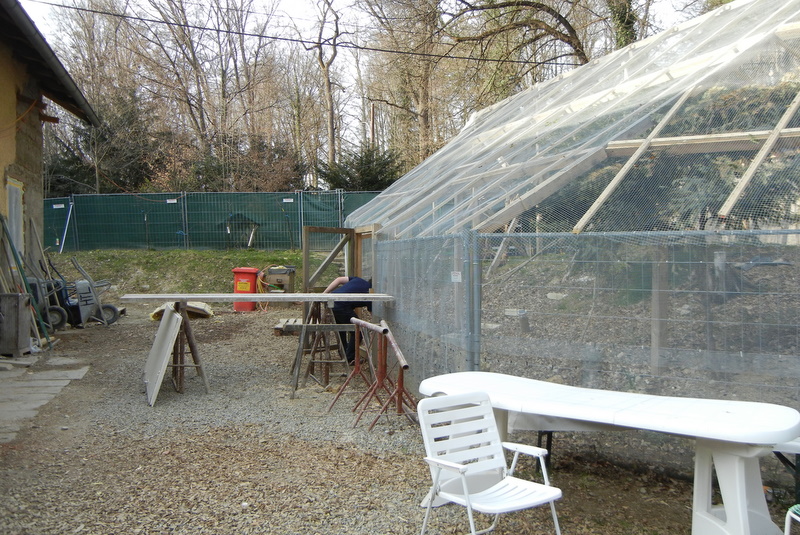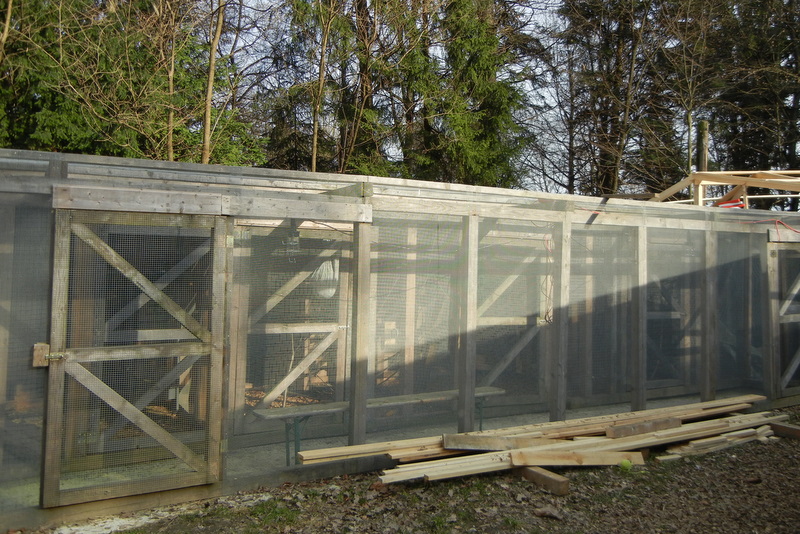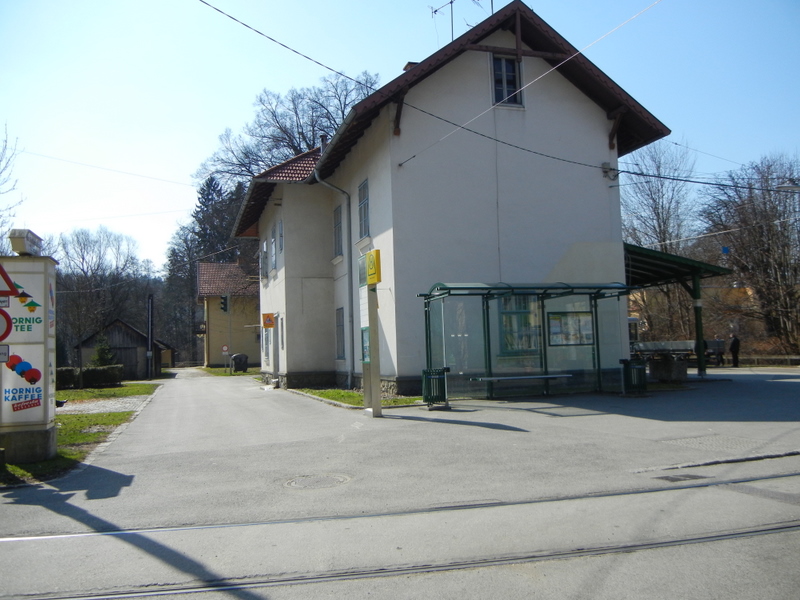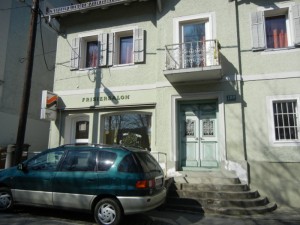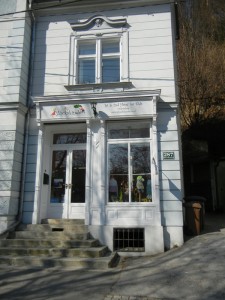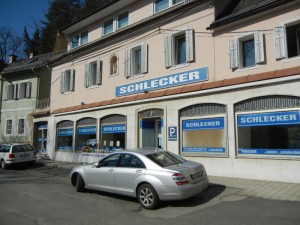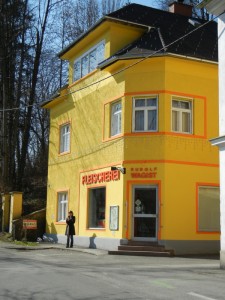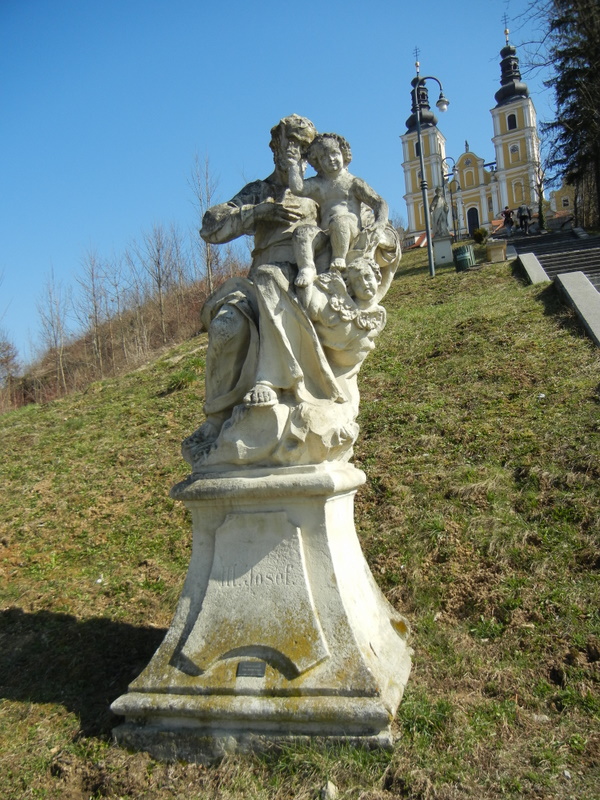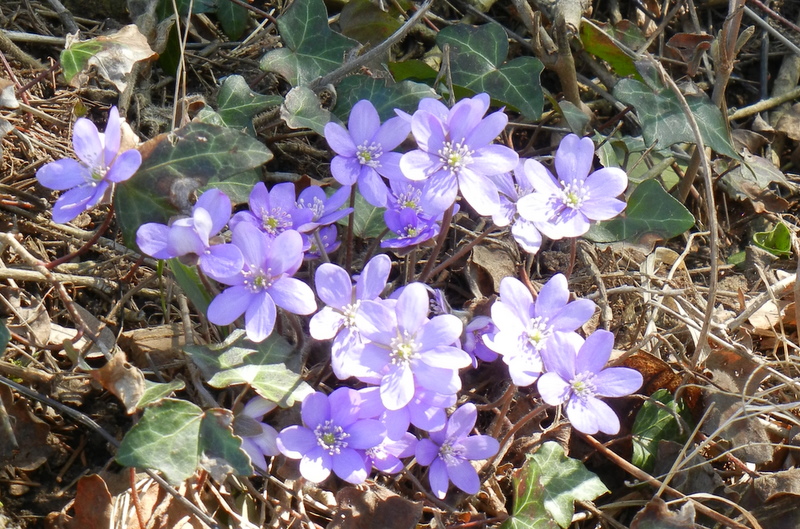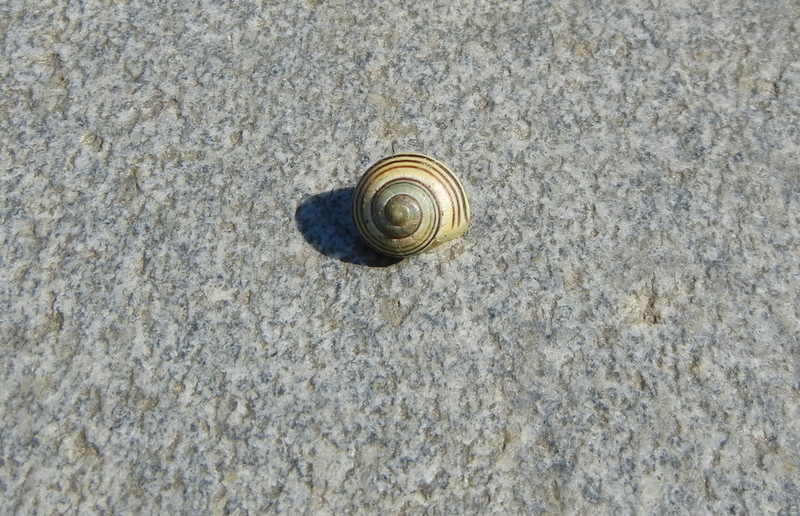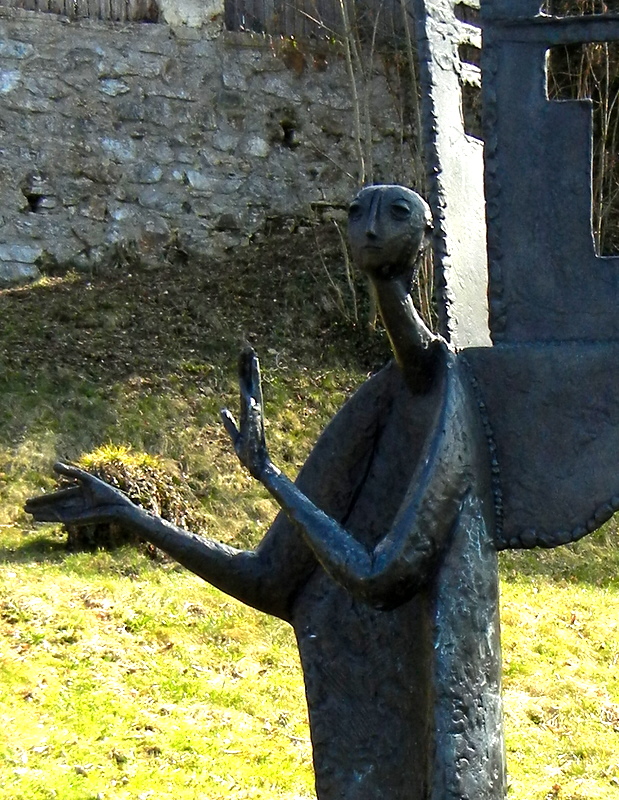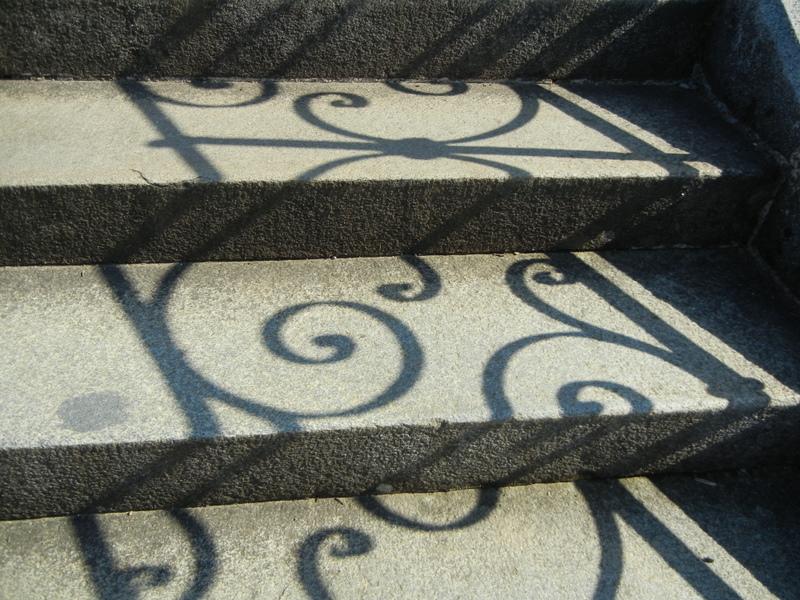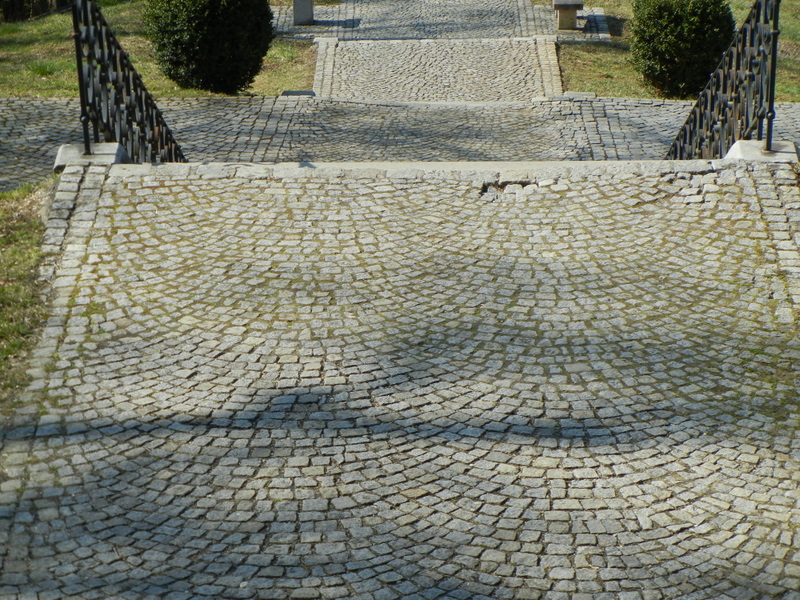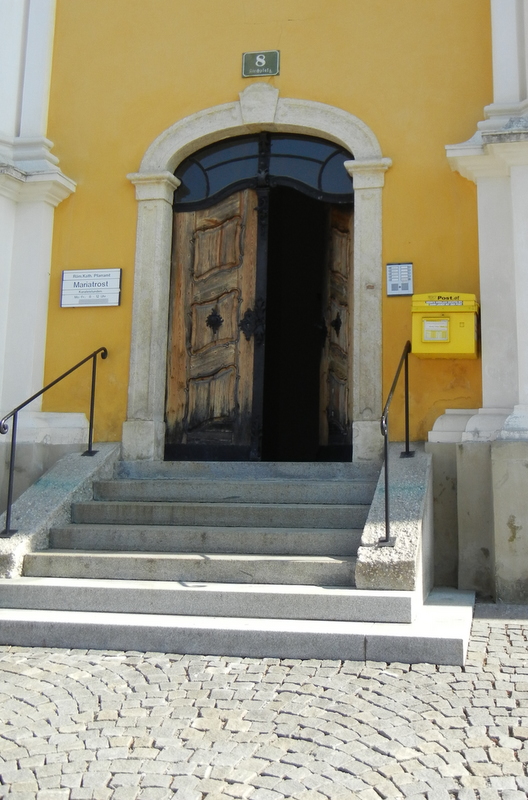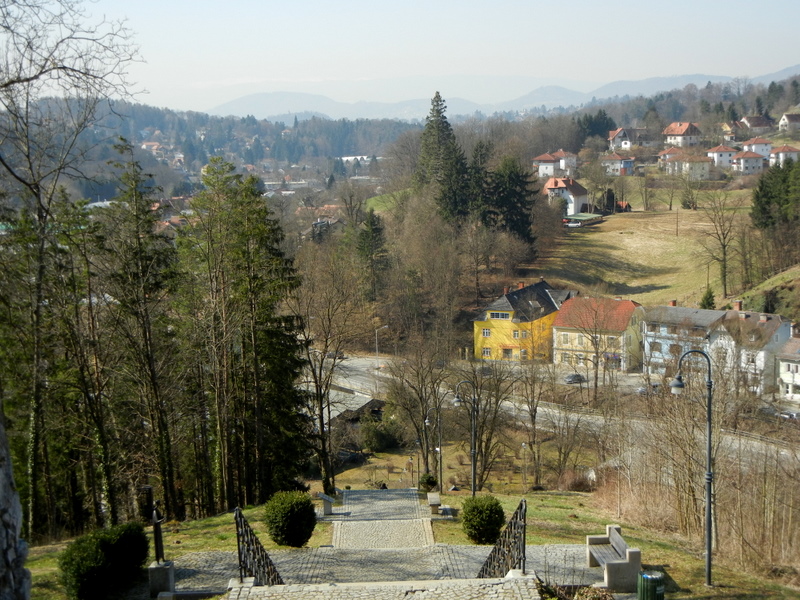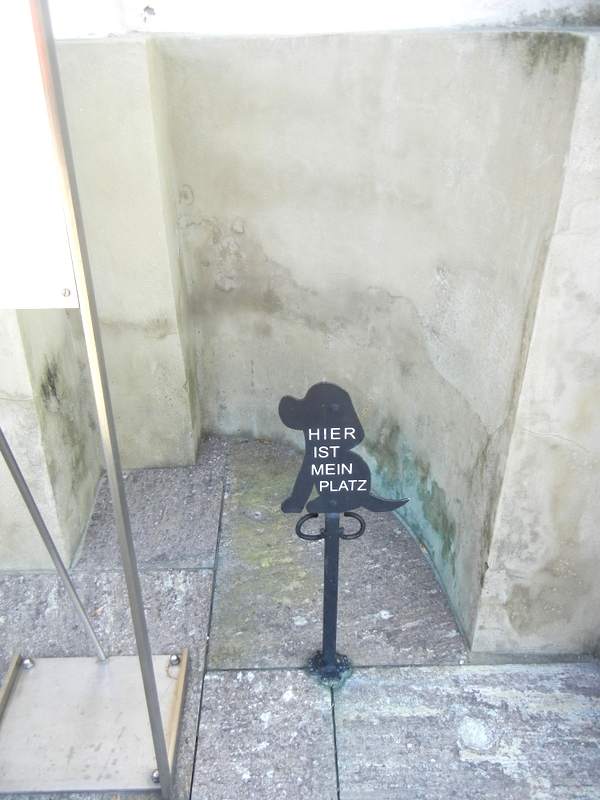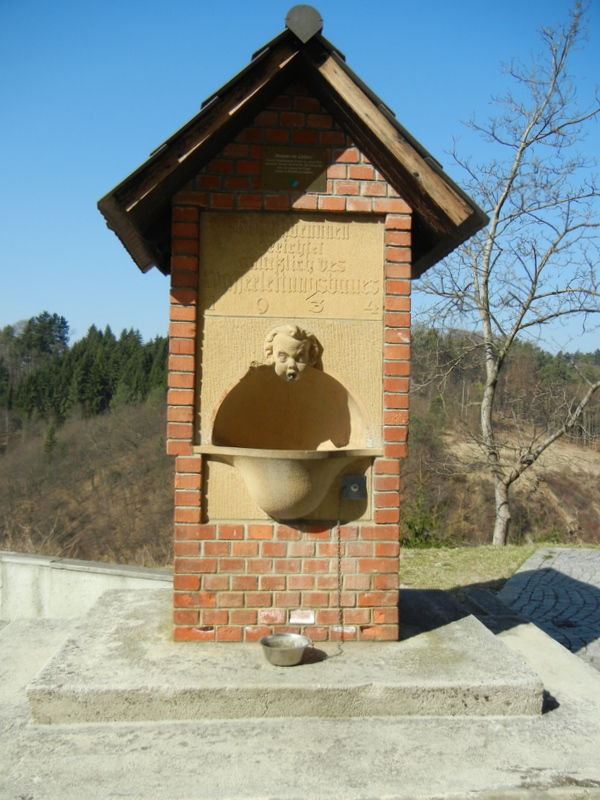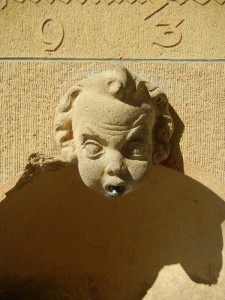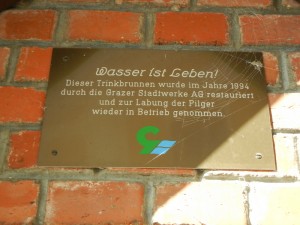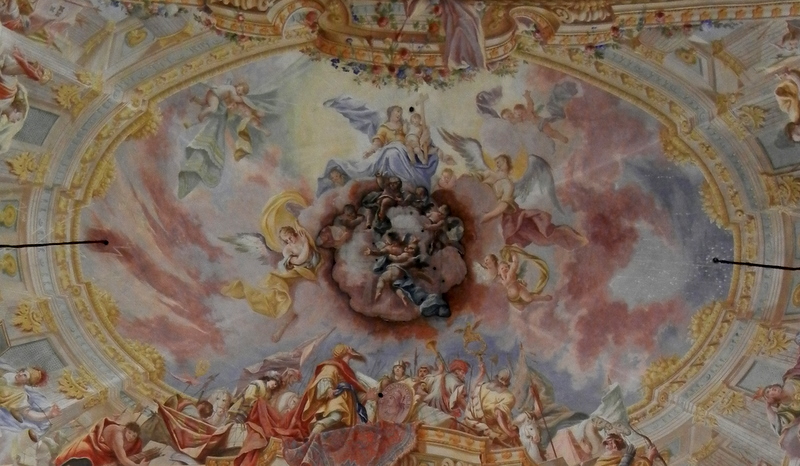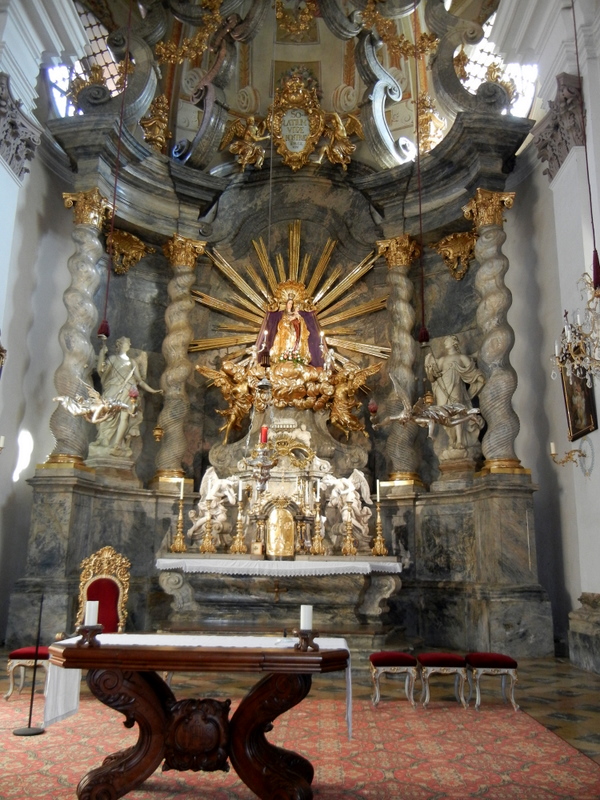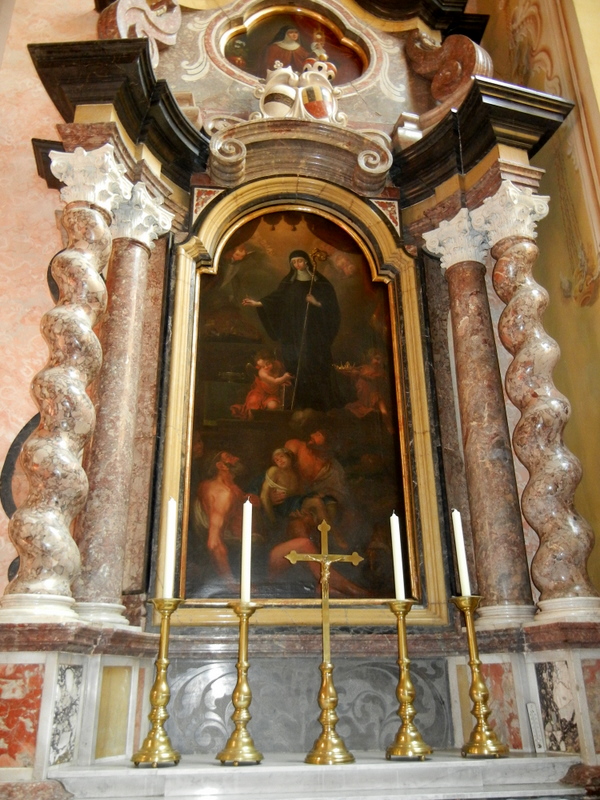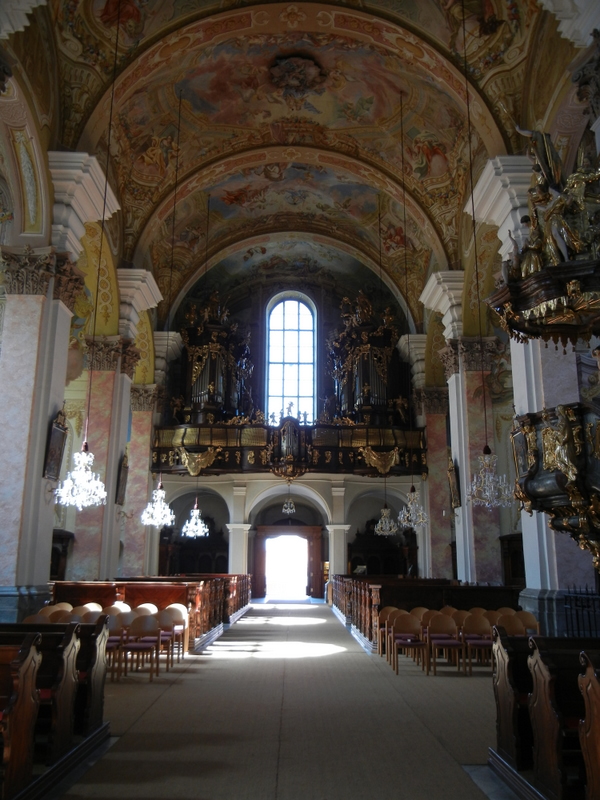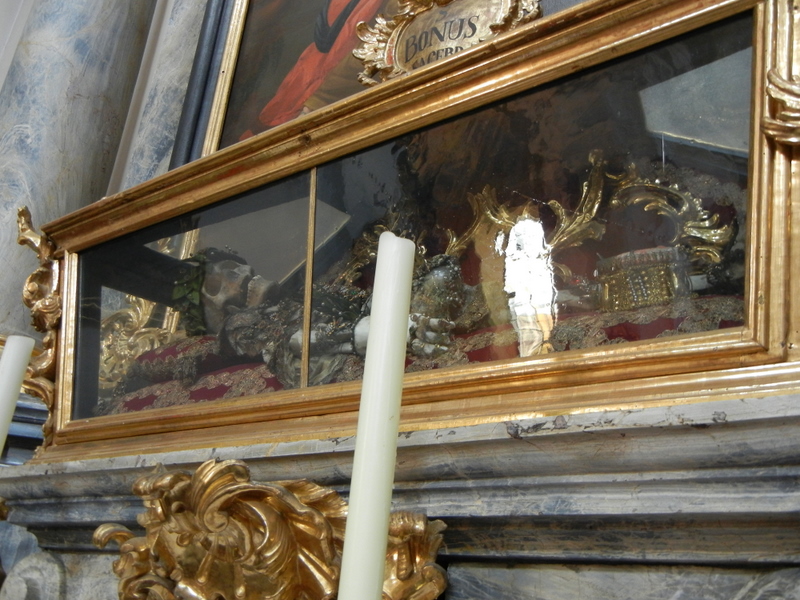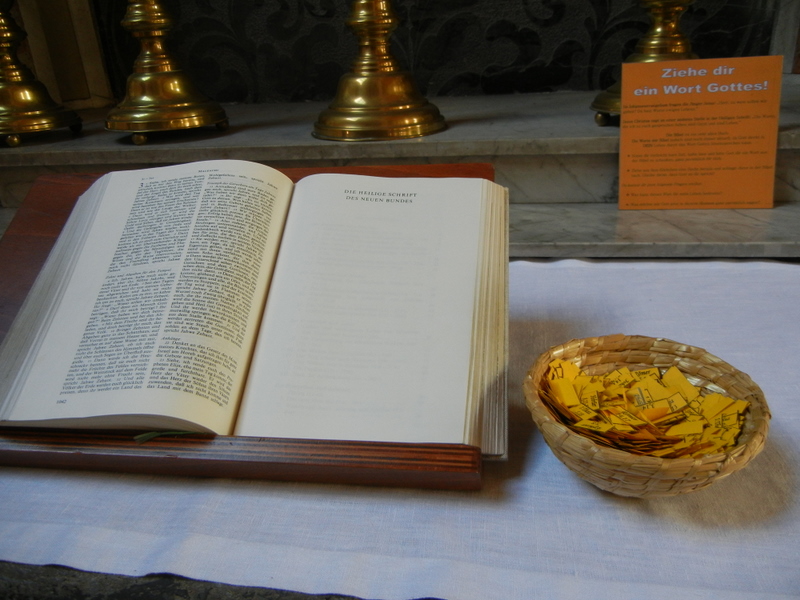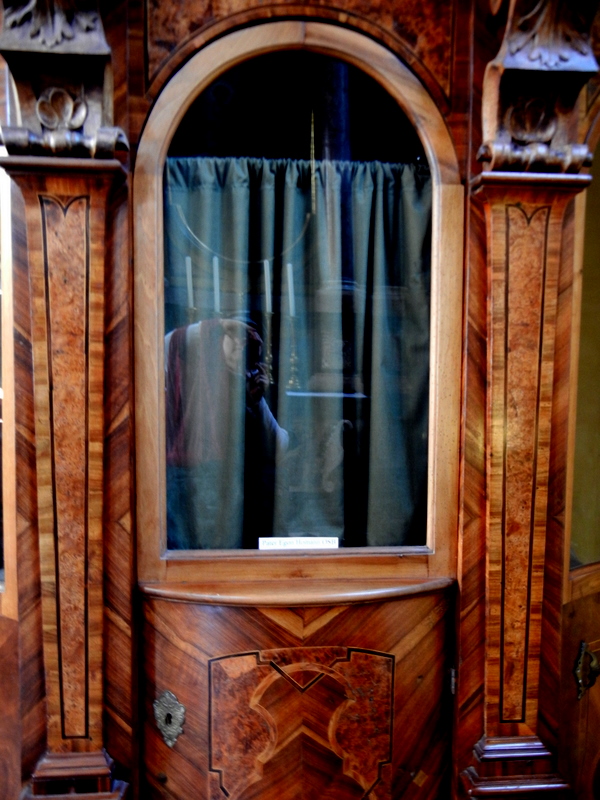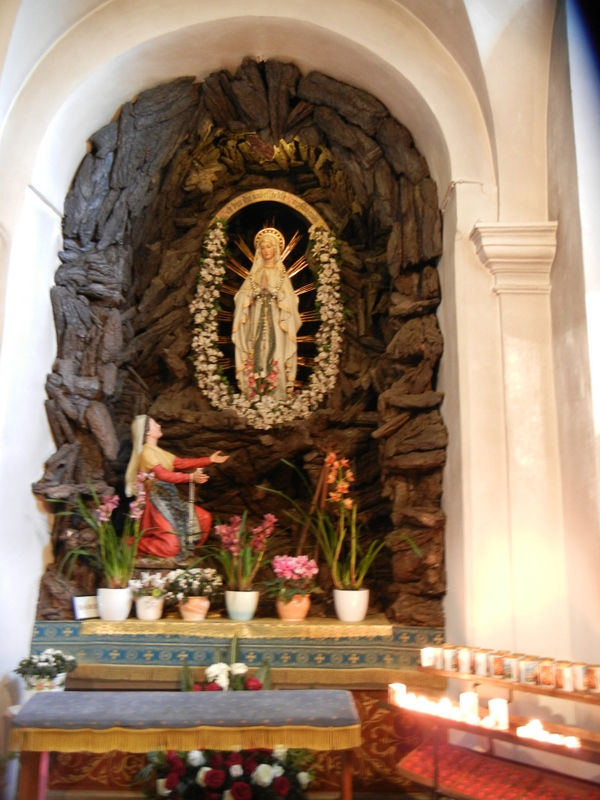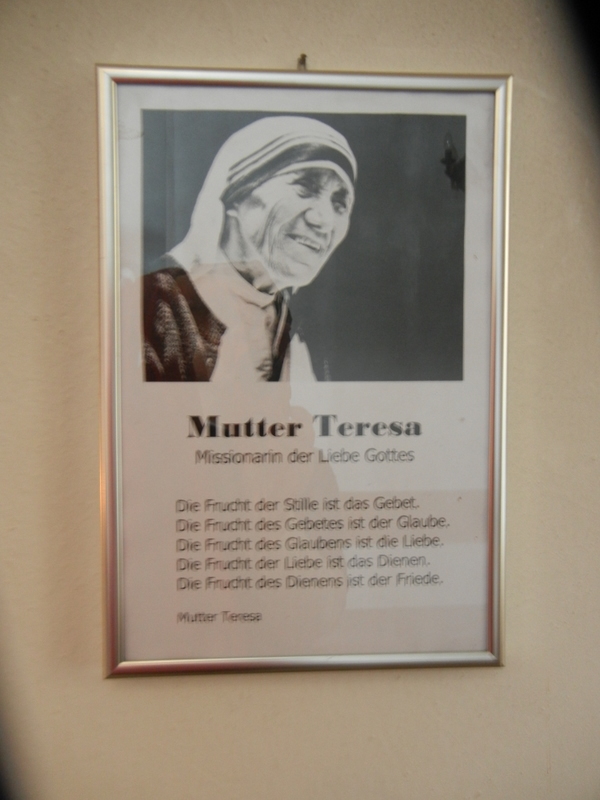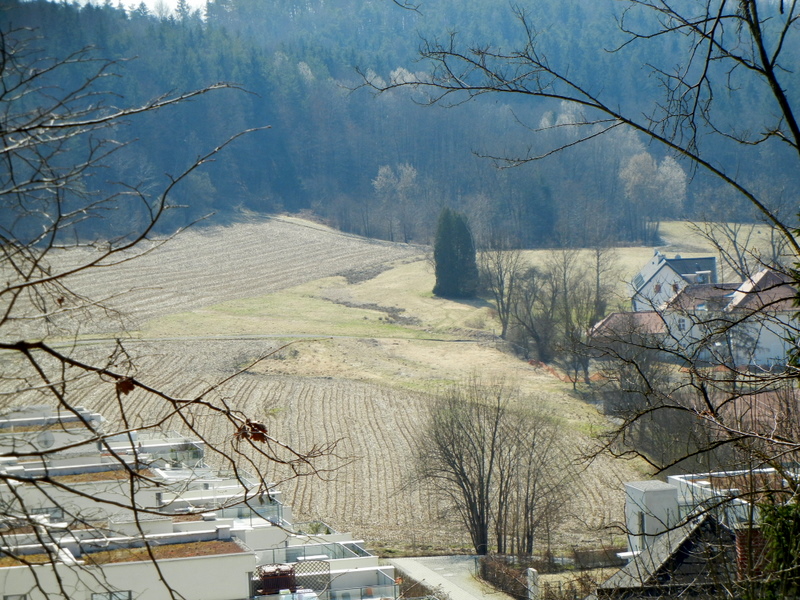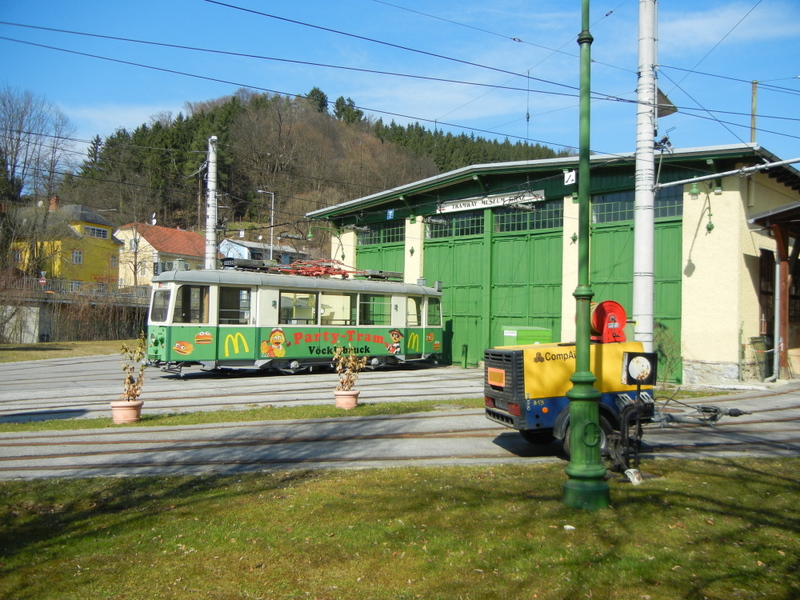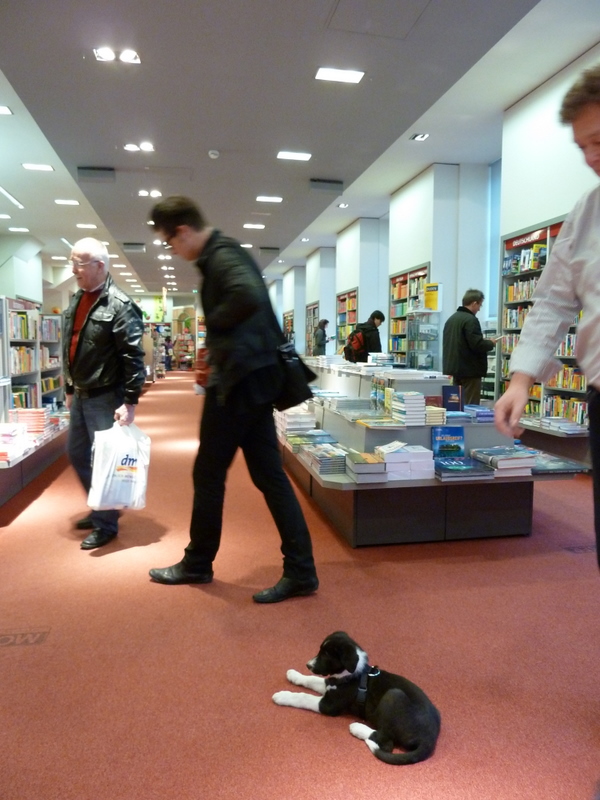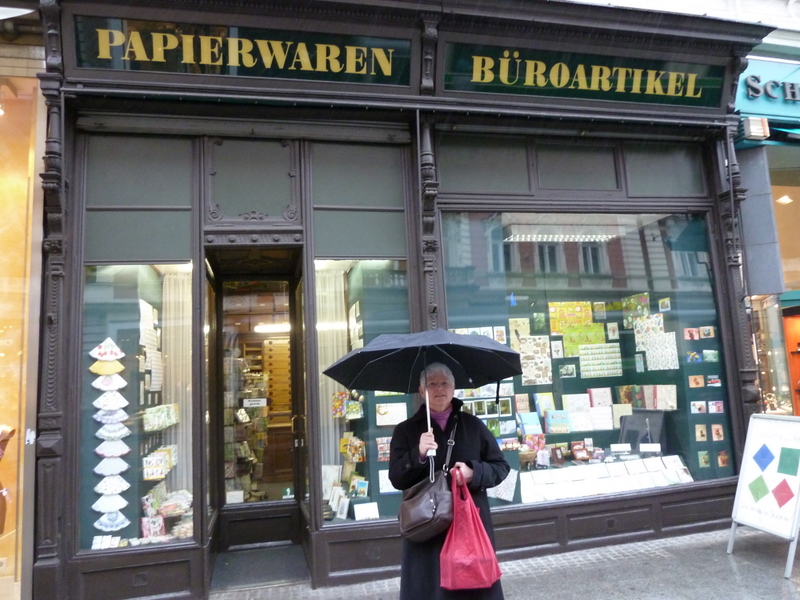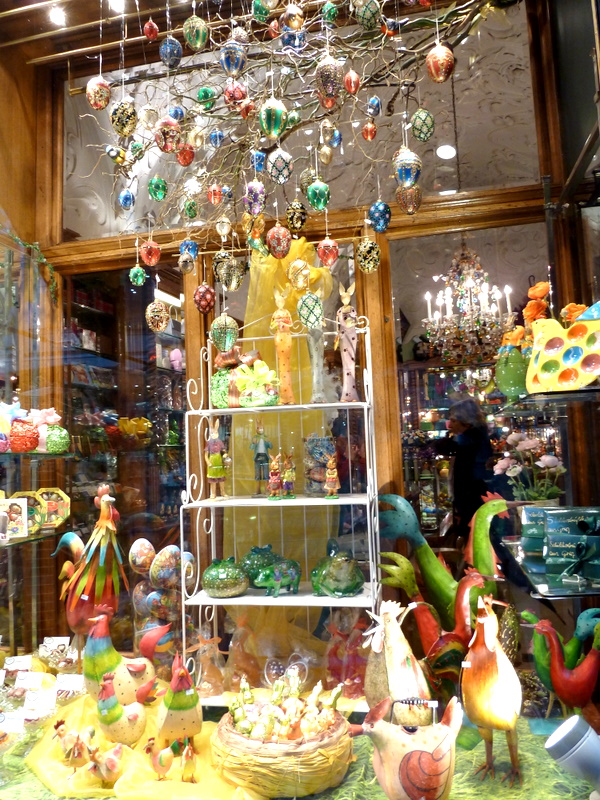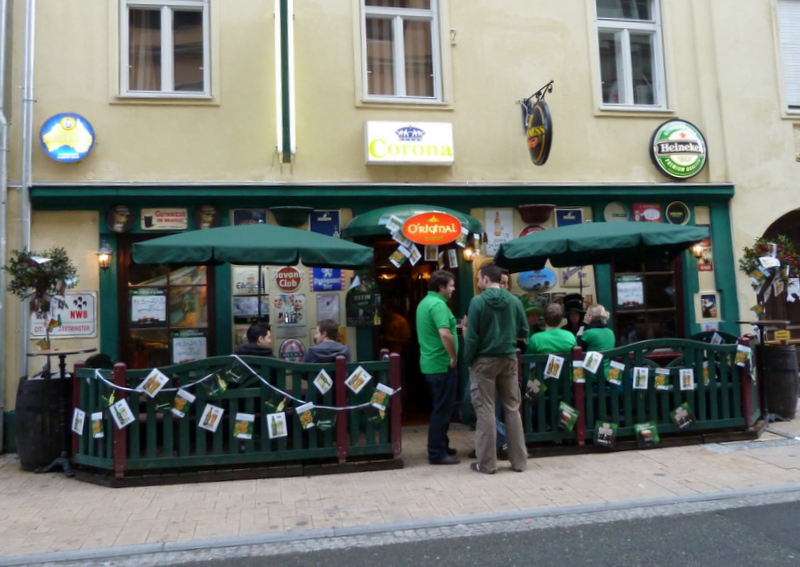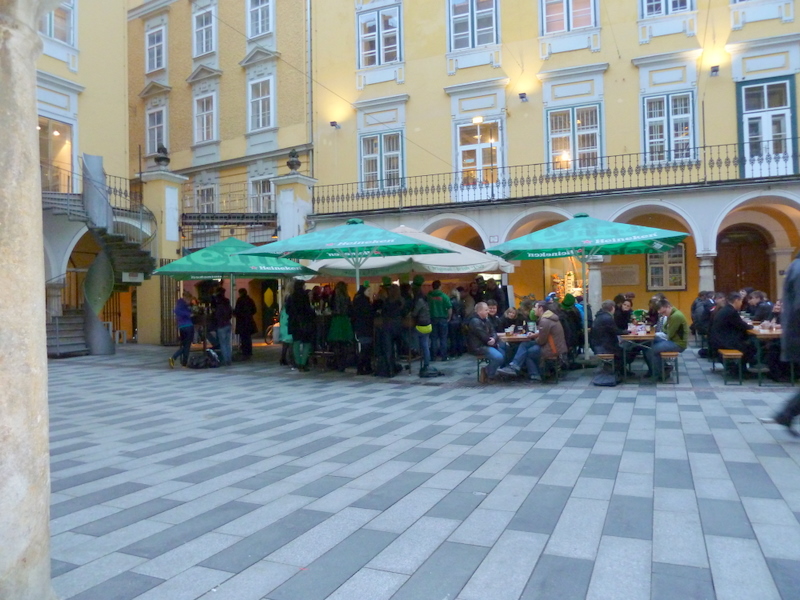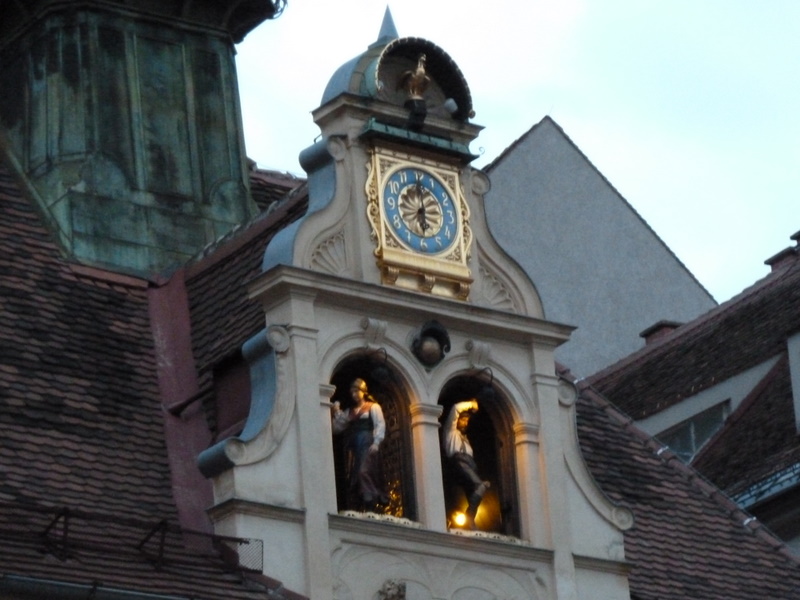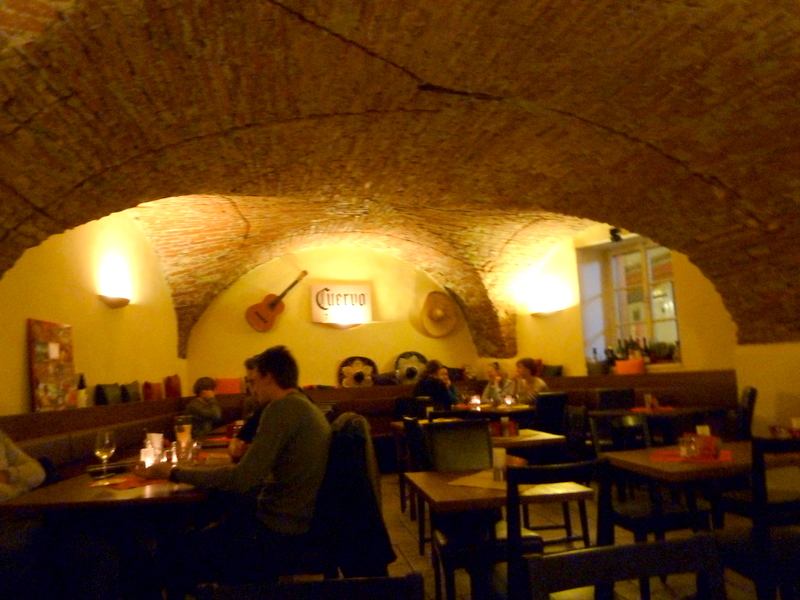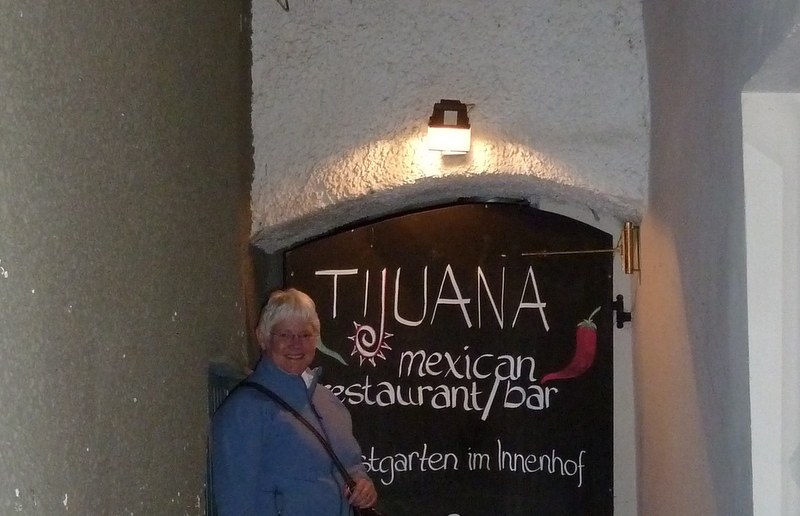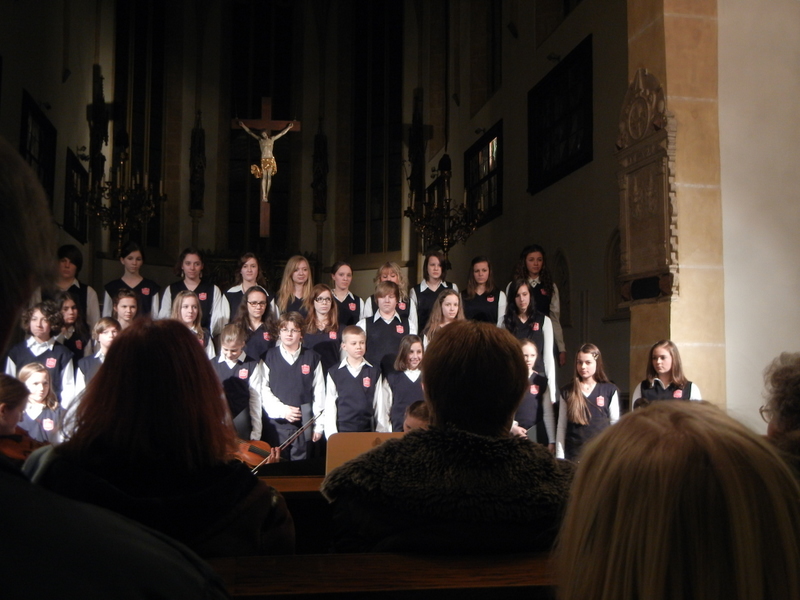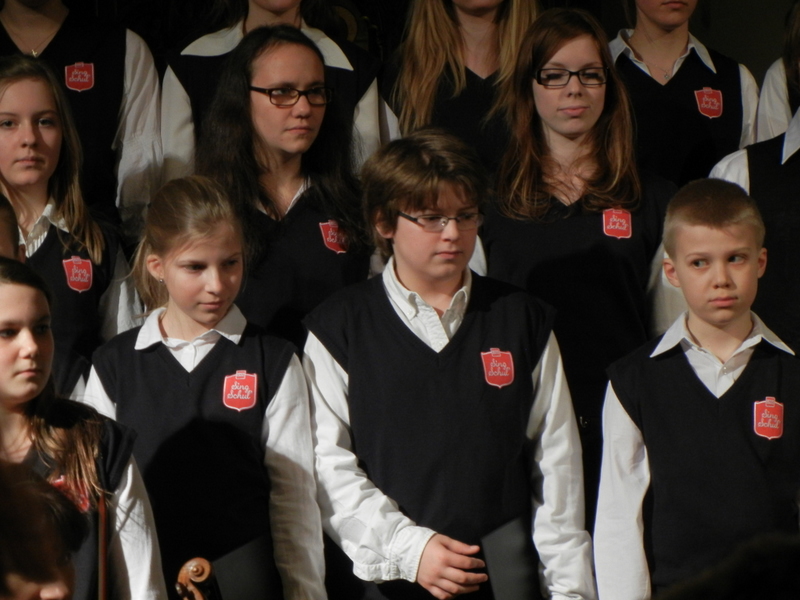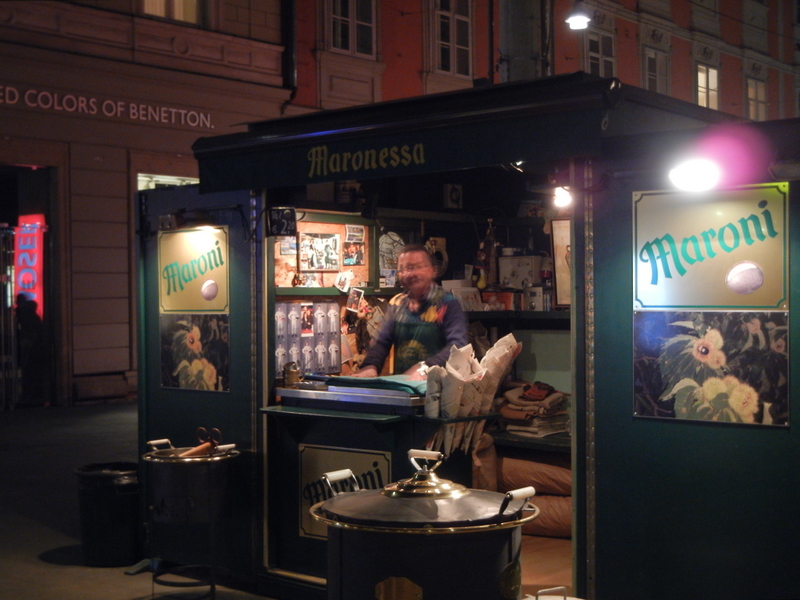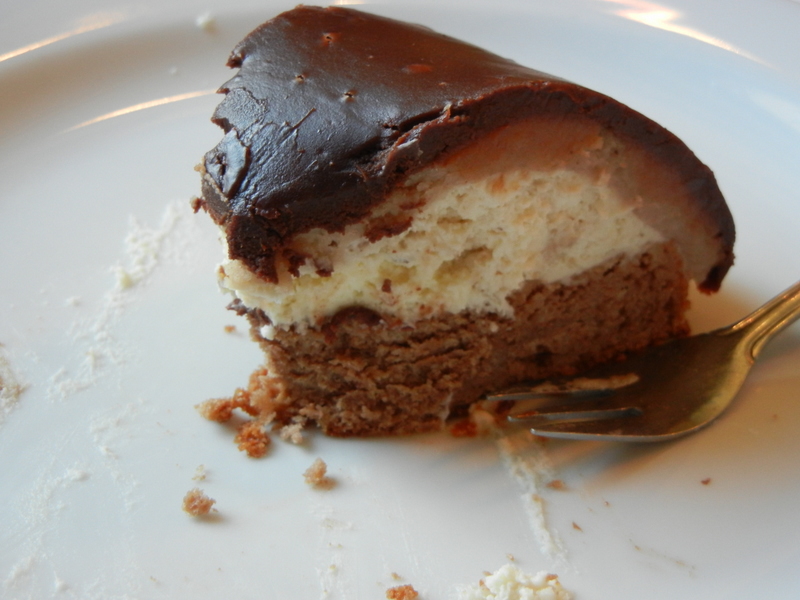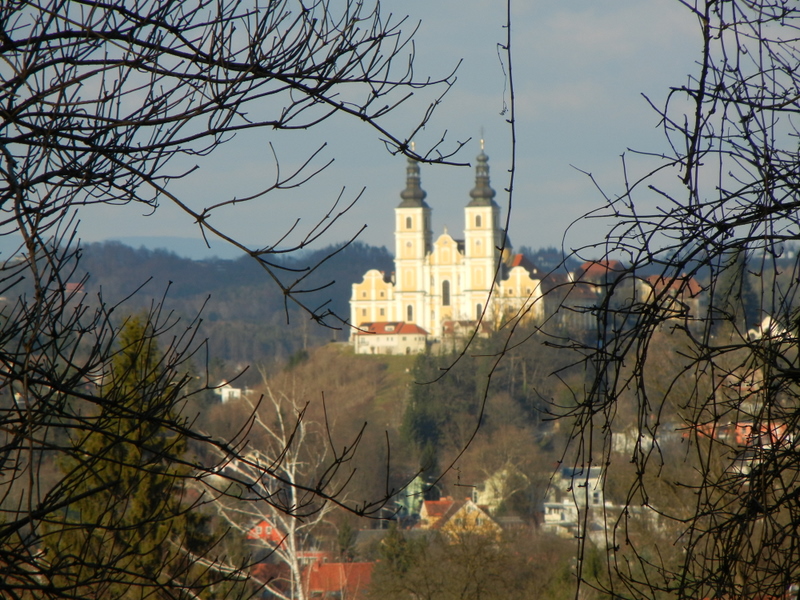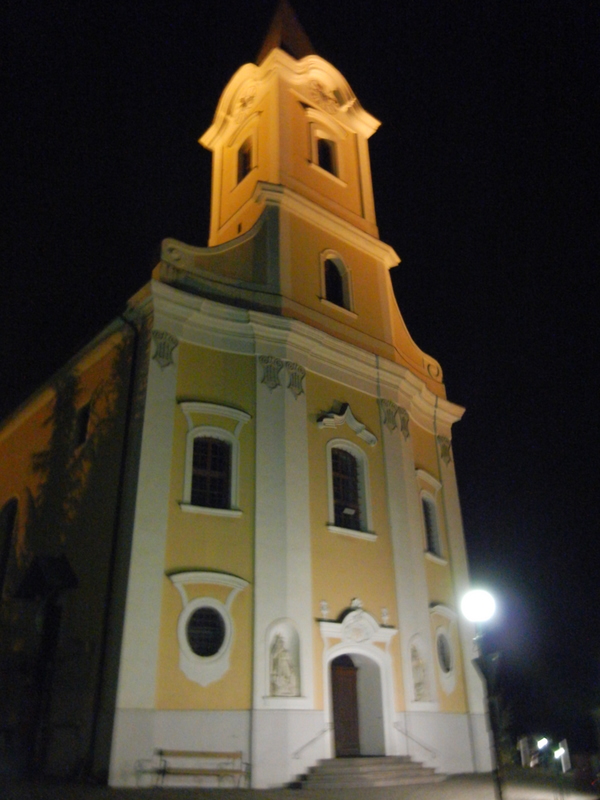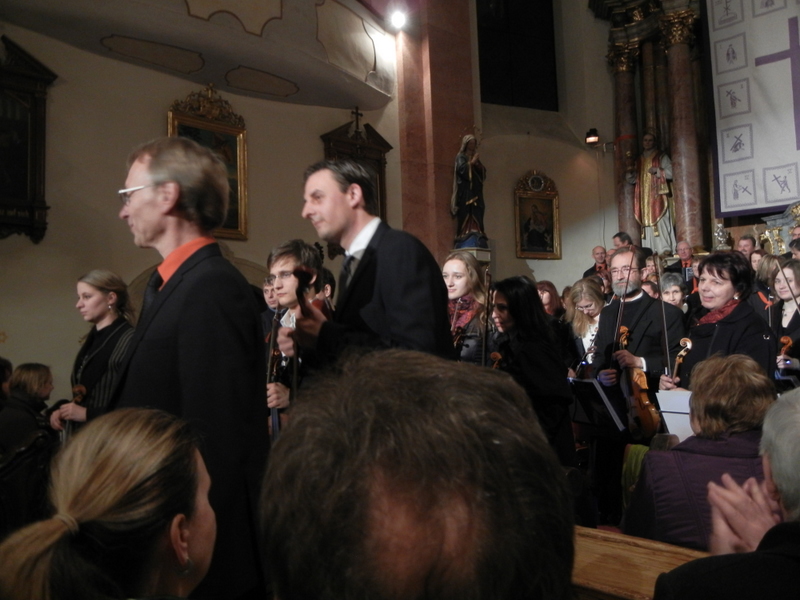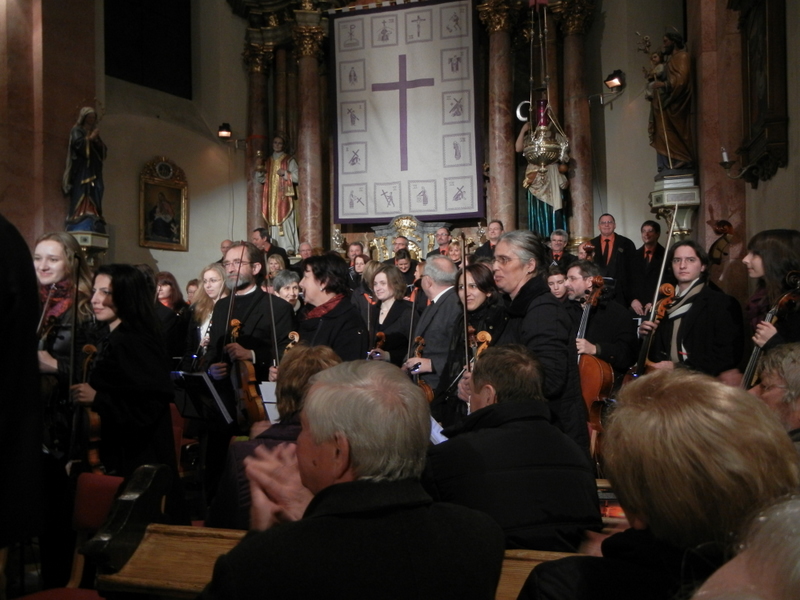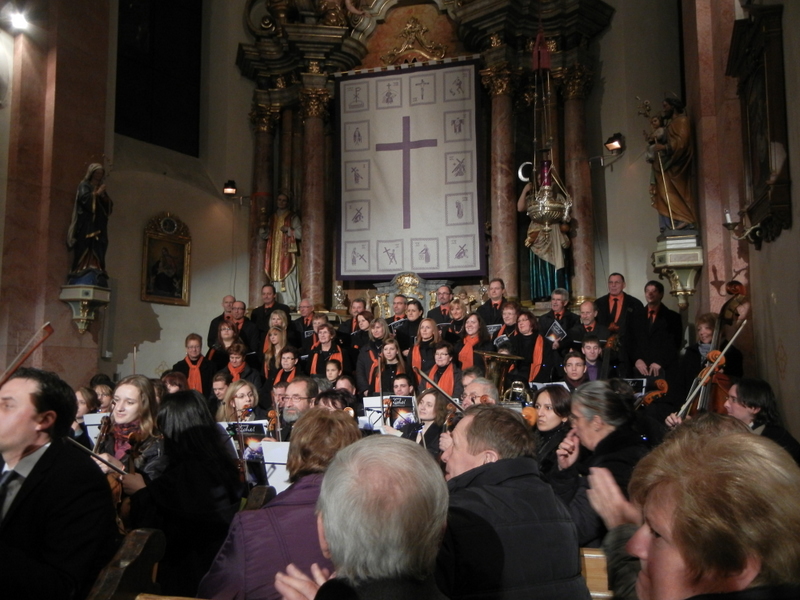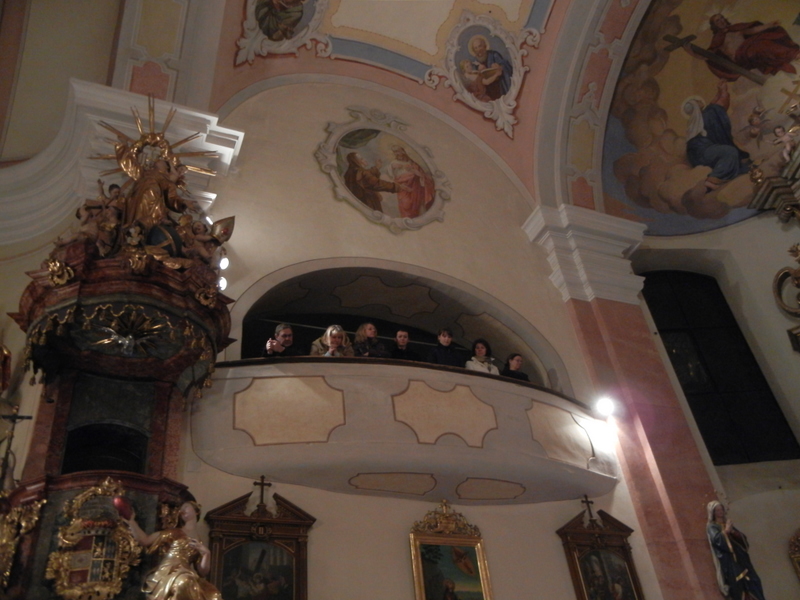Just when I thought we had experienced the ultimate in excursions on Friday, our friends Christina and Gernot called to ask if we would like to go out with them on Saturday. “Natürlich!” we said. That has to be one of the coolest words in our auf Deutsch vocabulary. It manages to get in all the hardest to make sounds.
So, we took the tram over to the central exchange point,where we saw a demonstration against eating meat. What? In Austria?
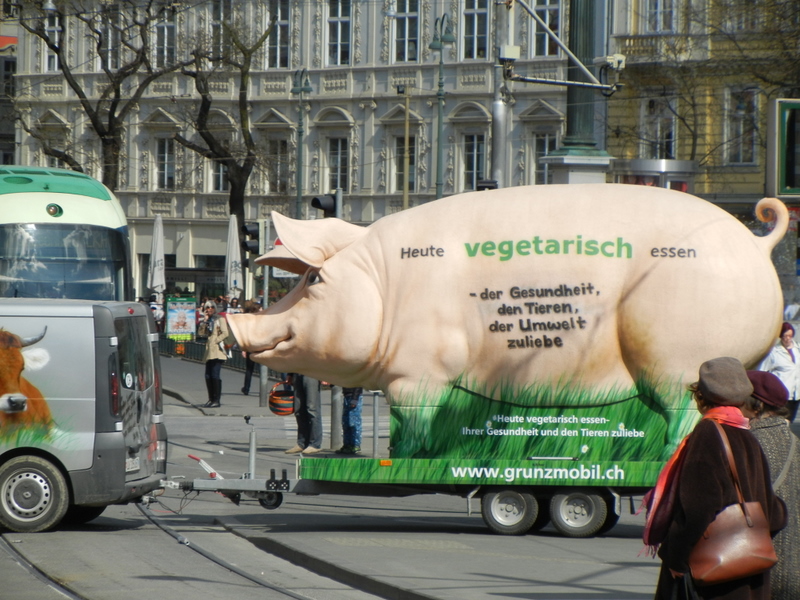
told by cop he needed to park differently - ended up blocking trams
We got on a second tram and rode it to the end of the line, which was to a place called Mur Park. The Mur is the river that ‘runs through it’ here in Graz. Bill was expecting a large city park, but whoa…what was this? A shopping mall! Just like the City Park mall, maybe bigger. Funny, calling places of consumerism ‘parks’. Since we were heading out of town, a place that offered ample parking on the side of town closest to our destination was the best place to meet our Austrian friends.
They said they were taking us to some places maybe we would have a hard time getting to on our own and that we would spend the whole day seeing things with some surprises thrown in. Loved it already!
We headed East out of Graz. The map below shows the quick way.
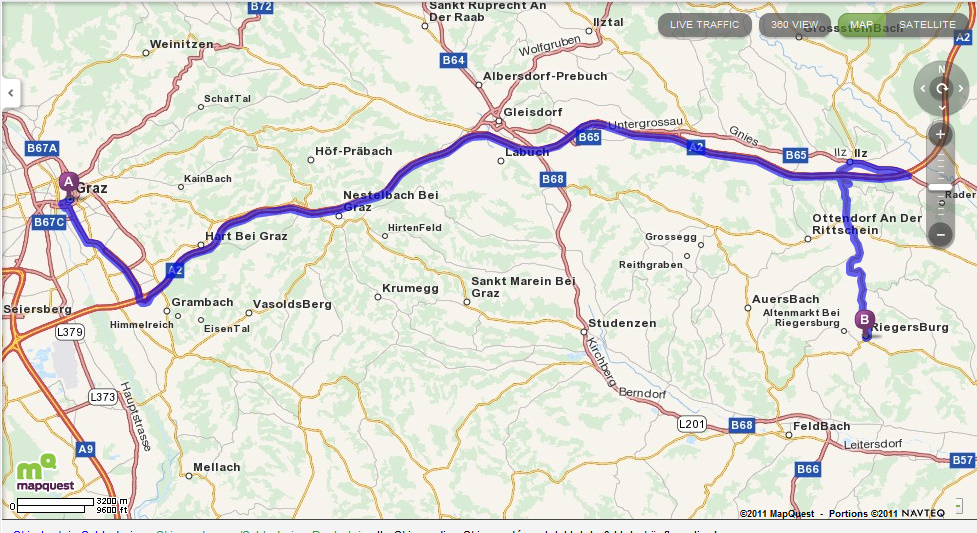
The road to Riegersburg
Gernot took instead the slow way, winding through the beautiful Styrian countryside. I don’t know what to compare it to in the US – upstate New York, maybe, or the palouse of eastern Washington with more than wheat. It’s full of verdant rolling hills with good roads that curve their way past assemblies of houses and farms. Make that fruit orchards (apples, pears and GRAPES). In the US we cultivate apples and other fruits mostly in rows of trees; here, as in northern Italy, they are mostly grown staked out like grapes. At one point we went through a newly constructed tunnel; Gernot rolled down the window to check the sound level as we zoomed through. Gotta love those engineers! 🙂
“Had we ever been to a castle?” was the query. Not in Austria, unless you count the berg in Graz. Well, today, we were visiting a proper castle, one that was both a fortress and a dwelling place. We could see it from a long way off.
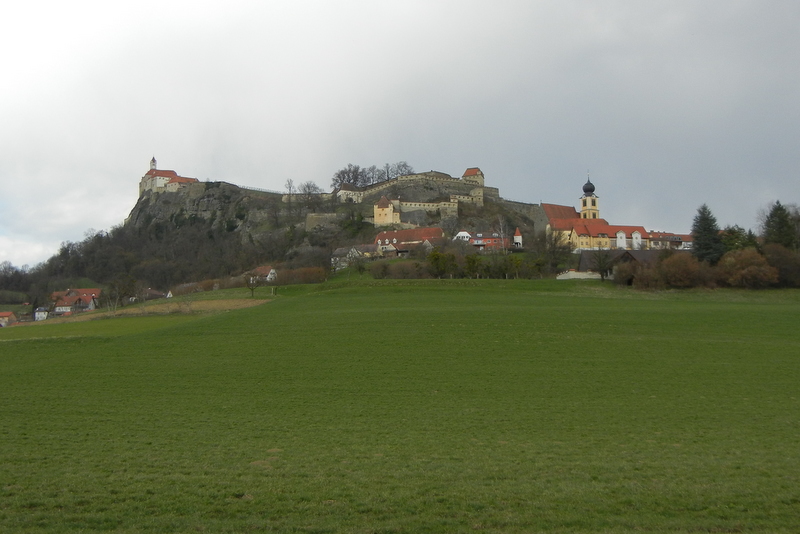
- Riegersburg Castle
That’s the castle up there on the basalt formation. It is actually located just at the southern border of Eastern Styria, in what is known as Vulkanland. The fortress itself is built on the ancient cone of a long-extinct volcano. It was never conquered, due to its impenetrability and steep paths. It was THE strategic outpost against the Turks and the Magyars and anyone else who wanted to invade from the East.
Here is another view of it from the other side.
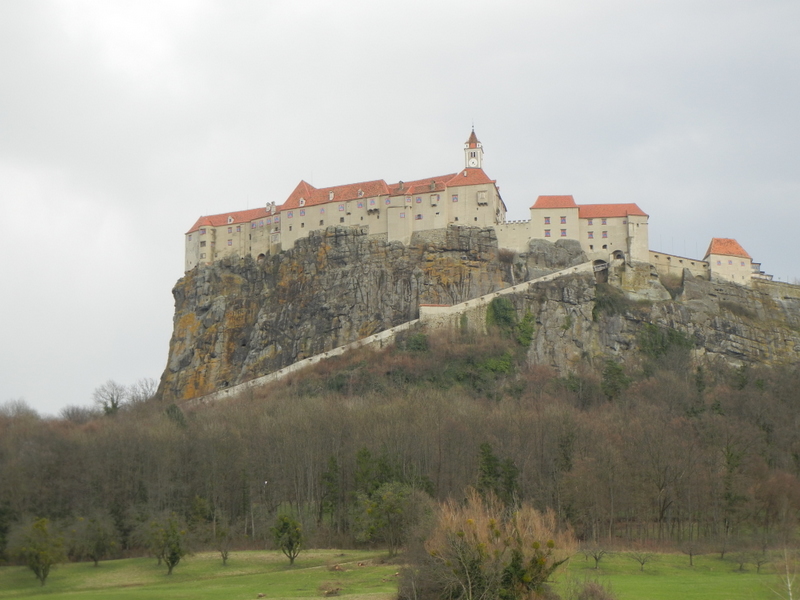
another view of the castle - check out those cliffs!
As most of you know, castles exist mainly for protection. In case enemies would come, the serfs in the surrounding village could make their way up through the (sometimes double) moats of the castle and numerous walls into the interior where they would be protected. This castle has double moats, three kilometres of defense walls with loopholes, seven archways and eleven bastions. It was quite a hike up; I imagine if adrenaline had kicked in, it might have been a faster trip! A cable-train on the north side of the castle can take you up in 1½ minutes but it wasn’t open for the season yet. (and I doubt we would have taken it, had it been open.)
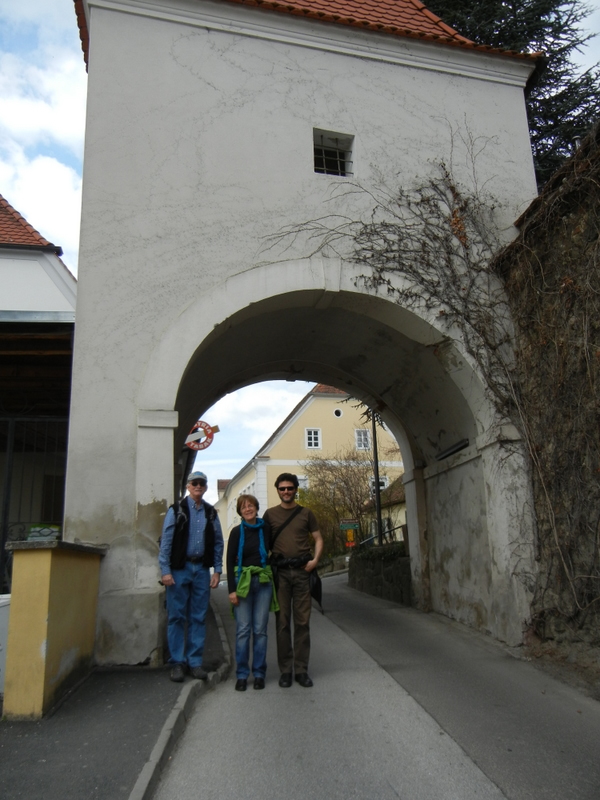
Bill, Christina and Gernot - Castle Riegersburg - first gate/archway
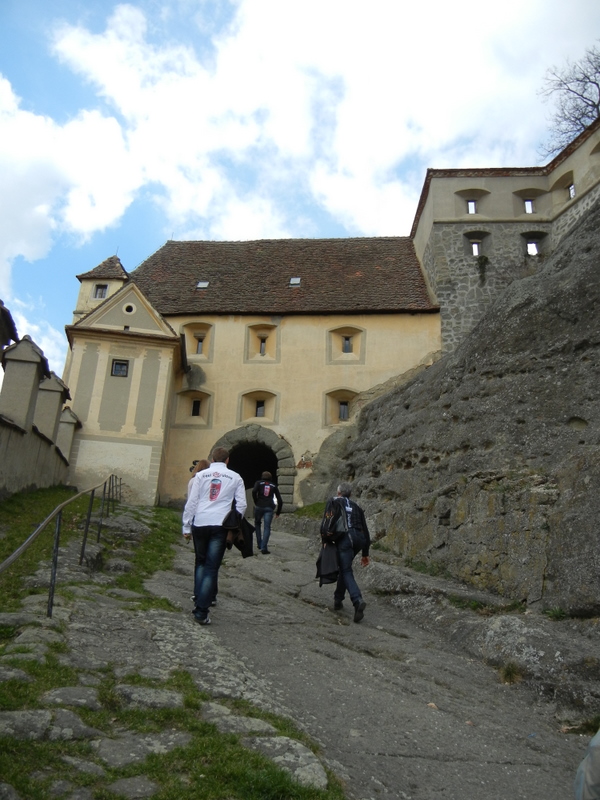
hiking up the basalt road
The basalt road is rutted from years of use by wagon wheels, first wooden, then iron. Yes it was really that steep!
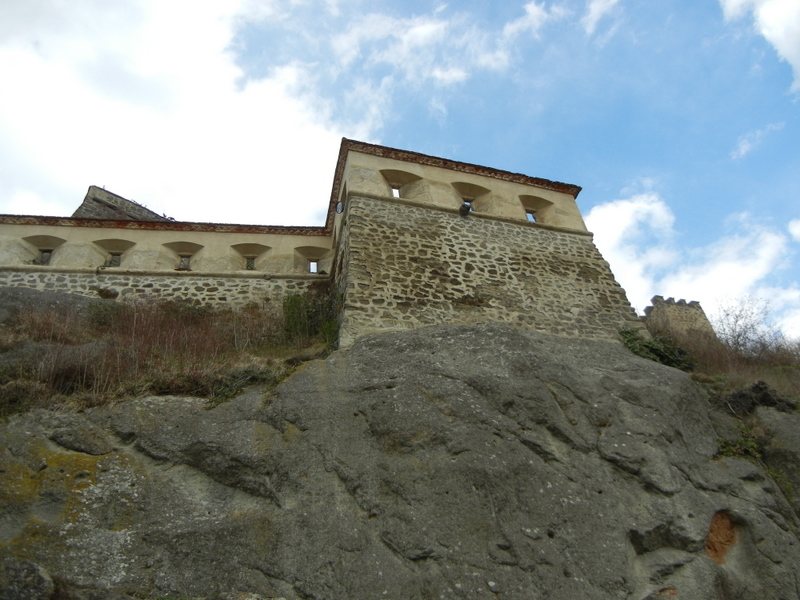
basalt and 'arrow windows'
This gives you a good look at the ‘arrow windows’, so shaped so the archers on the defense could fire down, but arrows fired up would have a harder time getting through the opening. With such defense, maybe boiling oil wasn’t necessary!

arrow window
The doors (open for us today) were clad in iron and further had a small door for people but not, presumably, camels. (or horses)

small door - 'wicket' in English castles. Christina called it the 'eye of the needle'.
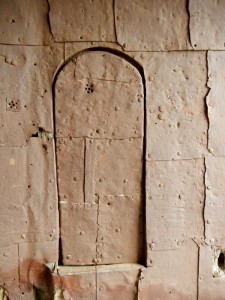
the people door in case the main door was closed
We were among the few people at the castle this day. There was a group of maybe 20 people on a tour, and a few other families, but that was it. The castle itself opens for the season beginning April 1, or the next weekend. But that was ok by us. Another place to put on a list of ‘visit again’!
The archways are supported by giant blocks of basalt.
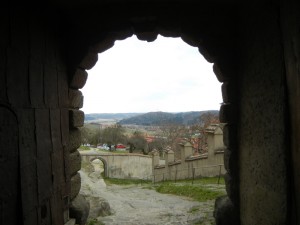
looking through the doorway - blocks of basalt outlining the edges
This edifice has undergone many transformations, as is true for so much of the architecture in Europe. The first record of a castle here is from 1138, built by a knight, Rüdiger von Hohenberg. In the late 16th century, the castle was extended in Renaissance-style by the Barons of Stadl. From 1637 on the castle belonged to Baroness Katharina Elisabeth of Galler, who further enlarged the castle and created the ornate baroque rooms that are the venue for many weddings and other events today. Unfortunately, because the castle was not officially open, we weren’t able to see the interior. In 1822, the Duke of Liechtenstein acquired the castle and it still belongs to that family today.
And now, I am going to stop with the commentary and just let you enjoy as we did as we walked through.

view of town over the side wall
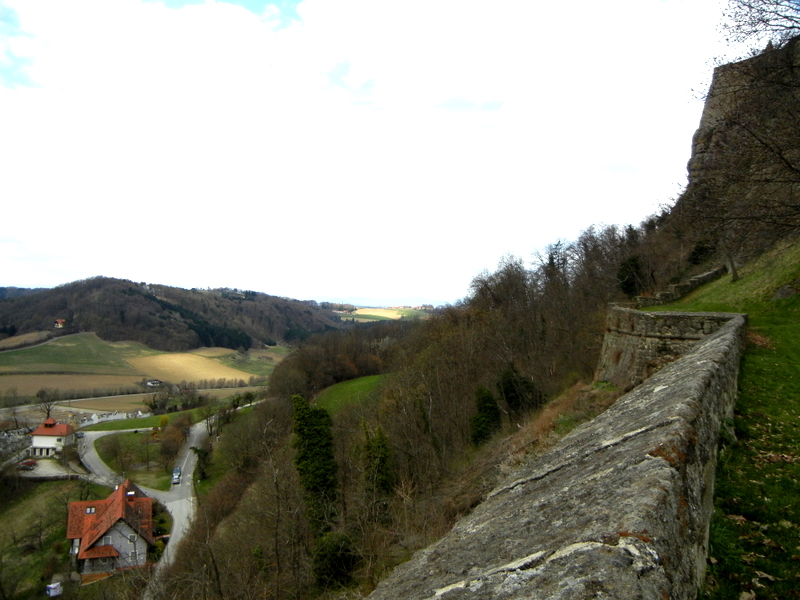
the wall - one of them, anyway

further up the road - note wagon wheel ruts
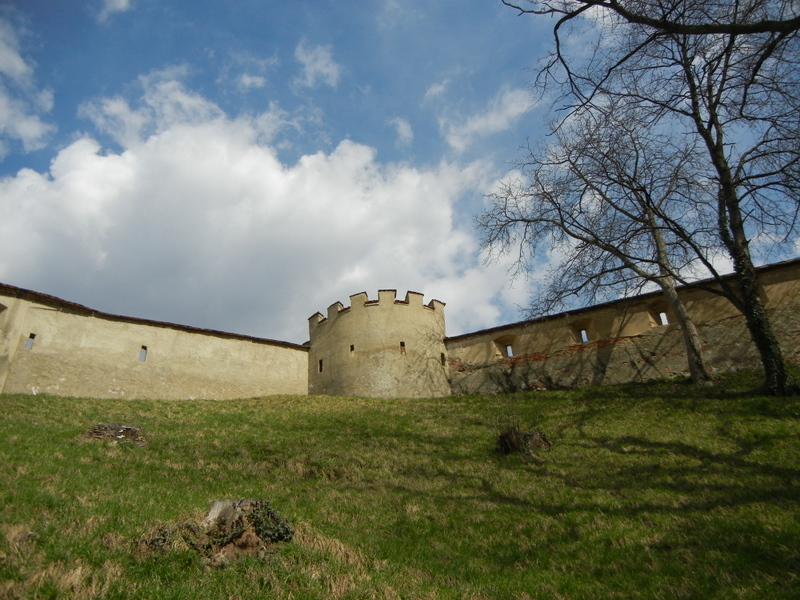
one of the towers
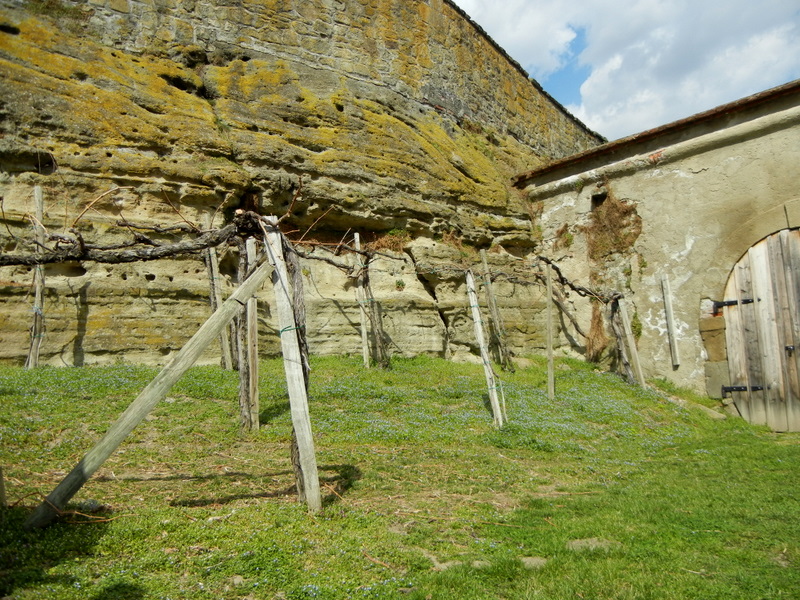
vines on the inside
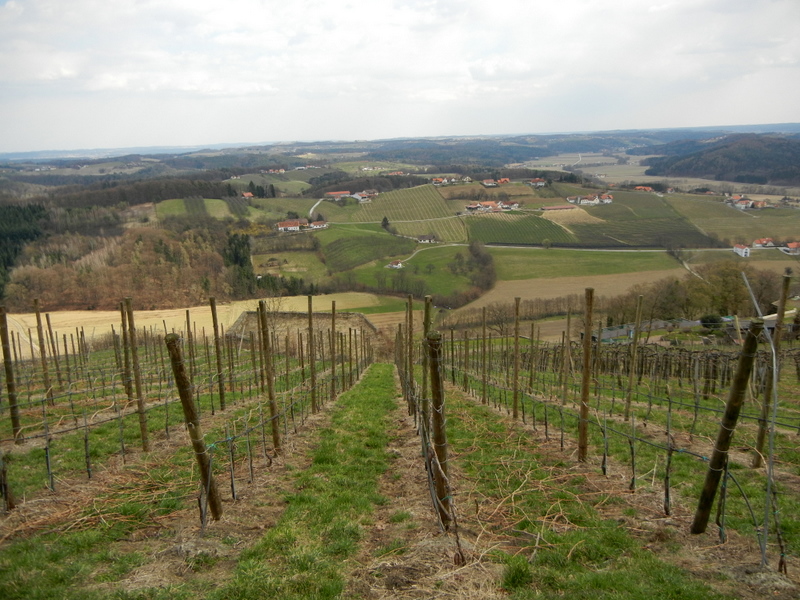
vines on the outside

vineyards everywhere!
At this point, let me interject that this is a BIG HINT as to what we were in store for next. But I digress.
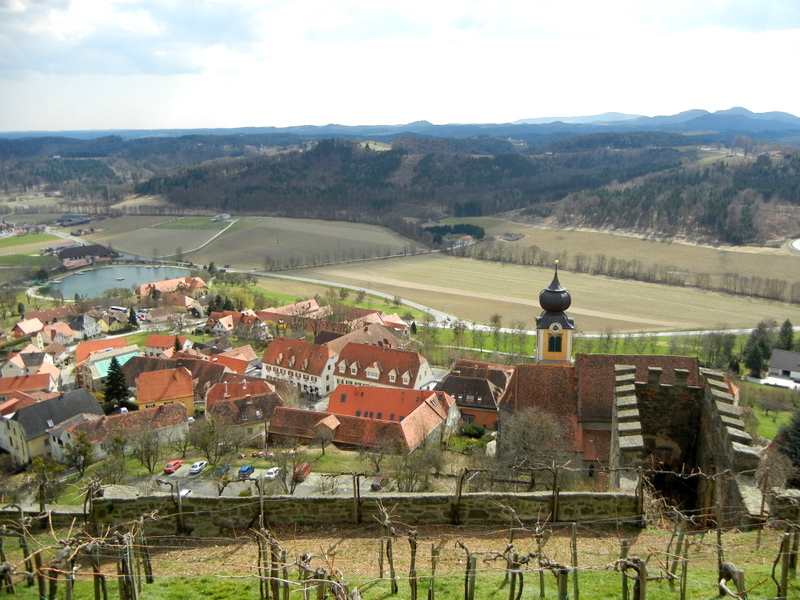
better view of town and surrounding farms
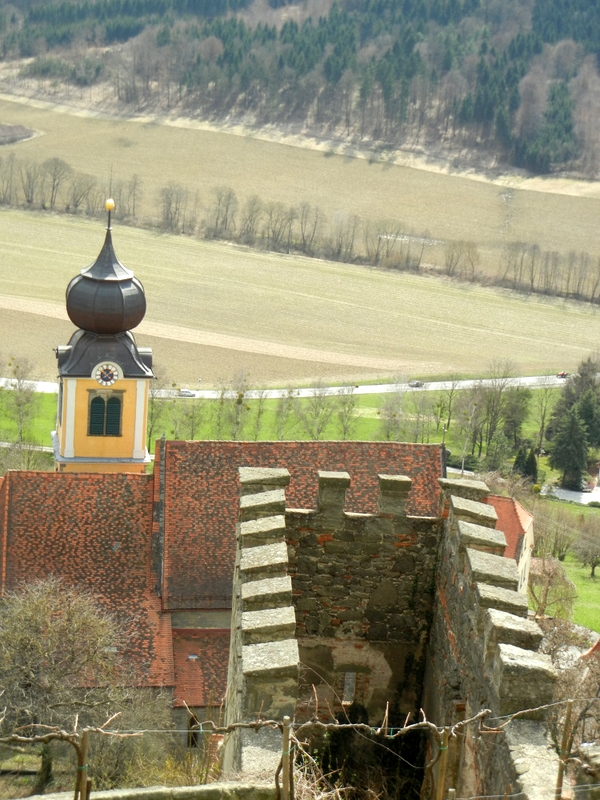
one of the bastions
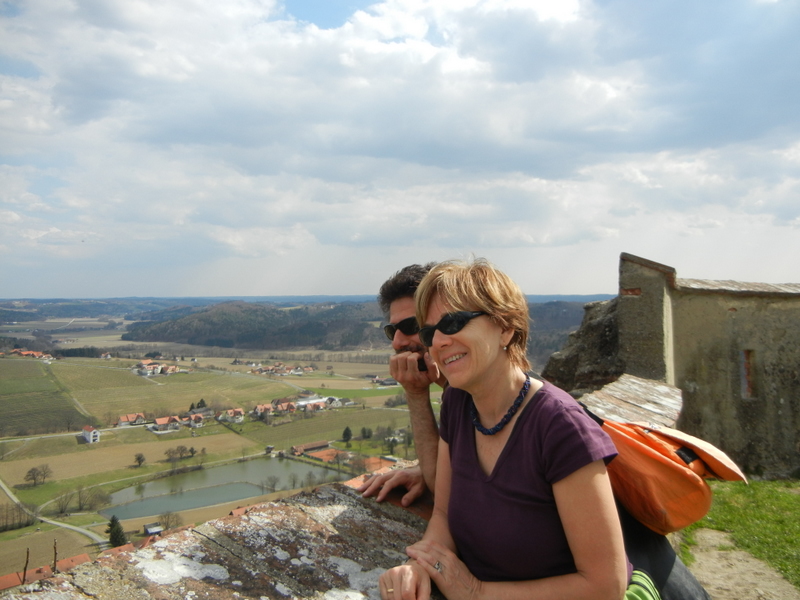
our dear friends
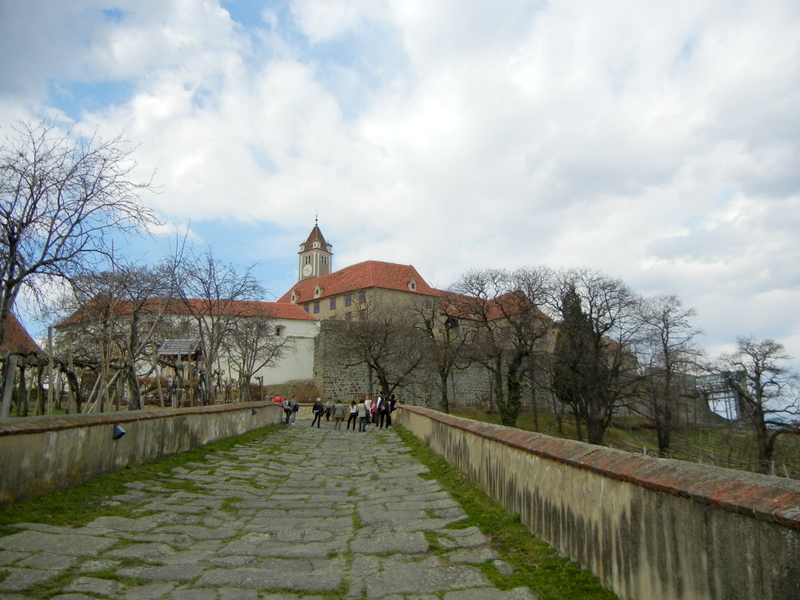
onward and upward
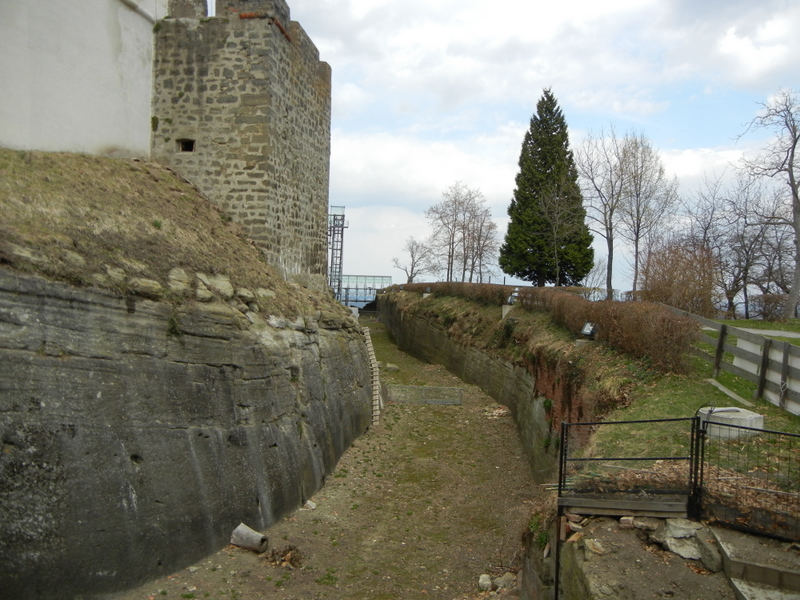
the moat
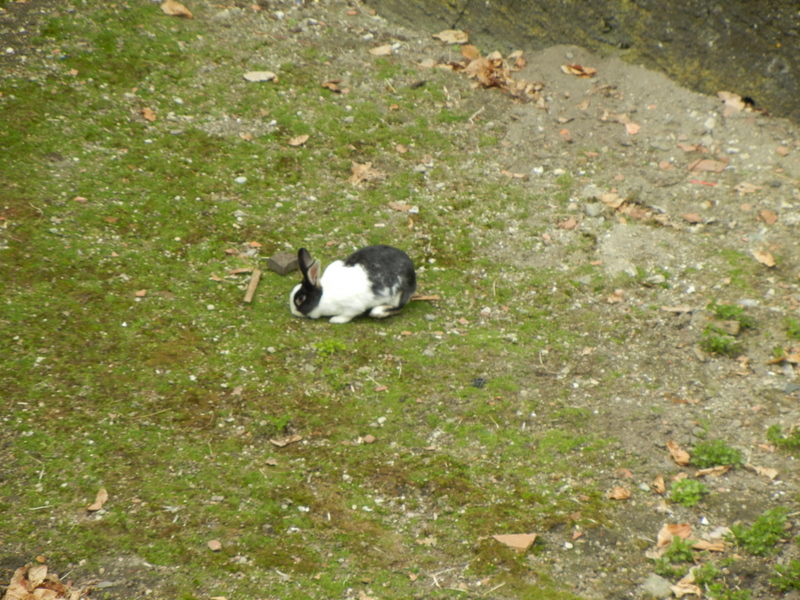
- …and the new guard of the moat! Appropriate for this season!
There was actually a rabbit hutch under the drawbridge! The Liechtenstein Family lives in the village — perhaps their grandchildren care for the rabbits?

the drawbridge
I wonder if this guy is a spy?
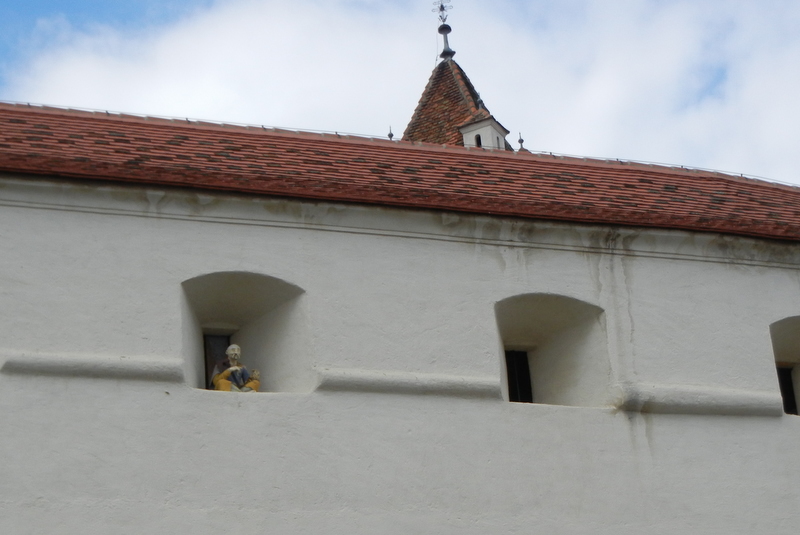
the watchful turk
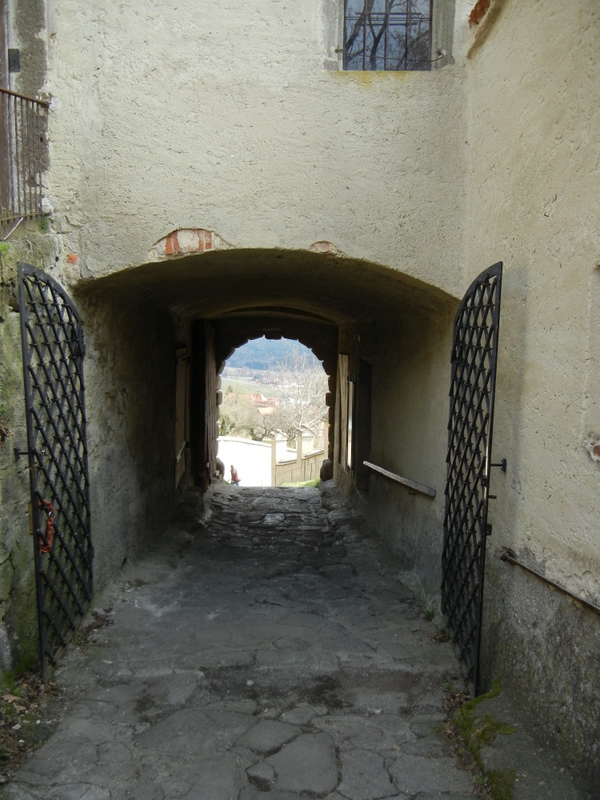
- more gates to go through on our way down
More odd creatures on the way down!
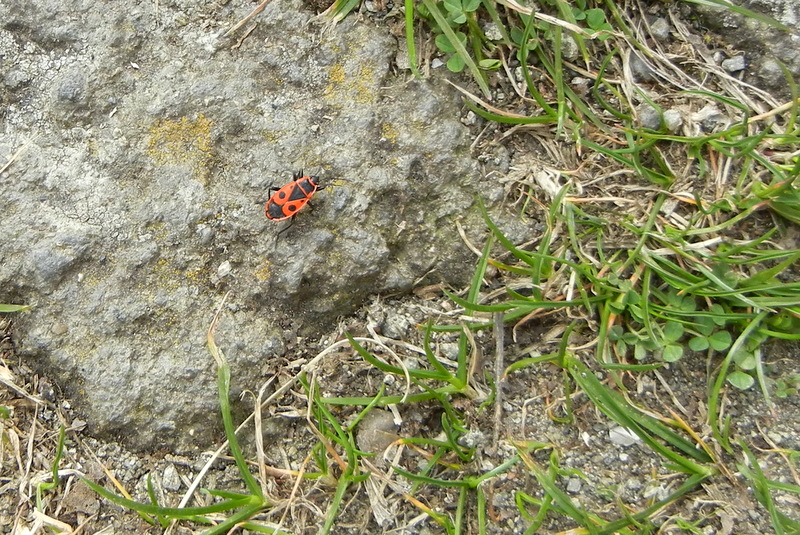
beetle at Riegersburg Castle
We couldn’t see the interior of the castle which includes 100 rooms, twenty-five of which are used for the two museums: one on Witchcraft (and the witch hunts and trials that went on from 1673 – 1675 and which resulted in many women being burned at the stake) and the other on Legendary Women, including one of the owners of the castle who was an independent woman, unique for that time.
We could however visit the castle chapel which was simply gorgeous.
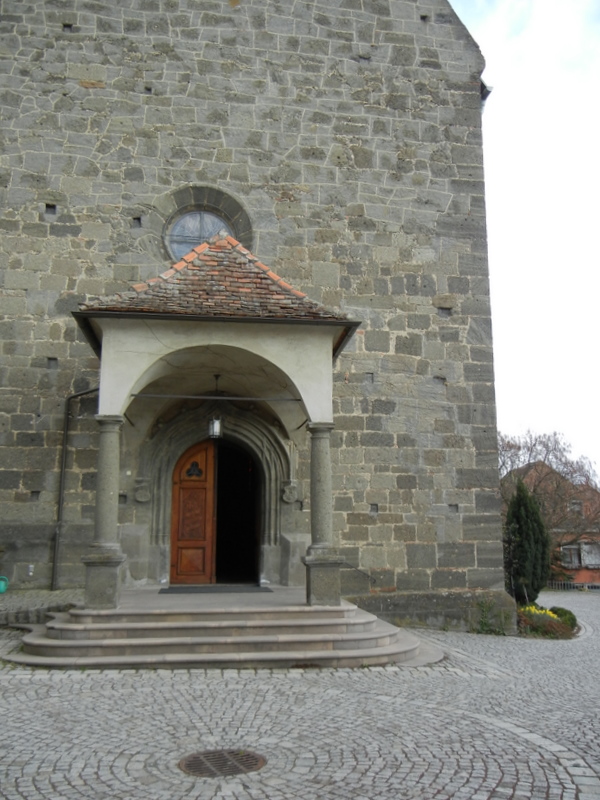
outside the chapel at Riegersburg Castle
Inside, it was dark as usual but light was streaming through the NEW glass windows. A glorious sight!
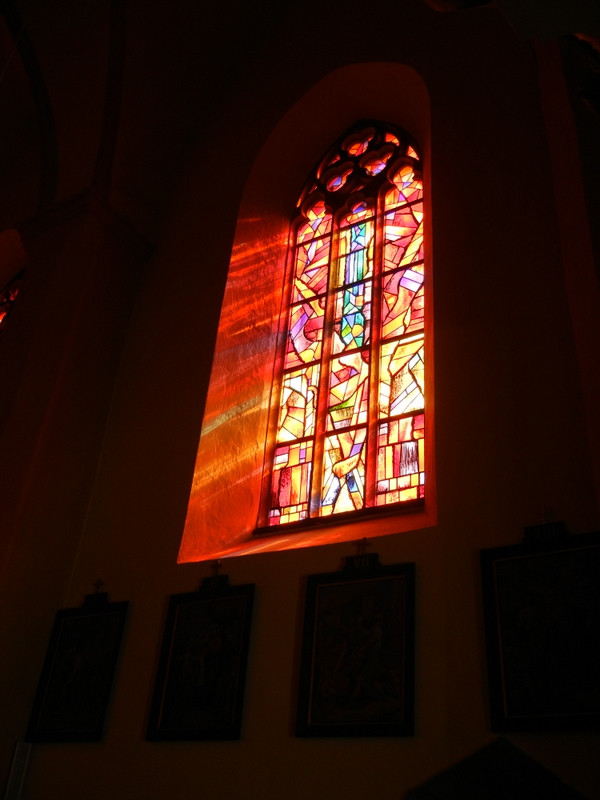
streaming light
Best of all we were treated to an impromptu concert by our friends. Both Christina and Gernot are musicians. She directs the children’s choir at her school and he plays the trumpet. They both sing! Here they are singing an Austrian folk song. Enjoy!
Right click on the photo and select ‘open link in a new tab’ and the video will open.
If the day had ended right there, it would have been enough. Dayenu!
But there was more! From the castle we visited a small wine shop close to the castle, which offered free tastes of local wines, bottled juices from the local farms, and handmade gifts. We tasted several white wines and one very fruity rose but ended up buying only some juices and needlework there, as our friends said we would go directly to the farmer to buy the wine! This is the part of Austria known for its white wines!
That was our next stop! Bill’s colleagues at the universities asked me not to mention how good these wines are or for what price they are sold. It’s one of Austria’s best kept secrets. I just wish I could figure out a way to bring back more than 2 bottles!
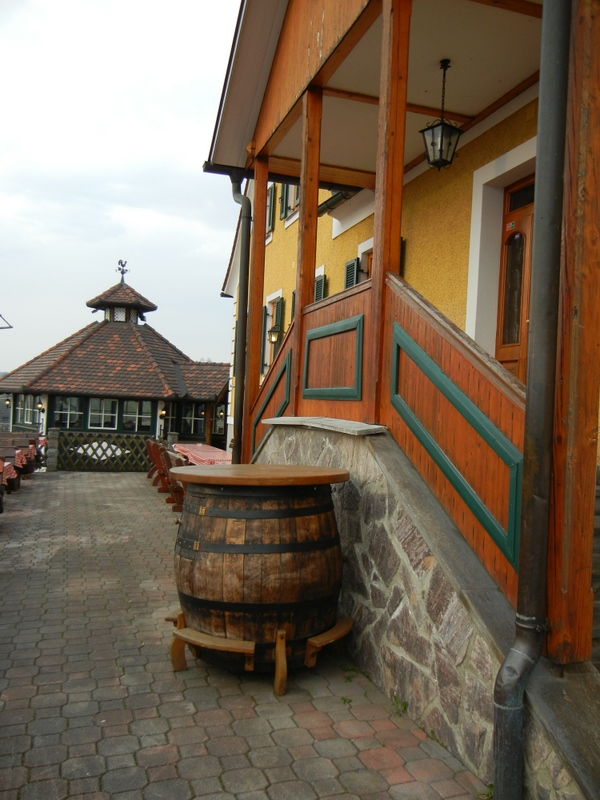
- wine barrel at one of the regional winemakers
Many of the wine farmers (wienbauern) also run small restaurants, at which they offer their wines. These buildings are not in the village, but rather out in the hills you can see from the castle. We parked next to the barn, walked past the apple storage and into the foyer. We only bought wine and didn’t stay for dinner because we had a few more stops to make first!
Next up was the furniture maker-restorer, Famille Golles-Valda, which took us back over other hills close to the castle. On the way we passed several odd looking, wind-driven wooden structures, which Christina said were to keep the birds away. She called them ‘klip-klaps’ so named for the sound they made, although some could be set up to ‘sing’ musical notes!

klipklap
When we arrived at the Famille Golles-Valda business, the sign said to call for an appointment on the weekends. Never mind, with typical Austrian hospitality, we were invited in to look around. The work was gorgeous, mostly antiques which had been totally refinished or restored, although I can see the Keno twins on Antiques Roadshow cringing a little when you mention antique and refinish in the same sentence!
The view of the castle from the business was breathtaking and gives you a better sense of its height!

- view of the castle from Golles-Valda
With all this touring we had worked up quite an appetite, although it was only 4 o’clock and we had consumed delicious Styrian apples on our trek up the castle road. Nevertheless, to the Buschenschank! These are little family-run restaurants that offer fresh, local fare, usually cold — served on large wooden platters. Some of the Buschenschanken also offer rooms for overnighting, so they become an ideal way to spend a weekend in the country, eating great food and drinking local, fine wines without worrying about driving home! We ‘ve noticed that Austrians are VERY observant about not drinking and driving. The driver almost never drinks alcohol. (This, of course, is in stark contrast to the embarrassing suggestion of one of our 2011 Montana state legislators who feels that drunk driving laws need to be MORE lax.)
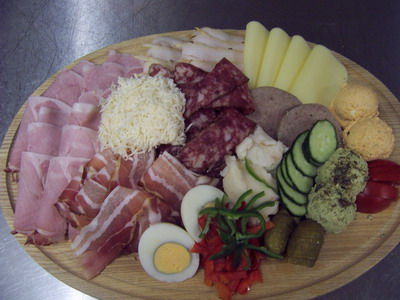
Buschenschank Platter
So we ate and had a great time visiting over delightful plates of food.
But there was still DESSERT! On to the ‘surprise’ which was a chocolate factory, also right out there in the country! I don’t know what the factory is doing out there, away from the population centers, but there were tons of other people who also had the same idea as we, so the Zotter family must be doing something right!
Think Tillamook Cheese factory only with chocolate: viewing windows with chocolate bars riding by, for the taking (if you pay for the tour), free samples of chocolate from the –oh 200 or so–varieties displayed along one wall of the building, tastes from three different chocolate fountains, or try the liquid over a cacoa bean, or best of all, select a grab bag stuffed with chocolate seconds for only 1,50 € ! (That’s what I did!) The best thing – it’s all fair trade!
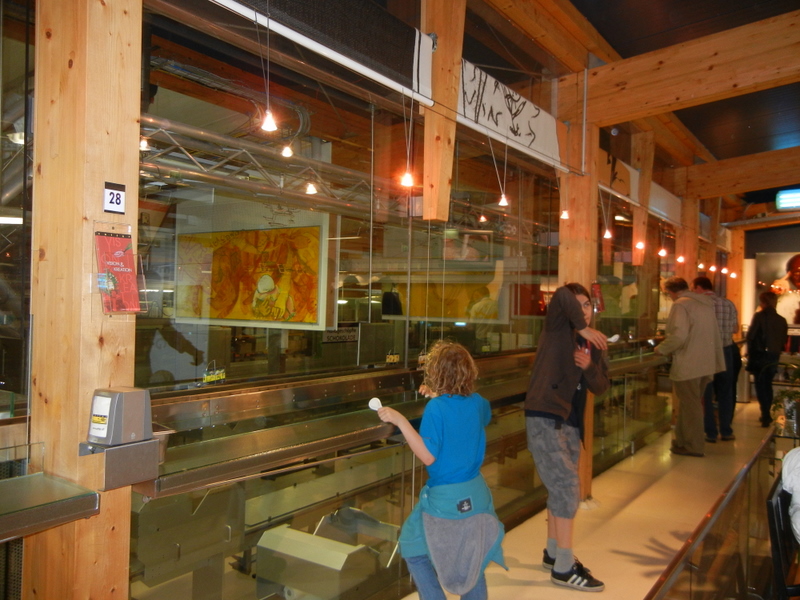
omg-chocolate at Zotter Schokoladen Manufacktur & Theater

chocolate conveyor belt
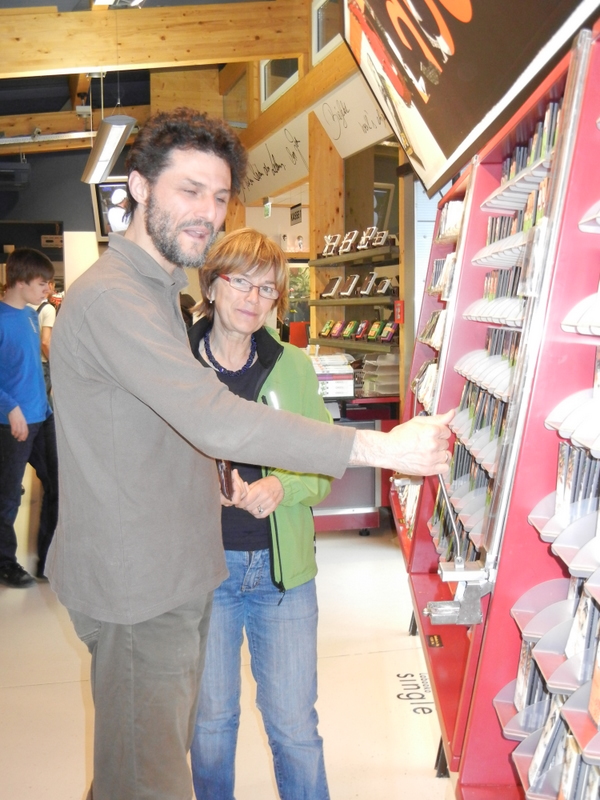
slot machine for chocoholics - it's how you get free samples
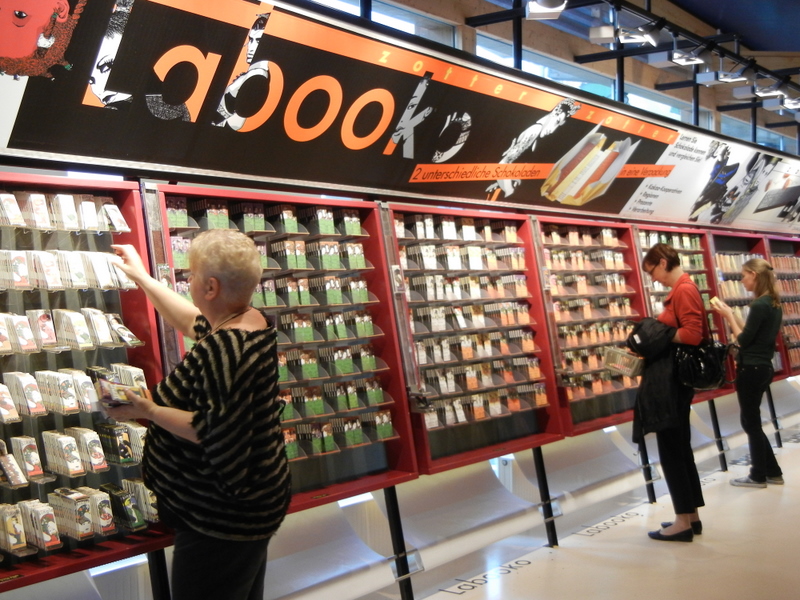
rows and rows of chocolate - and this is only a partial view!
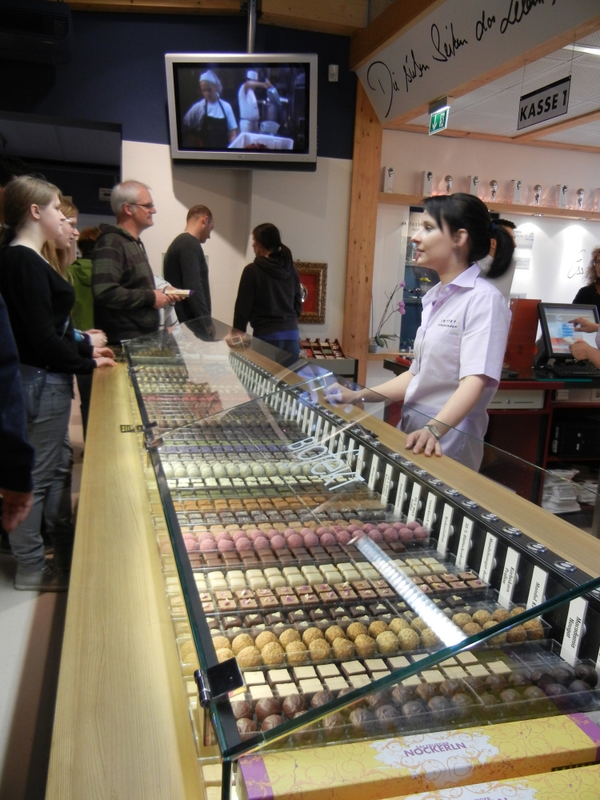
- oh, and did I mention the candy counters with individually crafted chocolates?
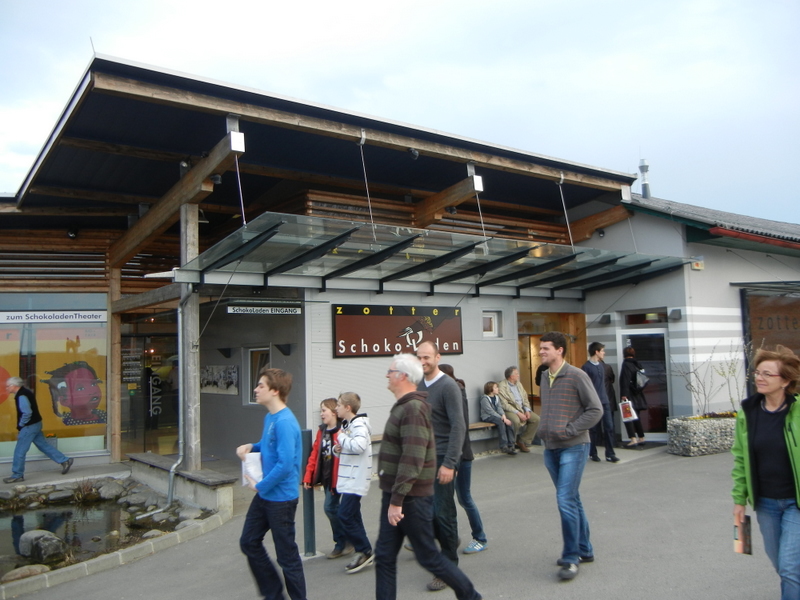
we make for the car with our loot - whose that guy in the back, left? 🙂
OK, now we were saturated with good food, good sweets, good wine and good views. Anything else? You bet! The final stop on our excursion was Schloss Kornberg, another castle, not in the same league with Riegersburg, but beautiful all the same. Dating from 1284, it’s now a gallery for arts and items crafted in the area. Christina and Gernot had wanted to show us the display of 5000 rugs from all over the world, but the vendor for that gallery had closed for the day. No matter, there was lots more to see!

from the Schloss website - aerial view of the castle
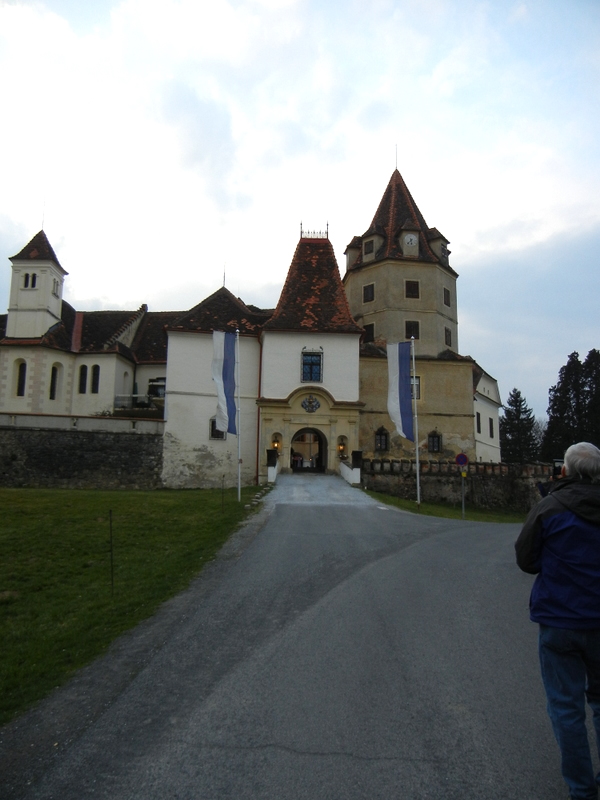
Castle Kornberg as we approach
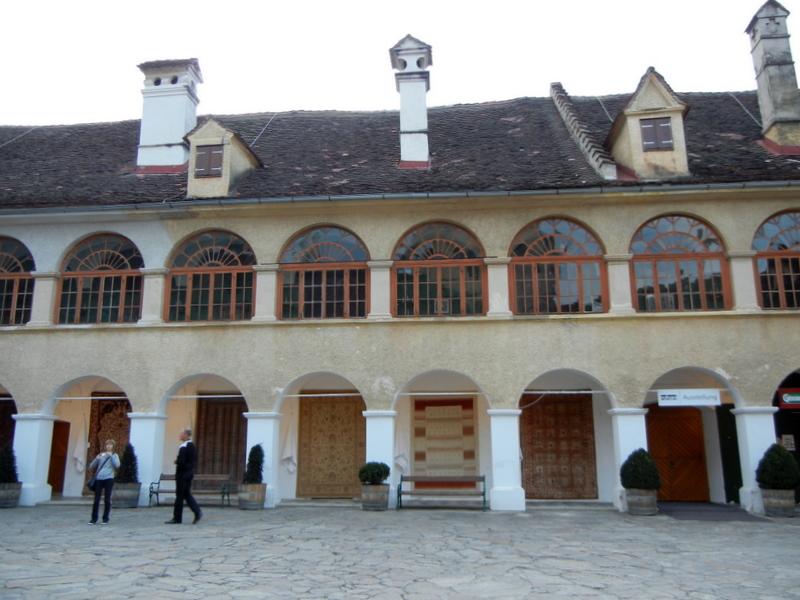
- interior Renaissance courtyard of Kornberg Castle
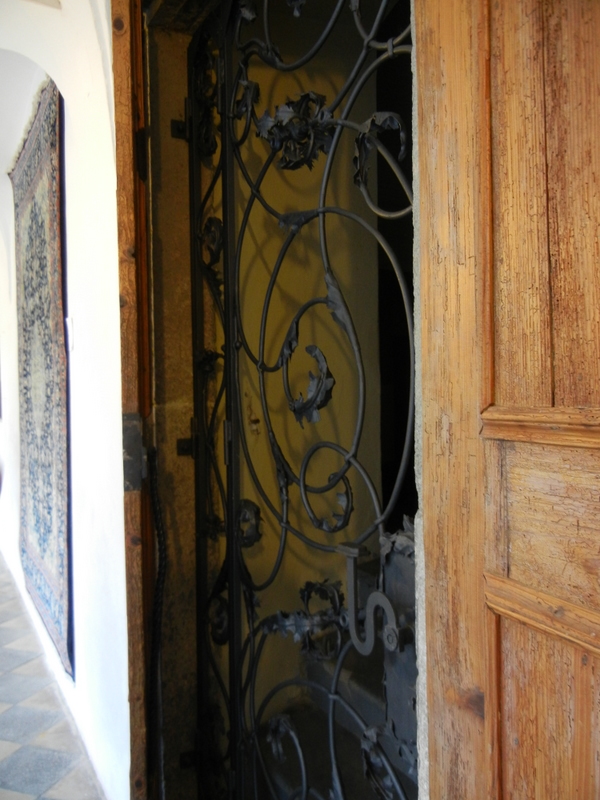
interesting iron work
And the shops had many handgesmacht items, perhaps most impressive of which were the Easter eggs in all sizes and styles of painting!
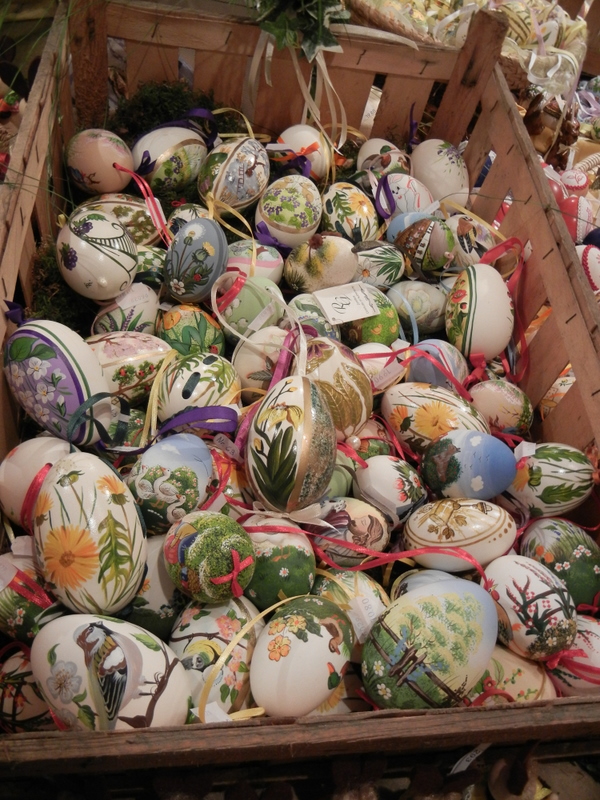
hand painted Easter eggs at Castle Kornberg
For those whimsical in nature, there were some adornments for the garden.

- funny bird garden decorations at Kornberg Castle
They actually reminded Bill and I of some bird ‘art’ we gave his mother, Flora, for a gift one Christmas. Sapsucker on Rock, it was called. I think she kindly displayed it for a season. When we went through things after her death, we found it carefully wrapped up in the basement. 🙂
Now we were done touring the countryside and it was time to come home. I had made a fresh strawberry pie early that morning, a real kochen-coup, considering I don’t have a proper pastry blender or pie pan! So, we came back to our flat and ate pie and talked for several more hours!
I can’t imagine what could top this, but stay tuned, you never know! Next week we are off to Vienna for some meetings, so I won’t be posting quite so regularly!
Thanks, as always, for reading!

